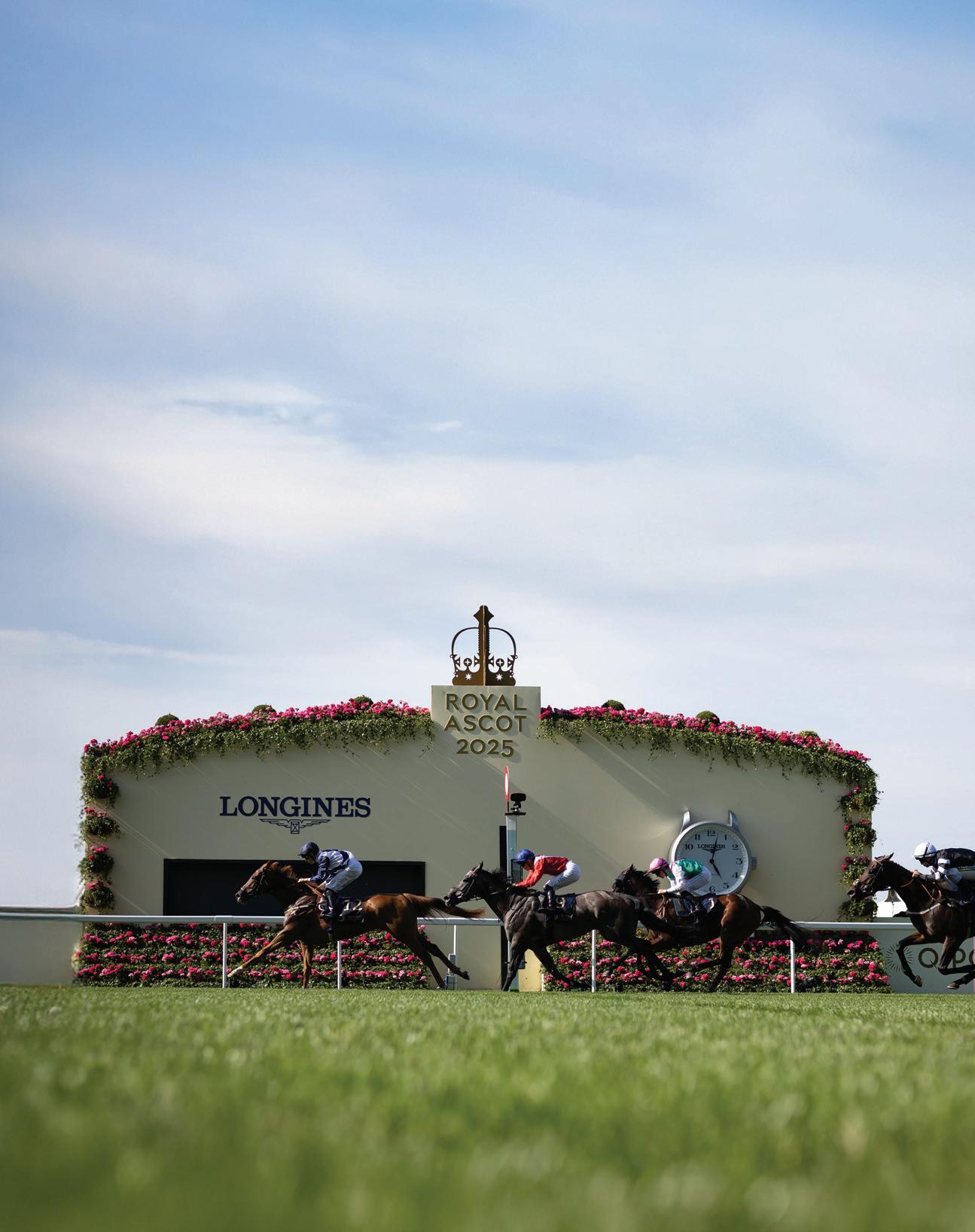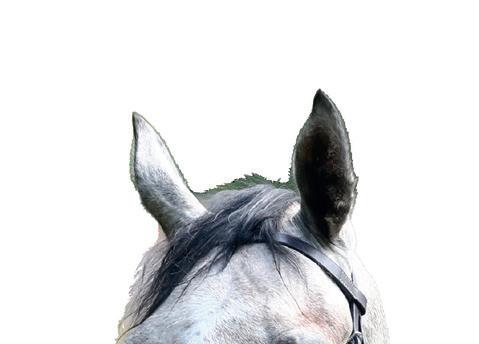
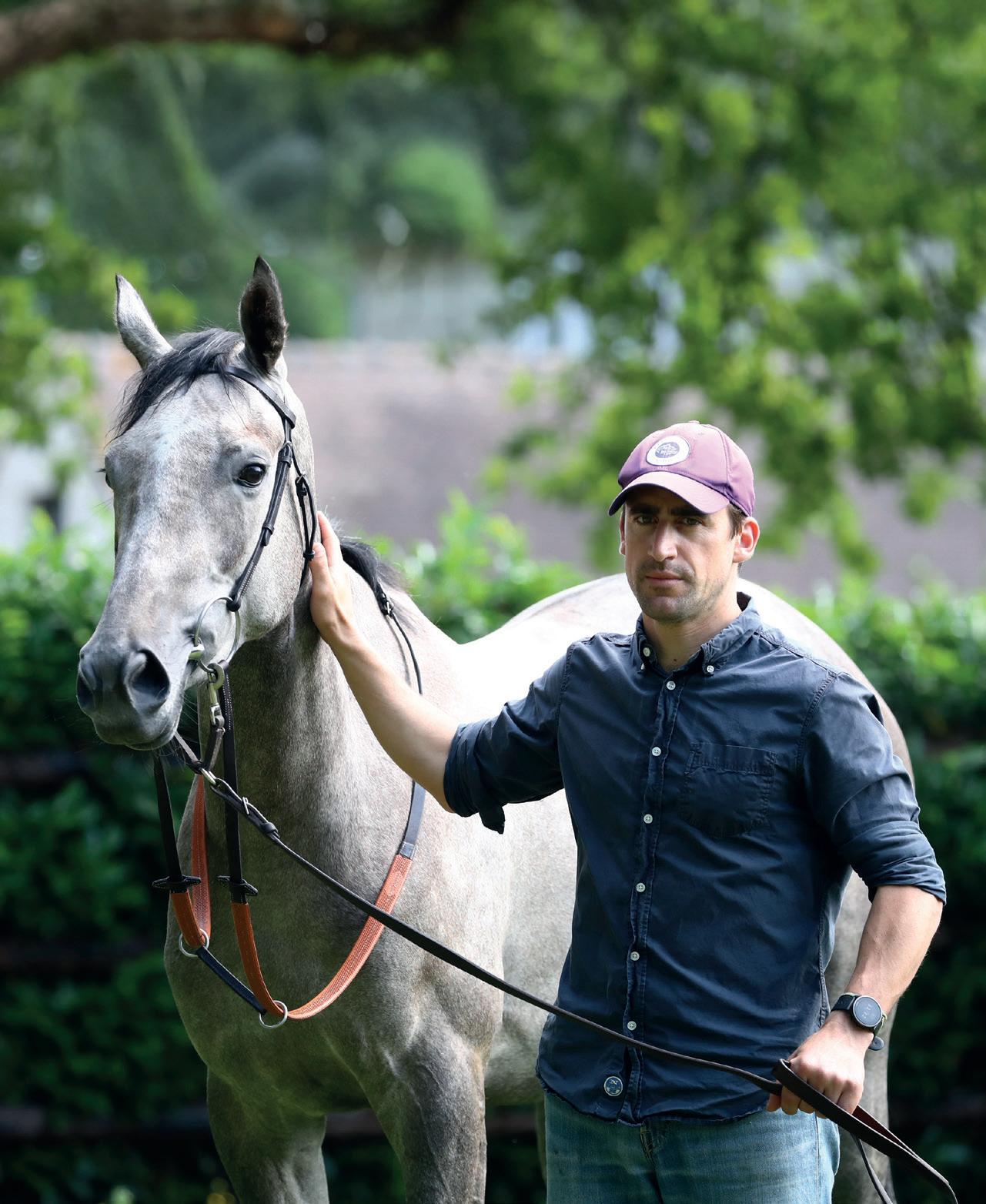



ITALIAN TRAINER MARIO BARATTI ON LEARNING FROM RACING’S ELITE AND HOW HE’S CREATED A CLASSIC WINNING STABLE IN THE HEART OF CHANTILLY
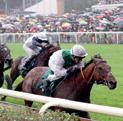
HAVE HORSE, WILL TRAVEL
International races trainers should target this autumn
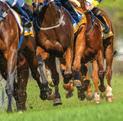
REDUCING THE RISK OF FRACTURES
Preventing serious fractures in the racehorse















In this issue, we feature Mario Baratti, a trainer born in Italy, who learnt his trade in Newmarket and Ireland before setting up on his own in Chantilly.
Now in his fifth season with a license, Baratti has already enjoyed Classic success. First with Angers who won the Gp.2 Mehl-Mülhens-Rennen (German 2000 Guineas) in 2023 and then a year later with Metropolitan, who won the Poule d’Essai des Poulains (Gp.1).
Baratti, is a young trainer whose stable is starting to grow in size. He values the support of owner breeder operations, a point he was keen to emphasise when interviewed by Katherine Ford.
“It’s very important to have owners who also have a breeding operation. They have a different outlook on racing and they are often the ones that produce the really top horses. They expect good results, of course, but they understand the disappointments and are generally more patient.”
Baratti, is realistic about the cost of racehorse ownership and reminds us that; “owning racehorses is a privilege and a passion. It is a luxury and people should treat it as such, not buy horses as a means to earn money. If you buy a magnificent yacht, it costs a fortune, and it’s pure outlay. Money spent on having fun. Nowadays, a lot of people invest in racehorses for business purposes, but they need to have the necessary means. If you are lucky to buy a horse like Metropolitan and then sell him for a lot of money, that’s another story, but it wasn’t the aim at the outset.”
Having already enjoyed international success, I am sure Baratti will be interested in our ‘Have Horse, Will Travel’ feature in this issue, which highlights opportunities this autumn for races across Europe, Turkey, North America, Bahrain, Australia and Japan.
In this issue, we also report from the 2025 Gerald Leigh Memorial lectures where we learnt about the latest research in laryngeal surgeries and tendon rehabilitation. Christopher Riggs tells us of the work being done on the prevention of serious fractures in the racehorse and Virginia Lisco tells us of the work being done to monitor and detect gene doping practices and understanding the future perspectives in breeding.
In the last issue, we covered the reviews being undertaken on the European Union’s laws on animal welfare. A big thank you to all the trainers who have taken time to complete our survey on European Thoroughbred Practices – the results of which we hope will make an impact with politicians across Europe in the coming months.
If you haven’t yet completed the survey, there is still time to do so – by August 15th. The more trainers who respond, the more impact the survey will have when current laws are being reviewed. Full details of the survey can be found on page 81.
Wherever your racing takes you this summer - good luck!



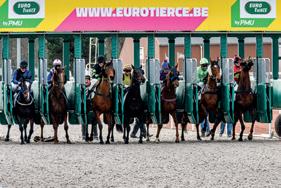
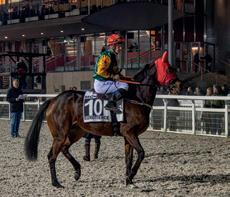
Belgium is at the crossroads of horse racing in Europe: UK, Netherlands, Germany, France are only a stone’s throw from our training centers!
To learn more about the opportunities to race and train in Belgium this year contact Bernard Stoffel +32 475 933 457 or by email contact@bgalopf.be

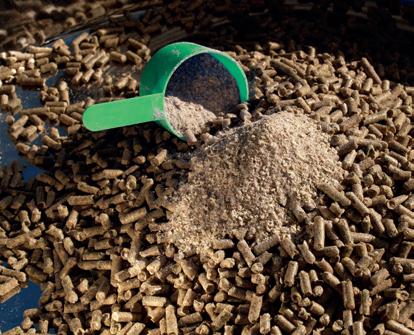

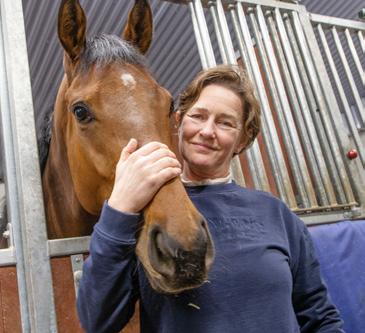
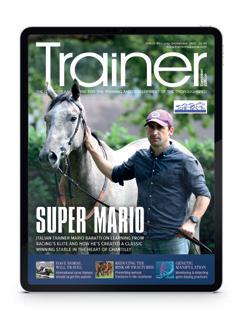
to download our current digital editions and access back issues of both European and North American Trainer
Lissa Oliver talks to Joseph Murphy –who saddled Cercene to win the Gp.1 Coronation Stakes at Royal Ascot.
Katherine Ford profiles Italian trainer
Mario Baratti on how he’s created a classic winning stable in the heart of Chantilly.
Corinne Hills advises on how to choose the most effective supplements to support your horse.
Lissa Oliver looks at the international racing opportunities that trainers should be targeting this autumn.
Laura Steley reports from the 2025 Gerald Leigh Memorial Lectures where we learn about the latest research in upper airway diagnostics & surgeries and tendon injury management & therapies.
Christopher Riggs tells us of the work being done on the prevention of serious fractures in the racehorse.
60 Can Spirulina help horses recover faster from intense exercise?
Jackie Bellamy-Zions interviews Wendy Pearson and Dr Nadia Golestani on how Spirulina could offer a promising tool for promoting health and performance in horses.
Virginia Lisco tells us of the work being done to monitor and detect gene doping practices and understanding the future perspectives in breeding.
Paull Khan reports from the 2025 EMHF AGM and profiles two trainers who topped their respective national championship tables for the first time last year.
Åsa Beckman looks at young racehorse development through the lens of biotensegrity and fascia science.
81
There is still time to complete our survey on European Thoroughbred Practices – closing date August 15.
The 2025 Breeders’ Cup World Championships will be hosted by Del Mar Thoroughbred Club in Del Mar, CA. Participants in the Breeders’ Cup World Championships are treated to an amazing weekend filled with world-class hospitality, entertainment, and equally incredible racing offering over $34 million in purses and awards, with seven turf races worth $12 million. Pre-entry deadline for all Championship races – Noon, Mon., Oct. 20, 2025
BREEDERS’
The Win & You’re In global stakes program features graded or group stakes in 15 countries. International starters will receive a travel award upon starting in any Championship race. All Win & You’re In Challenge winners receive free entry fees and an automatic selection to the Championships. You can’t win if you’re not in!
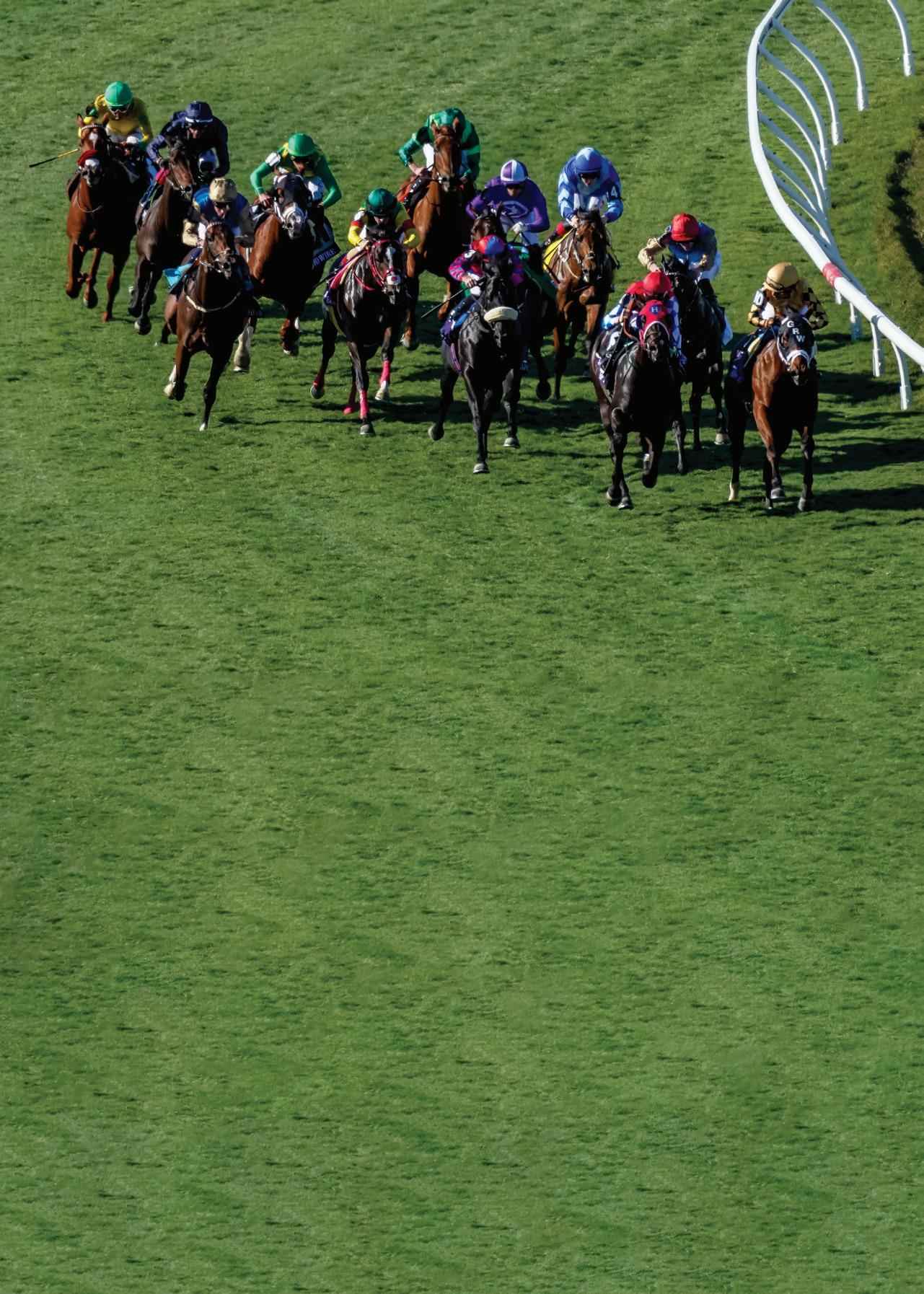
International Stakes Classic England 20-Aug York
5-Oct
5-Oct
5-Oct
Editorial Director/Publisher
Giles Anderson
Sub-Editor
Nico Jeeves
Design/Production
Damian Browning
Advert Production
Lauren Godfray
Circulation/Website
Lauren Godfray
Advertising Sales
Giles Anderson
Cover Photograph
Quentin Bertrand / APRH
Trainer magazine is published by Anderson & Co Publishing Ltd.
This magazine is distributed for free to all ETF members. Editorial views expressed are not necessarily those of the ETF. Additional copies can be purchased for £8.95 (ex P&P). No part of this publication may be reproduced in any format without the prior written permission of the publisher.
Printed in the European Union
For all editorial and advertising queries please contact: Anderson & Co. Publishing
Tel: +44 (0) 1380 816777
Fax: +44 (0) 1380 816778
email: info@trainermagazine.com www.trainermagazine.com
Issue 90
Åsa Beckman is a research-trained Equine Fascia Therapist with a background in biology and behavioural science. A former breeder and trainer of international show jumpers, she now works with fascia-focused therapy for racehorses, combining scientific insight and intuitive hands-on methods to support performance, recovery, and sensory awareness in equine athletes.
Jackie Bellamy-Zions has been Equine Guelph’s communications manager for the past ten years. Jackie has over 30 years of experience in the horse industry in the capacity of coach, trainer, stable manager, competitor, judge and journalist.
Katherine Ford was born in Yorkshire where she was raised with ponies, hunting and point to pointing. After completing a degree in languages and the BHA Graduate Development programme, she moved to France for a season with the International Racing Bureau’s Paris office. Three years later she joined French racing channel Equidia’s international department which took her on travels to racecourses from Brazil to Japan, California to Cape Town. She now splits her time between Equidia, Sky Sports Racing’s French coverage and freelance writing and translating, and dreams of future successes for the progeny of her two broodmares.
Dr Corinne Hills is a retired equine veterinarian with a general interest in equine nutrition. For 25 years in practice, she mainly focused on poor performance in racehorses, but she also worked on horses competing in endurance, equestrian sports, polo, and polocrosse. She believes that optimising nutrition, health, and soundness is the most efficient way to ensure that elite equine athletes can maintain consistent, top-level performance, and she believes that educating horse people is the best way to help them achieve that for horses under their management. Dr Hills and her husband own Pro-Dosa International Ltd.
Paull Khan, PhD. is an international horseracing consultant. He is a member of the Executive Council of the International Federation of Horseracing Authorities (the global peak body for thoroughbred racing) and Secretary-General of the European and Mediterranean Horseracing Federation. His other clients include the British Horseracing Board. Previously, Dr Khan held many senior roles at Weatherbys, including Banking Director and Racing Director.
Virginia Lisco, born and based in Italy and studied International and Diplomatic Sciences. She has always been passionate about horses and a few years ago discovered the world of horse racing which has since become her world. She has worked in some Italian stables, and subsequently sought to explore all areas related to racing. Her ambition is to thoroughly understand all aspects concerning the industry and the promotion of horse welfare.
Lissa Oliver lives in Co. Kildare, Ireland and is a regular contributor to The Irish Field and the Australian magazine, Racetrack. Lissa is also the author of several collections of short stories and two novels.
Chris Riggs BVSc, PhD, DEO, DipECVS, FRCVS studied Veterinary Science at the University of Bristol and received further training in Equine Surgery at the Royal Veterinary College. He was awarded a PhD for research into the causes of racehorse fractures in 1991. He worked as a Senior Lecturer at the Philip Leverhulme Equine Hospital, University of Liverpool, where he developed specialist skills in equine surgery. He joined the Hong Kong Jockey Club as Head of Veterinary Clinical Services in 2003 and was appointed to a new role in the Club as Director, HKJC Equine Welfare Research Foundation, Chief Advisor, Mainland Veterinary Engagement in 2019 and has held this position since.
Laura Steley BSc Hons in Equine Sports Science, is the Senior Stud Secretary at Shadwell Stud in Newmarket, alongside being the regular contributor for the Equine Health Update Section in Owner Breeder magazine. She has previously gained invaluable experience within the thoroughbred pre-training and rehabilitation sector, as well as fulfilling the role of an International Racing Data Analyst. Laura has a deep-rooted passion for equine science and feels passionately about applying scientific findings to sustain and improve equine welfare standards.

AIMS and OBJECTIVES of the ETF:
AIMS andOBJECTIVES of theETF:
a) To represent theinterests of allmembertrainers’ associationsinEurope.
a) To represent the interests of all member trainers’ associations in Europe.
b) To liaise with political and administrative bodies on behalf of European trainers.
b) To liaise with politicaland administrative bodies on behalf of European trainers.
c) To exchange information betweenmembers forthe benefitofEuropeantrainers.
c) To exchange information between members for the benefit of European trainers.
d) To provide anetwork of contacts to assist each member to developits policyand services to member trainers.
d) To provide a network of contacts to assist each member to develop its policy and services to member trainers.

Chairmanship:
GuyHeymans (B elgium)
CHAIRMANSHIP: Gavin Hernon (France)
Tel:+32(0)495389140
tel: +33 (0)7 87 16 02 48 email: contact@aedg.fr
Email: heymans1@telenet.be

Vice Chairmanship:
NicolasClément(France)
Tel:+33(0)344572539
Fax:+33(0)344575885
Email:entraineurs.de.galop@wanadoo.fr
VICE CHAIRMANSHIP: Paul Johnson (United Kingdom)
tel: +44 (0) 1488 71719 email: p.johnson@racehorsetrainers.org
Mrs Živa Prunk
Tel: +38640669918
Email: ziva.prunk@gmail.com

Joseph Vana
ITALY
Tel:+42(0)602429629
Ottavio Di Paolo
Email: horova@velka-chuchle.cz
tel: +39 328 355 95 81 email: ottaviodipaolo@gmail.com
Aggeliki Amitsis
Tel:302299081332+
Email: angieamitsis@yahoo.com

SWEDEN
GERMANY
Jessica Long
ErikaMäder
email: jplong@live.se
Tel:+49(0)2151594911
Fax:+49(0)2151590542
Email: trainer-und-jockeys@netcologne.de

Vice Chairmanship:
Christianvon derRecke (Germany)
Tel:+49(02254)845314
Fax:+49(02254)845315
Email: recke@t-online.de
VICE CHAIRMANSHIP: Christian von der Recke (Germany)
tel: +49 171 542 5050 email: recke@t-online.de
Mr Botond Kovács
Email: botond.kovacs@kincsempark.hu

BELGIUM
Agostino Affe
Email: affegaloppo@gmail.com
tel: +32 (0) 495389140 email: heymans1@telenet.be
Geert van Kempen
Mobile: +31 (0)6 204 02 830
Email: renstalvankempen@hotmail.com

GERMANY
Erika Mäder
Are Hyldmo
Mobile: +47 984 16 712
tel: +49 (0) 2151594911
Email: arehyldmo@hotmail.com
www.trainersfederation.eu

Treasu ship:
MichaelGrassick(Ireland)
TREASURERSHIP:
Tel:+353(0)45522981
Mobile:+353(0)872588770
Fax:+353(0)45522982
Feidhlim Cunningham (Ireland)
Email:office@irta.ie
tel: +353 (0) 45522981 email: office@irta.ie
Rupert Arnold
Tel:+44(0)148871719
Fax:+44(0)148873005
Email: r.arnold@racehorsetrainers.org

RUSSIA
Olga Polushkina
Email:p120186@yandex.ru
Birkje Hoorens Van Heyningen
tel: +31 (0) 250 930 016
email: birkjehvh@gmail.com
Jaroslav Brecka
Email: jaroslav.brecka@gmail.com

NORWAY
Tom Lühnenschloss
SWEDEN CarolineMalmborg
mobile: +47 (0) 46445345
Email: caroline@stallmalmborg.se
email: lynet3108@yahoo.no
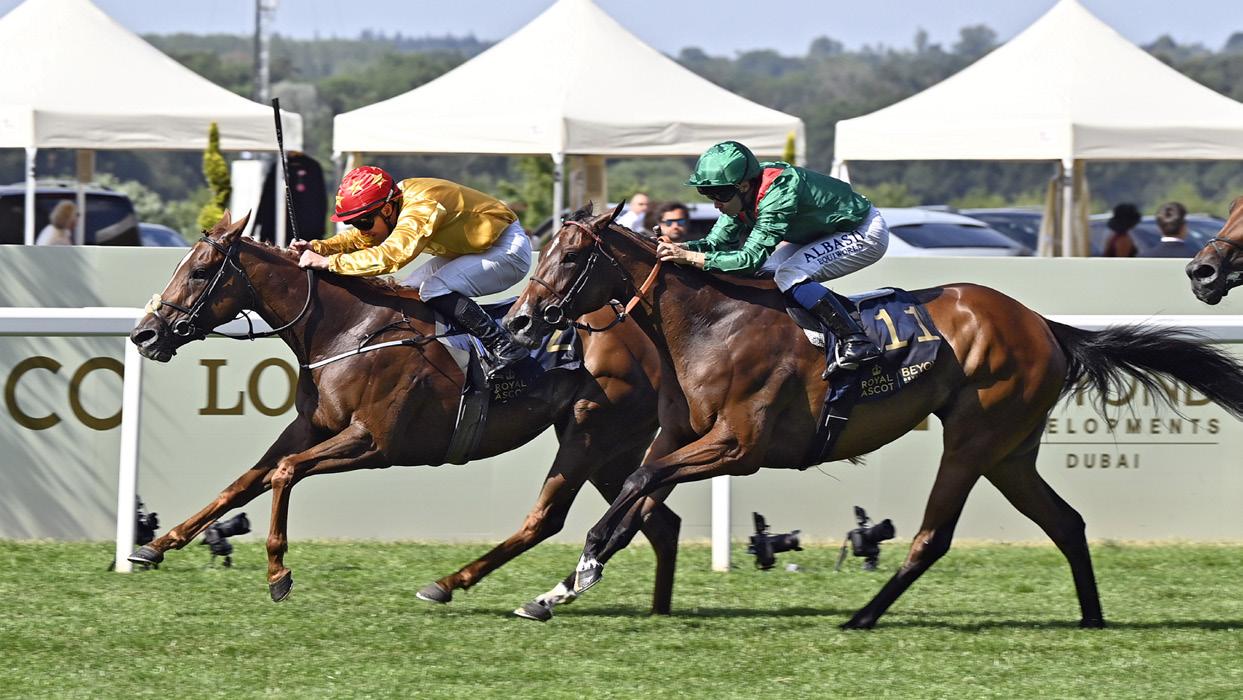
The Cavalor Trainer of the Quarter award has been won by Joseph Murphy. Murphy and his team will receive a Cavalor voucher of €1,000 for Cavalor supplements and care products as well as a consultation with one of their senior product specialists.
WORDS: LISSA OLIVER PHOTOGRAPHY: GALOPPFOTO.DE
Ihave been training for fifty years. Fifty years waiting for a Group 1 winner, we have been second and third in Group 1s, so we’ve been knocking on the door, but didn’t open it – today, we opened it. This is fifty years of work by the family, going from a small yard, switching from National Hunt to Flat, and buying horses and believing that they are going to be good. It is a lifetime’s ambition to have a Group 1 winner.”
So said Joe Murphy at Royal Ascot after saddling Cercene to become the longest-priced winner of the Coronation Stakes, which deservedly earns him our Trainer of the Quarter.
Murphy trained his first winner in 1977 and has enjoyed a steady stream of success in Group 2 and Group 3 races, despite the wait for a Group 1. Gustavus Weston, Only Mine, Euphrasia and Ardbrae Lady were probably his best-known horses before
Cercene delivered something of a surprise, though her form certainly didn’t reflect her long odds.
Now that the dust has settled, Murphy has a chance to reflect on Cercene’s achievement, although it was business as usual at his Crampscastle yard in Fethard, County Tipperary, when Vorfreude won the Ulster Derby at Down Royal the following afternoon, breaking his maiden at the sixth time of asking, having run up against some very good horses but nevertheless never finishing out of the first three this season.
“Cercene is just a really beautiful filly to have,” says Murphy. “The secret to her is to have the courage not to work her. When she’s fit we just leave her to herself, she seems to know. She may be small but she has a strong physique and a very strong, healthy constitution. She loves her work and she loves being in training. After Ascot we planned to give her a break for a week, but you
Cercene and jockey Gary Carroll produced a battling display to beat French 1,000 Guineas winner Zarigana in the 2025 Coronation Stakes for Joseph Murphy at Royal Ascot.
could see straight away she wanted to be out on the gallops and in her usual routine. She was ridden out on Tuesday, back in her happy place.”
It is hard to know why Cercene was sent off at 331, having finished so well in the Irish 1000 Guineas and with many of the Coronation Stakes runners behind her at the Curragh. Now the plans, not the odds, are big.
“We are playing with the Irish Oaks in our minds, but really we’d be more aiming for the Nassau Stakes and Matron Stakes and the Breeders’ Cup, the gaps fit in quite well.”
Murphy acknowledges the help of his wife Carmel, son Joseph and daughter-in-law Olive, and the whole team at Crampscastle, “all good staff” and reveals Fethard is the perfect training centre. “The farm has always been a training establishment, originally Larry Keating was here and it has all the facilities, the original grass gallop and a nine-furlong (1800m) and seven-furlong (1400m) sand and fibre gallops, plus a three-furlong (600m) warm-up.”
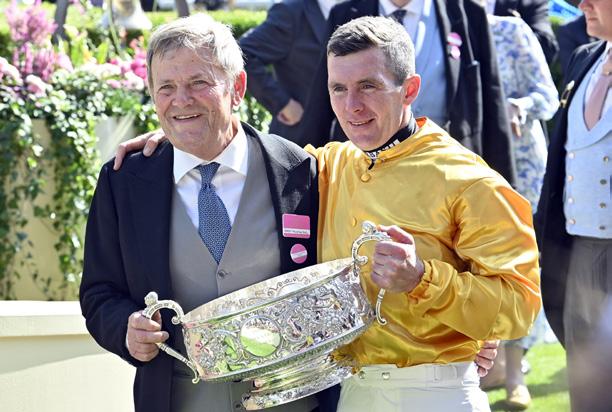
there, Eddie O’Grady, Timmy Hyde, Mouse Morris, it was an unbelievable academy. A wonderful place to be and to get insight into the training of racehorses.”
Reflecting on his early beginnings in Kilkenny with his first two horses, Haybob and Vibrax, Murphy was privileged to be a part of what he describes as a “wonderful academy” under Willie O’Grady at Killeen. “There were so many great names
That insight has certainly stood well to Murphy and with the likes of Lord Massusus, Vorfreude and Shiota, all, like Cercene, on an upward career path, it shouldn’t be another long wait until his next Group 1.




CAVALOR FREEBUTE & CAVALOR LACTATEC
Cavalor FreeBute supports muscles and joints for improved mobility. FreeBute will offer relief from discomfort in the recovery process after heavy effort. Cavalor LactaTec is a complete supplement that supports muscle activity, stimulates muscle recovery and prevents stiffness, damage, and fatigue in a variety of ways.
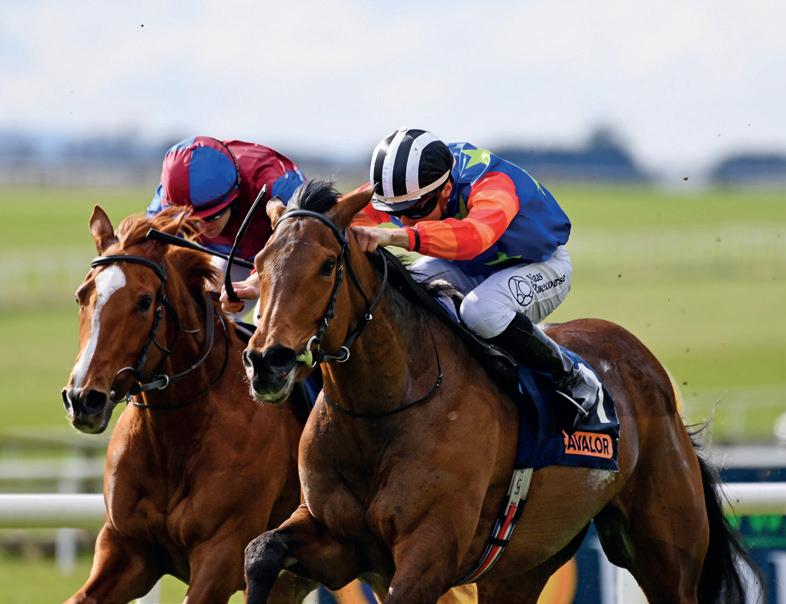
WORDS: KATHERINE FORD PHOTOGRAPHY: CLEMENTINE VERET & QUENTIN BERTRAND / APRH, GALOPPFOTO.DE
Mario Baratti is sitting behind the desk in the spacious office of his stable off the main avenue leading into Chantilly, munching a croissant in between second and third lots. I decline his offer of breakfast, and we quickly agree to communicate in French and to use the friendly “tu” form instead of the more formal “vous”.
Above the trainer’s right shoulder, a large watercolour depicts a scene of Royal Ascot, “it was a wedding gift and it was too big for the house so it has a perfect place here… The colours are beautiful and it’s a wonderful source of inspiration!” The walls are also adorned with photos and a framed front page of French racing daily Paris-Turf showing Baratti’s two Classic winners to date, Angers who lifted the German 2000 Guineas at Cologne in 2023 and Metropolitan who propelled his handler onto the big stage with a first Group 1 victory in the Poule d’Essai des Poulains a year later. There is plenty of space left for memorabilia which seems sure to come to celebrate wins in the future.
Born and raised in Brescia in North-West Italy near Lake Garda, Mario Baratti has a slightly different profile from several of his compatriots who are now successfully operating in Britain and France. The 35-year-old does not
hail from a big racing family and he has little experience of training in his native country.
He explains, “My father was a great sportsman and was good at a lot of sports. Between age 18 and 25 he rode over jumps as an amateur. I started riding very early, at age four or five, and showjumped and evented when I was young and then started riding as an amateur as soon as I could. I was a true amateur as I didn’t start working in racing until I was 19. I was lucky to ride about 70 winners, in Italy but also in Britain and France, in a relatively short career in the saddle.”
A couple of summer stints with John Hills in Lambourn as a teenager further fuelled the young Mario’s passion for racing and he soon joined Italy’s legendary trainer, Mil Borromeo in Pisa, “Mil Borromeo was a great trainer, very sensitive and with an amazing capacity to listen to his horses. His objective was to create champions and he succeeded many times during his career. He was on the same level as the top trainers from England, Ireland and France from the time. He was very sensitive and attentive to his horses. My official title with him was assistant but I was so young I was more of an intern.”
After a year with the Classic Italian trainer, Borromeo advised the young Barrati to spread his wings and continue his education, both in racing and academically.
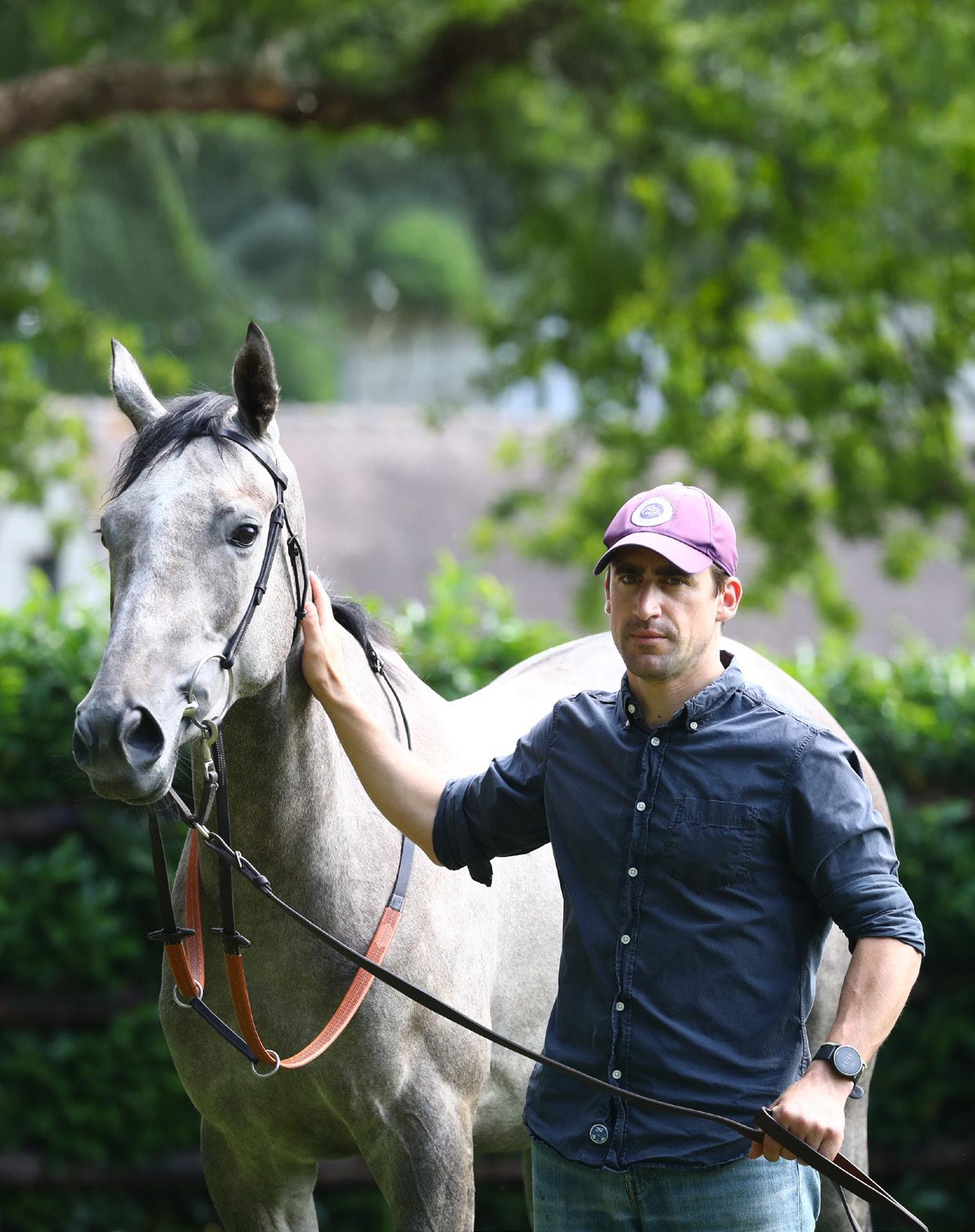
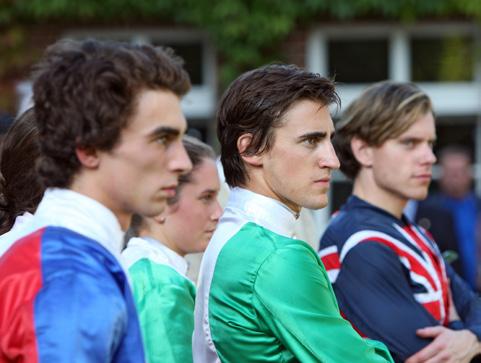
The logical port of call was Newmarket and the stable of training’s rising Italian star of the time, Marco Botti. “I used to ride out in the mornings and go to Cambridge in the afternoons to learn English. The original plan was to spend just a year in England to pass a language exam, but after I passed the exam, Marco Botti proposed the position of assistant if I stayed with him. When I started he had less than 50 horses and during the four years I was there the number rose to over a hundred so it was a real growth period. I had the good fortune to ride horses like Excelebration who was exceptional, and to travel to Dubai, or Santa Anita for the Breeders’ Cup... He had six or seven real high-quality Group horses, who could travel and win abroad.
I learnt many things during my time with Marco and the most important was probably how to manage the horses in the best possible way to optimise their potential. I think the
I LEARNT MANY THINGS DURING MY TIME WITH MARCO AND THE MOST IMPORTANT WAS PROBABLY HOW TO MANAGE THE HORSES IN THE BEST POSSIBLE WAY TO OPTIMISE THEIR POTENTIAL.”
secret to his international success is that he travels his horses at the right moment. He understands when a horse is tough enough to go abroad, and he doesn’t take them too early in their careers.”
After four years in the buzzing racing town of Newmarket, it was time to continue the learning curve and despite an offer to join another compatriot, Luca Cumani, Baratti remembers, “everyone advised me to go to America or Ireland.” So the young Italian found himself in rural County Kilkenny. “Jim Bolger said he would only take me if I stayed for three years, but in the end I cut my time short. It was a very good experience and I learnt a lot about breaking in yearlings and working with youngsters. I learnt what I could in a short time as I was only there for three or four months, an intense experience of work and life. Mr Bolger is a real horseman, who is tough on his horses but always manages to produce champions. He can do things that others cannot allow themselves to do, because he breeds and owns a lot of the horses himself.”
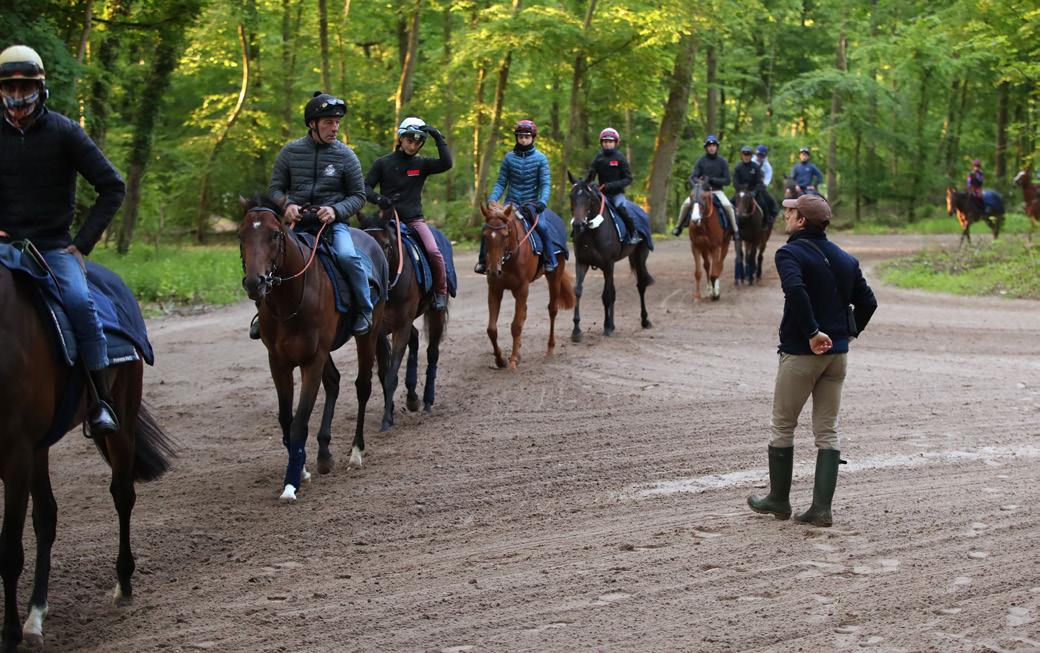
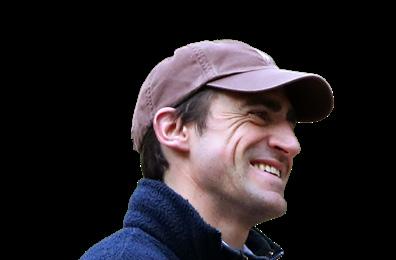
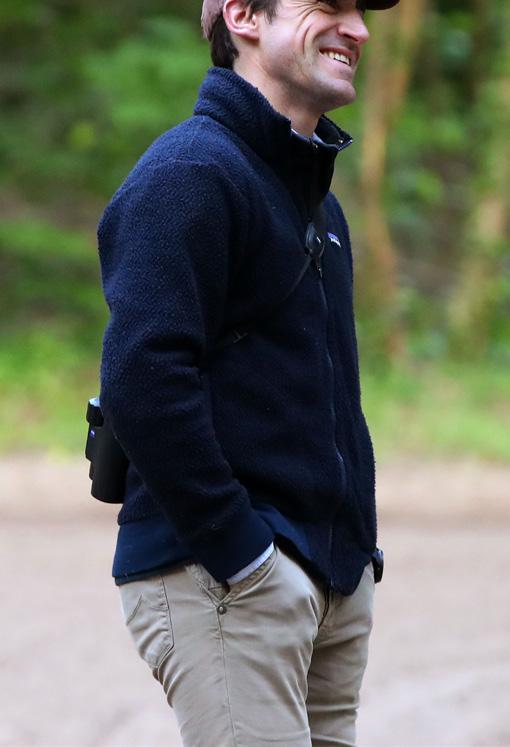
Despite the prestige of his Classic-winning mentor, Baratti was unable to settle in Ireland. “I like the countryside, but I was isolated. I was 25 years old and never saw or spoke to anyone and the lifestyle wasn’t for me. So one day I told him, “I can’t stay three years”, and he said, “you want to train in London? You can’t train in London!” I’ll never forget that! But he understood and in the end he said, “I’ve taught a lot of top professionals, McCoy, O’Brien, but it’s up to you if you want to leave. I hope that you find someone as good as me…””
Next stop was France, and Baratti took advantage of a couple of months before his start date with his next boss, Pascal Bary, to join fellow Italian Simone Brogi who had recently set out training in Pau. He also spent a month with Brogi’s former boss, JeanClaude Rouget, at Deauville’s all-important August meeting.
“The time helped me to learn French and integrate into the French ambiance, which wasn’t easy. I found it much tougher to settle in France than in Newmarket. As a foreigner I felt less well received. Even at Newmarket, I started as an assistant when I was 18 years old, with no experience, and it was tricky to manage a team of 25 or 30 staff. But when I started here it was even more difficult to handle the French staff. They would say to me ‘I’ve never done that in 30 years and I’m not going to start now…’ During the early days with Pascal Bary, I thought that France wasn’t going to be for me. Then it became a personal challenge and I decided to stick it out. Now, Pascal is one of the closest friends I have here in Chantilly, but at the start he wasn’t an easy boss.
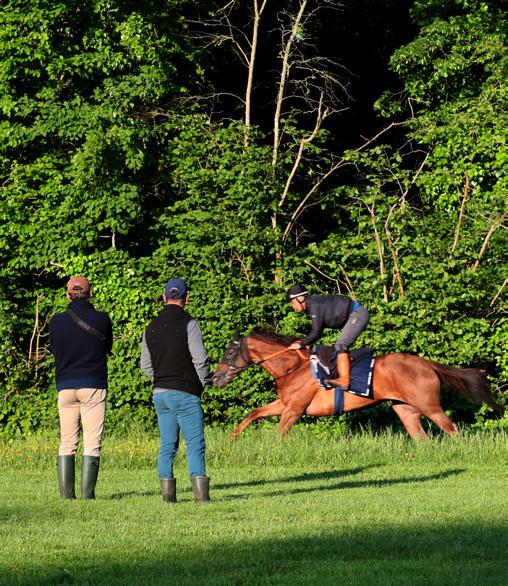
DURING THE EARLY DAYS WITH PASCAL BARY, I THOUGHT THAT FRANCE WASN’T GOING TO BE FOR ME. THEN IT BECAME A PERSONAL CHALLENGE AND I DECIDED TO STICK IT OUT. NOW, PASCAL IS ONE OF THE CLOSEST FRIENDS I HAVE HERE IN CHANTILLY.”

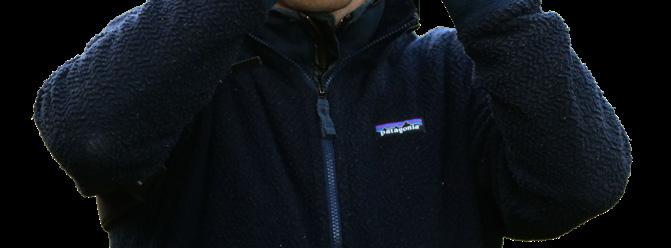
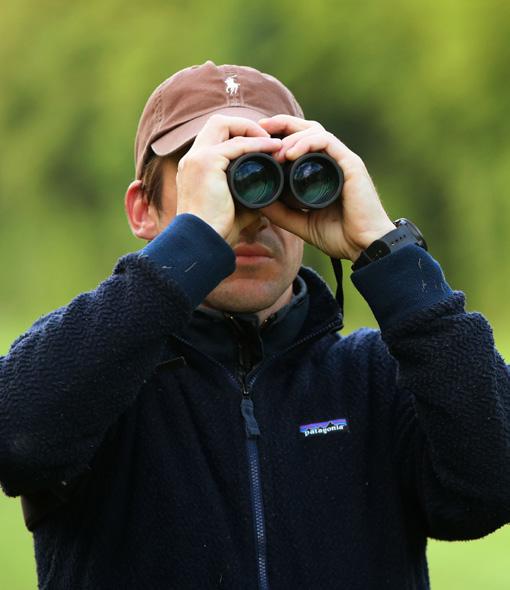
IT’S A MAGNIFICENT SITE; WE ARE SO LUCKY TO HAVE SUCH BEAUTIFUL SURROUNDINGS AND FOR ME TO BE ABLE TO ACCESS THE GALLOPS ON FOOT.”
It took two years, of the four that I was there, before we built up a real relationship. On my side, I was very respectful, and I saw him as someone who was very reserved, so we kept our distance. I was in awe of him and his career. He wasn’t interested in just winning races, he wanted to develop the best out of his horses. That’s why he had such a great career. 41 Gp.1 wins in a 40-year career is a huge achievement. He won Dianes, Jockey-Clubs, Poules, Guineas, Breeders Cups, the Irish Derby… He’s the only French trainer to win the Dubai World Cup. He started off going to California for the Breeders’ Cup when he was very young. He would dare to step into the unknown, because at the time it was much more complicated to travel around the world.
I was lucky to be there at the time of Senga – who won the Prix de Diane and Study of Man won the Prix du Jockey-Club. So I worked with top horses, who were perfectly managed, and many of them were for owner-breeders. Very early in the season, when the grass gallops opened, he would immediately pick out the three or four standout horses and plan their programme. He could tell right away which ones had talent ‘this one will debut in the Prix des Marettes at Deauville…’ I remember that year the filly did exactly that and won; it was Senga and she went on to win the Diane.
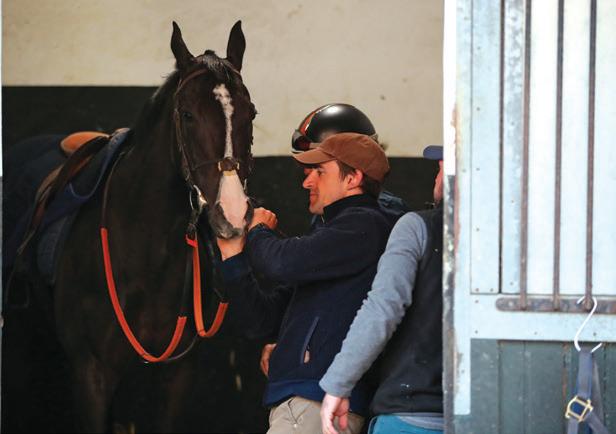
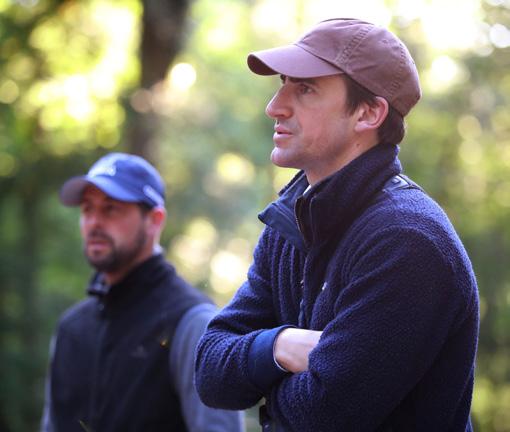
When you spend time with someone at the end of their career, there is more to learn. Pascal Bary had a superb training method, and he had the success he did because he was very firm in his decisions. He’s not someone who changes his mind every day, and there aren’t many people like that nowadays. He was very sensitive to his horses and always sought to create champions. I try to keep in mind his method.”
The string for third lot is now ready to pull out and we make our way through the yard which has been adapted to accommodate an expanding string.
“We recently acquired the next-door yard and we knocked through the walls of a stable to make a passageway between the two. I now have 73 boxes in these two yards, plus 15 at another site which has the benefit of turnout paddocks.”
Through a gate in the hedge at the back of the courtyard and we are straight onto the famed Aigles gallops as the sun starts to break through the clouds on what had begun as an overcast morning.
“It’s a magnificent site; we are so lucky to have such beautiful surroundings and for me to be able to access the gallops on foot.”
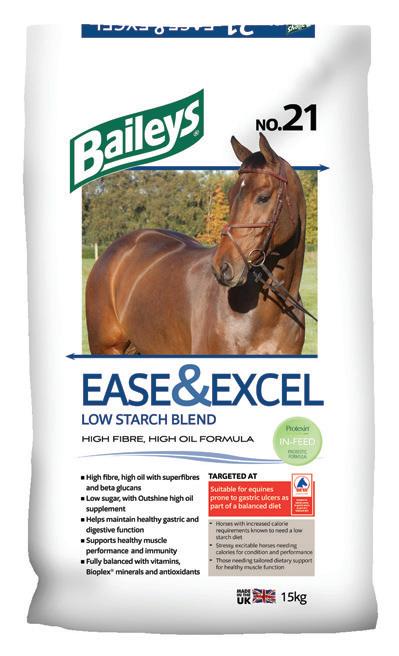
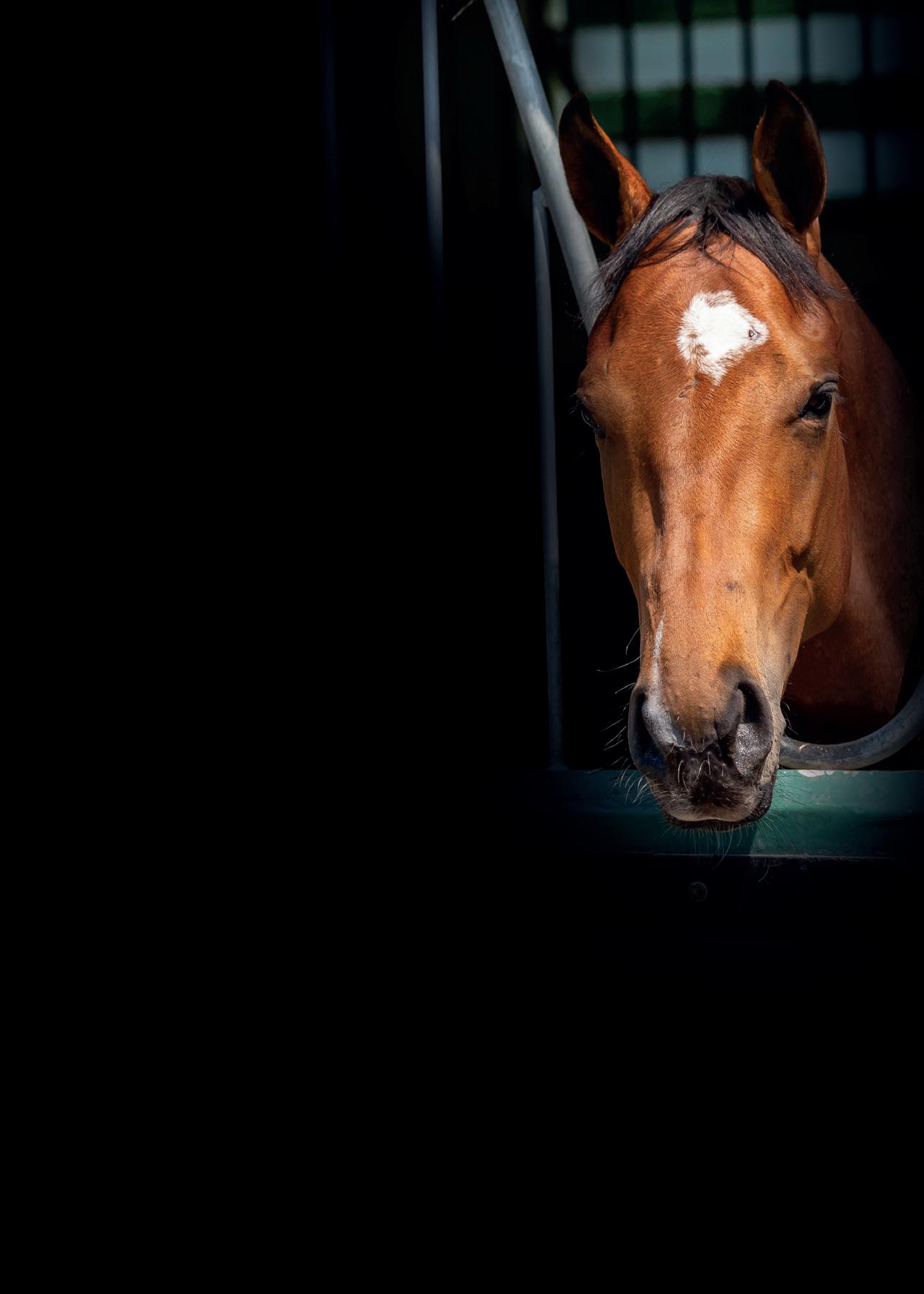



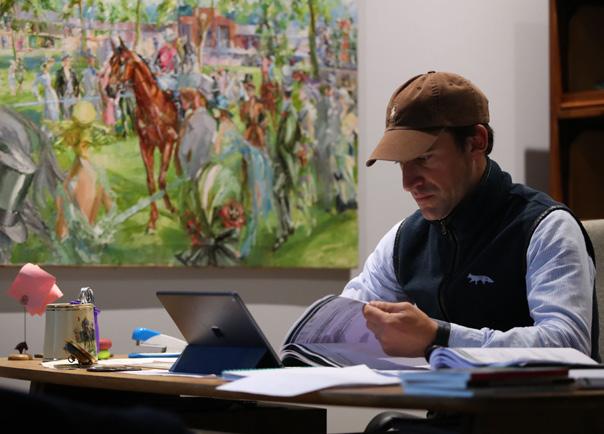
As we make our way to the walking ring in the trees where the Baratti string circles before and after work each morning, the trainer tells me, “I still ride out every Sunday, bar only two or three weeks in the year. I think it’s important to exercise as many as we can on a Sunday and if I ride two, that’s a help to the staff and a real pleasure for me too.”
The string of around twenty juveniles, many still unraced, passes before the trainer who gives multilingual orders. “Here we speak Italian, French, English, Arabic and Czech,” he explains, “we try to all speak French but of course sometimes we communicate in Italian, especially when things get heated! We’ve more than doubled in size since last autumn and so we built up the new team throughout the winter and in spring. It’s all coming together now. For the first few years everything went very smoothly, but there were only half a dozen members on the team! When you get up to 25, it’s a different story.”
The team includes a couple of former Italian trainers who left their country and now work as managers for the burgeoning Baratti stable, plus veteran Filippo Grasso Caprioli, Mario’s uncle who was a leading amateur rider in Italy in his time. “He “just”
WE’VE MORE THAN DOUBLED IN SIZE SINCE LAST AUTUMN AND SO WE BUILT UP THE NEW TEAM THROUGHOUT THE WINTER AND IN SPRING. IT’S ALL COMING TOGETHER NOW.”
rides out, he doesn’t have a position of responsibility but he does give us the benefit of his age and experience!”
Another vital member of the team is Monika, Mario’s Czechborn wife. “We first met at the Breeders’ Cup when I travelled with Planteur and she was the work rider of Romantica for André Fabre. When I first moved to France we both lived in the same village, 100m away from each other but we never bumped into each other. We met again four years after I moved to France. We’ve been together now for seven years and married this spring. Monika is an excellent rider and she also takes care of the accounts, but her most difficult job is taking care of our two small boys. I think she sometimes comes into the yard for a break!”
As we trudge across the damp turf to the Réservoirs training track, Baratti expands on his choice of Chantilly. “When I was in Newmarket I thought I would never leave, but then it was logical to continue here after I had done my time with Pascal Bary. And of course, the French system is very beneficial compared to elsewhere in Europe. The facilities here in Chantilly are second to none. When I first started I used to use all of the gallops but now I have my routine and regularly use Les Réservoirs.
“I’ve noticed a change in the wellbeing of their backs and their condition since we’ve been using Fairfax”
- William Haggas
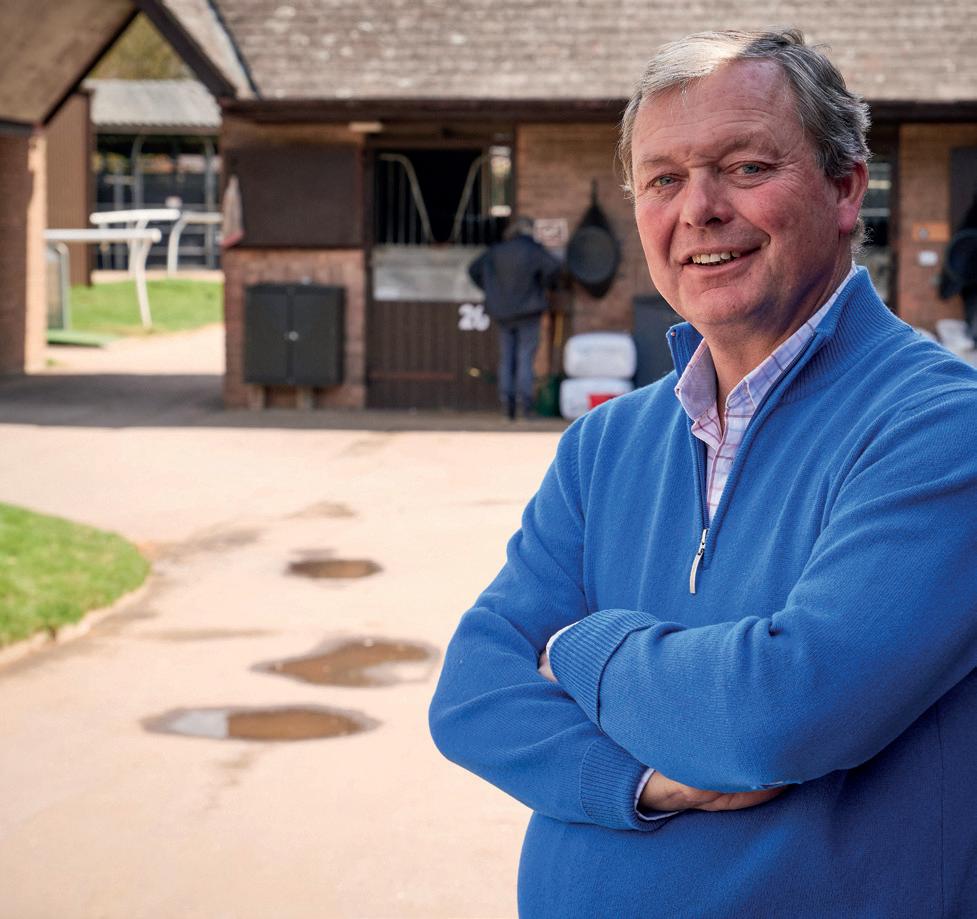
Economics, Winning the Dante, York, in the Fairfax Bridle
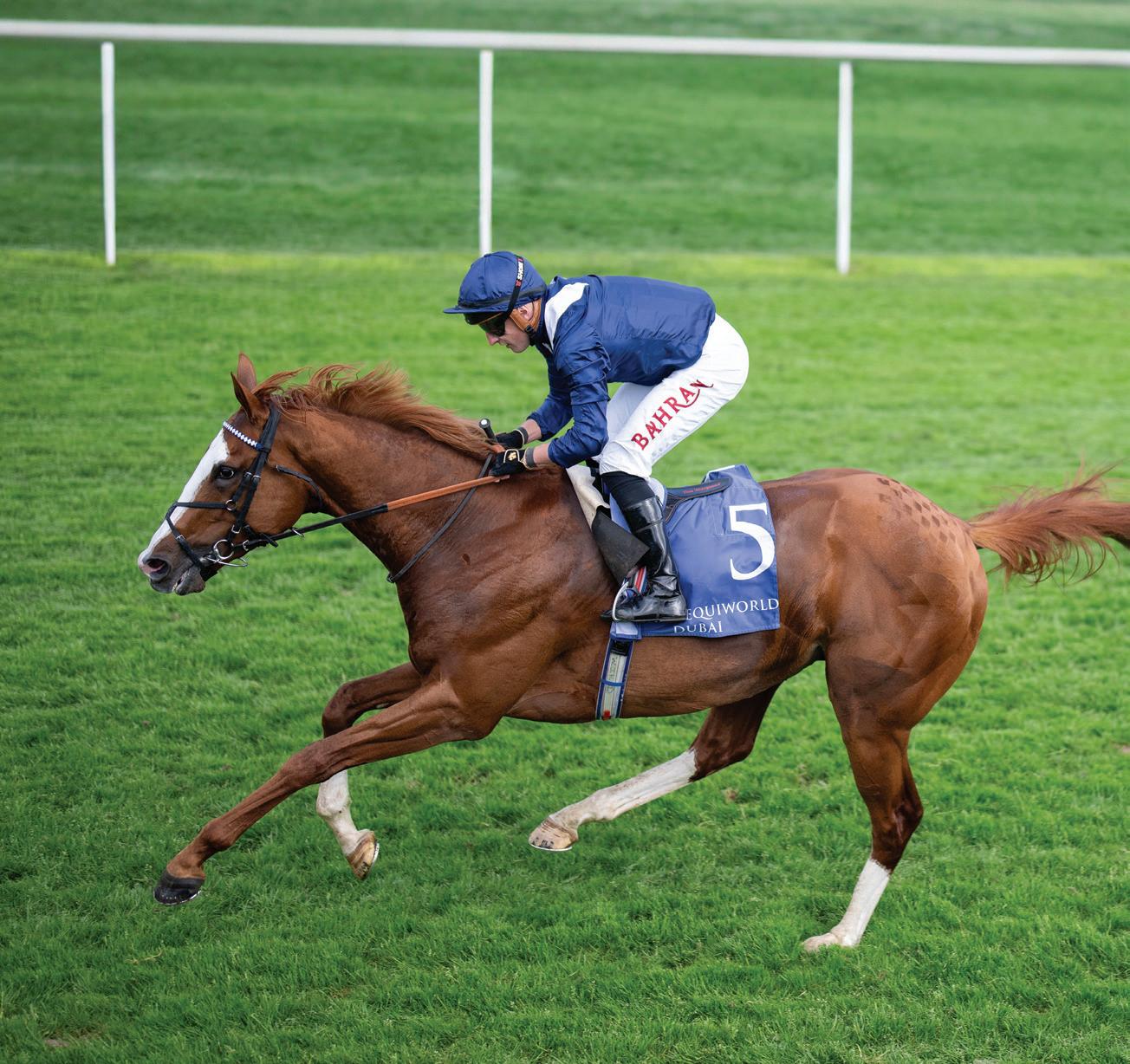

I often use the woodchip but there is plenty of choice. Once you have understood how each track works then it’s simple.”
The first group of two-year-olds canter past, and Mario runs through some of the sires represented: Siyouni, Lope de Vega, Wootton Bassett, for owners such as Nurlan Bizakov, Al Shir’aa, Al Shaqab and powerful French operators such as Laurent Dassault, Bernard Weill and others.
“This is the first year that I’ve had such a good panel of owners, and a better quality of horses. It is certainly thanks to Metropolitan and the successful season we had last year. In previous years, we did well with limited material, and we managed to win Listed or Gp.3 races which isn’t easy when you only have 20 horses. This year we have more horses but haven’t won any big races yet (he laughs nervously) but they will come…”

Indeed days after the interview, the stable enjoyed a prestigious Group success on Prix du Jockey-Club day with the Gérard Augustin-Normand homebred Monteille, a sprinting filly who was trained last year by the now-retired Pascal Bary.
“It’s very important to have owners who also have a breeding operation. They have a different outlook on racing and they are often the ones that produce the really top horses. They expect good results, of course, but they understand the disappointments and are generally more patient. The other owners are important too, and Metropolitan, who we bought at the sales, is the proof of that.”
BELOW: Homebred filly Monteille defied odds of 29-1 to run away with the Gp.3 2025 Prix du Gros-Chene under Cristian Demuro at Chantilly.
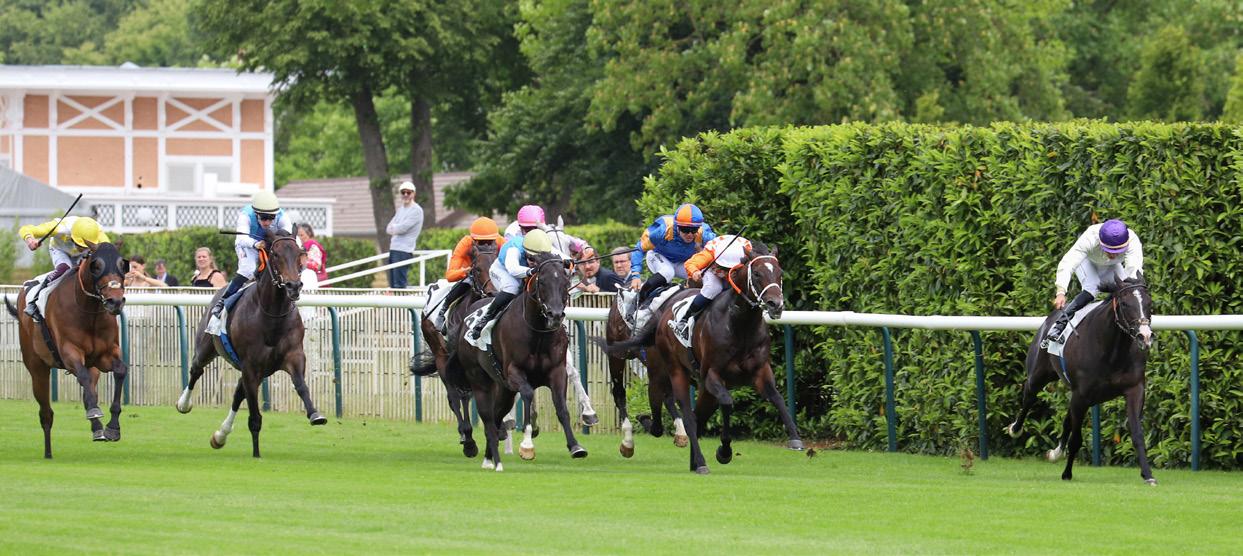
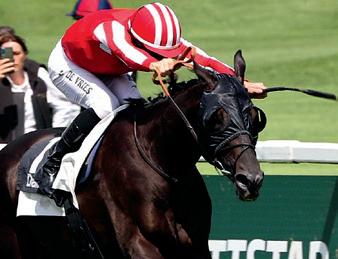
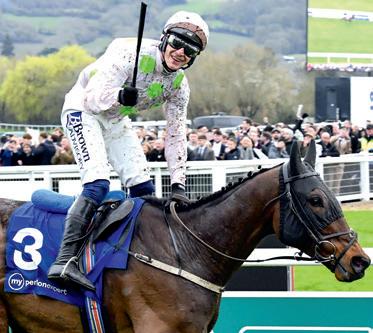
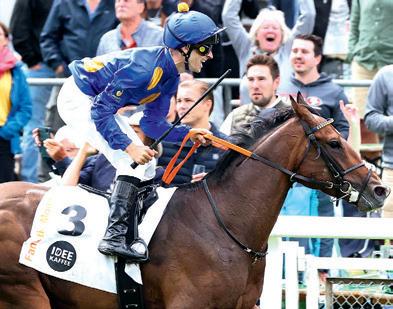
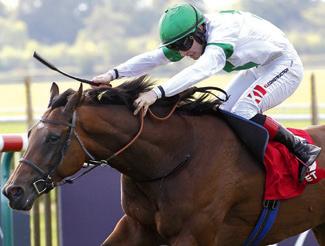
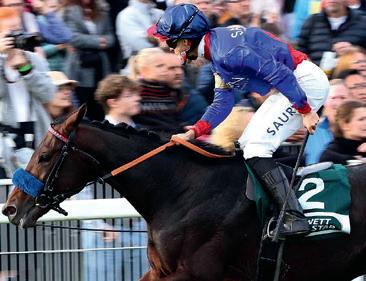
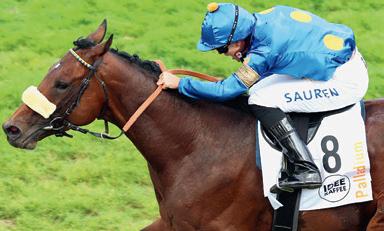


Understandably, a smile widens across Mario’s face as he remembers the day when the son of Zarak lifted the Poule d’Essai des Poulains to offer the trainer his first major Classic winner.
“I was only in my fourth year of training, it wasn’t even in my dreams to win a Poule so soon in my career. It’s hard to describe, the joy was enormous. The fact that we ran in the race again this year, with a very good horse (Misunderstood) but everything went wrong, makes you realise now how difficult it is for everything to go right on a day like that. I always thought that Metropolitan was an exceptional horse. We were far from favourites in the Poule but I knew we had a good chance of winning. The owners rang me on the morning of the race and asked, ‘Mario do you think we can win?’ and I said Yes! He had finished fifth in the Prix de Fontainebleau and we had ridden him to avoid a hard race, but still, many observers overlooked him. Apart from in his last race on Champions Day, he never put a foot wrong. He confirmed his class when third in the St James’s Palace Stakes in a top-class field and then was beaten by the best four-year-old miler in Europe, Charyn, in the Jacques le Marois. And at the time, we only had three or four three-year-olds in the yard, so the percentage was amazing.”
Baratti had already tasted Classic glory a year earlier, thanks to Angers (Seabhac) who won the Gp.2 Mehl-Mülhens-Rennen (German 2000 Guineas). A first successful international raid from the handler who learnt from some of the industry’s specialists.
“You travel if your horse is very, very good, or not quite good enough,” he explains.“If you travel to Royal Ascot, you have to be exceptional, the same for the Breeders’ Cup. But for Germany you can take a decent horse who isn’t quite good enough for the equivalent races here. Angers had finished second in the Prix
Machado which is a trial for the Poule d’Essai. I already had Germany in mind for him if he was placed in the Machado, and he went on to win well in Cologne. Every victory is very important, the key is to aim for the right race within the horses’ capabilities. Each horse has his own “classic” to win, with a made-to-measure programme.”
Many expatriate Italian trainers target Group entries in their native country, but Baratti is not keen to explore this option. “I have never had a runner in Italy. I did make an entry recently but we ended up going elsewhere. Italian black-type is very weak for breeding purposes, so it’s not really worthwhile for me to race there. There are a lot of good professionals in Italy but I don’t really have much connection with them because I’ve never worked over there, I left when I was young.”

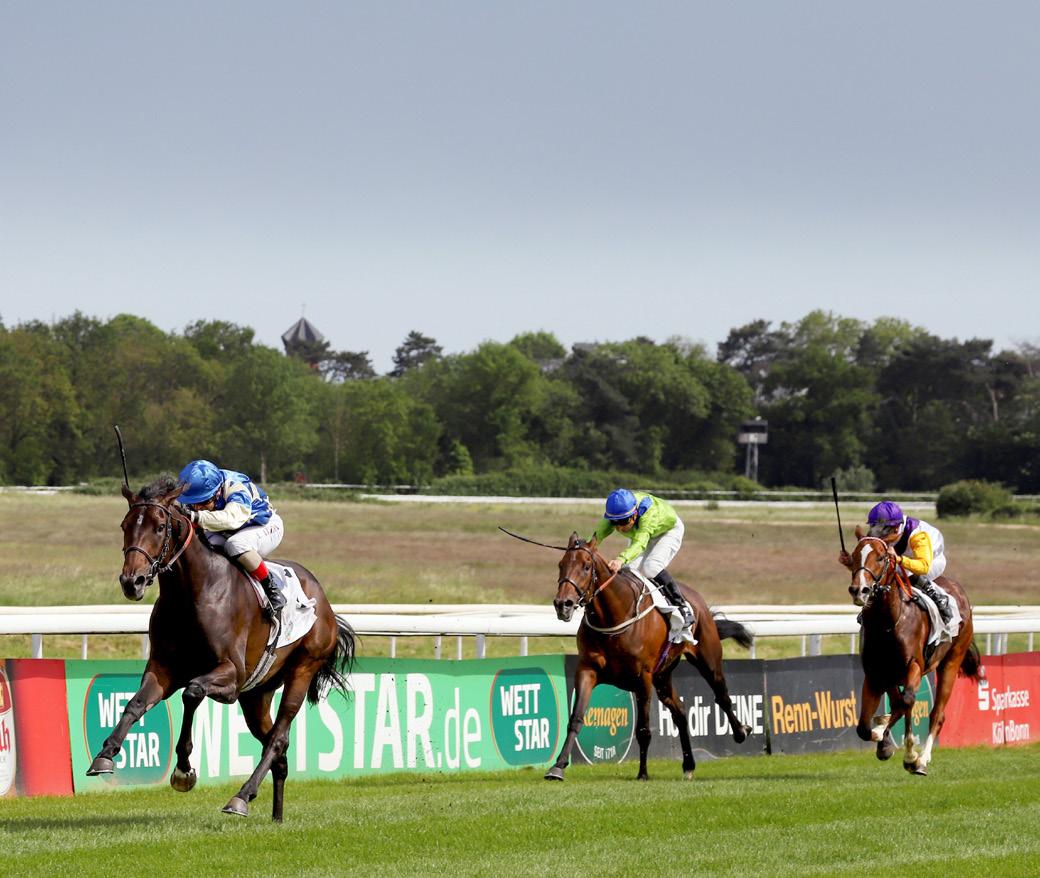
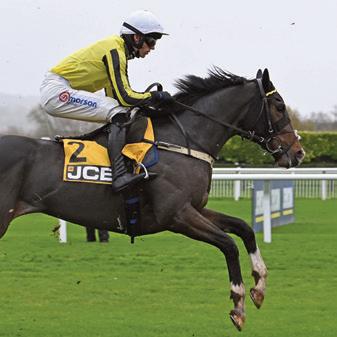

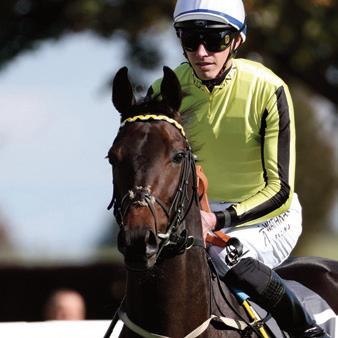
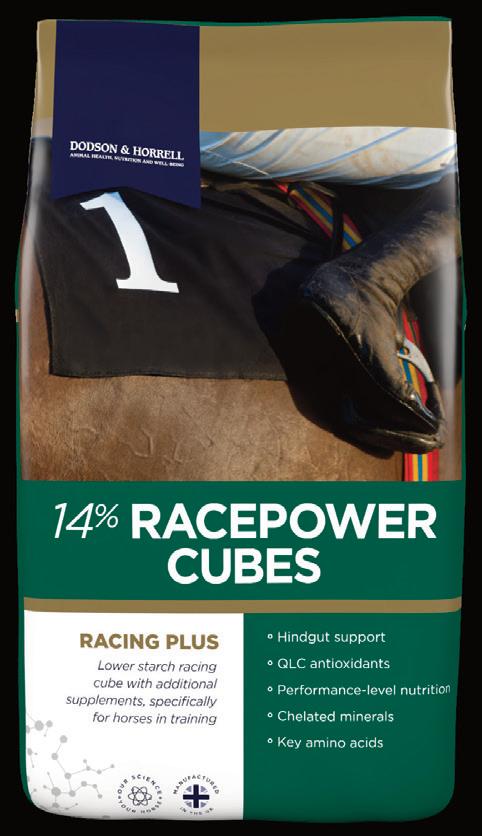
James Owen says it all
“I have been feeding D&H 14% Racepower Cubes since I started training. The horses look great on it and they eat well. The feed is especially great when I’m backing them up quick; it suits what I need. Both my flat and jump horses seem to thrive on the feed, it is a great all-round feed and my horses are really performing. D&H look after us well as a customer and we are proud to work alongside them.”

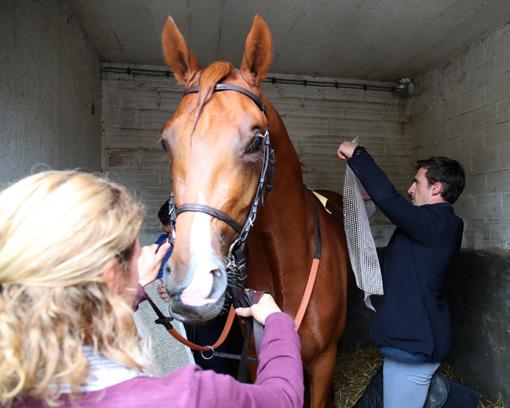
WE ARE FORTUNATE TO BE IN A COUNTRY WHERE PRIZE MONEY IS VERY GOOD COMPARED WITH OUR NEIGHBOUR COUNTRIES IN EUROPE.”
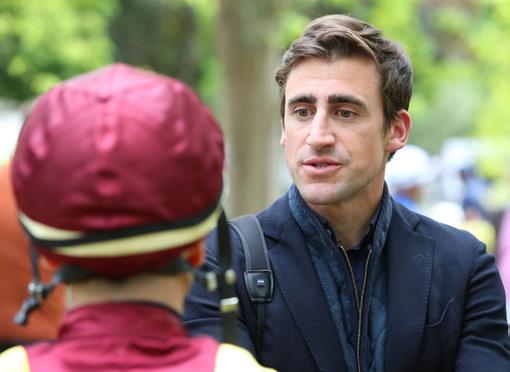
Baratti’s adopted homeland of France has recently announced austerity measures for the forthcoming seasons to compensate for falling PMU turnover and pending the results of a recovery plan which aims to increase the attractivity of French racing for owners and public. France Galop prize money will be reduced by 6.9%, equating to 10.5 million euros during the second half of 2025 and 20.3 million euros for following seasons until a hopedfor return to balance in 2029.
“It’s normal,” says the Italian pragmatically. “It’s better that they make a small reduction now than wait two or three years and have to make drastic cuts. It’s necessary to take the bull by the horns, not like how it was in Italy when they let the situation decline and then it became too hard and too late to redress. We are fortunate to be in a country where prize money is very good compared with our neighbour countries in Europe, so a small reduction won’t affect people too much.
Owning racehorses is a privilege and a passion. It is a luxury and people should treat it as such, not buy horses as a means to earn money. If you buy a magnificent yacht, it costs a fortune, and it’s pure outlay. Money spent on having fun. Nowadays, a lot of people invest in racehorses for business purposes, but they need to have the necessary means. If you are lucky to buy a horse like Metropolitan and then sell him for a lot of money, that’s another story, but it wasn’t the aim at the outset.”
He remembers an important lesson on owner expectations from former mentor Pascal Bary. “I was surprised once when Mr Bary received some foreign owners in his office. They wanted to buy ten horses. He told them, the trainer earns money, not every day, but he tries, in any case his objective is to earn money, the staff earn money and the jockey earns money. Normally, the owner loses money. If things go well, they don’t lose much, if they go very well they can break even, and when it’s a dream, then you can make money, but that’s the exception to the rule. The guys had quite a lot of money to invest and they were there, open-mouthed. In the end they chose another trainer. But Mr Bary was right. If I decide to buy a horse tomorrow for 5,000€, I have to consider that 5,000€ as lost. If I want to invest, I should buy a house.
His explanation was very clear and that’s how racing should be understood. It would be nice to have a group of friends buy a horse, but it costs a lot. Ideally it should just be for pleasure, like membership at the golf, or tennis. It’s an expenditure. And if in the end you end up winning, then all the better. And it can happen. Bloodstock agents do that for a living but it’s their profession. My owners are in racing for the pleasure.”
With an upwardly-mobile, internationally-minded and ambitious young trainer, Baratti’s owners certainly look set for a pleasurable ride over the forthcoming seasons, and the office walls are unlikely to remain white for long.



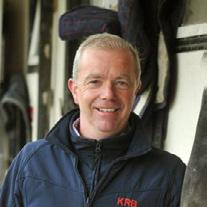
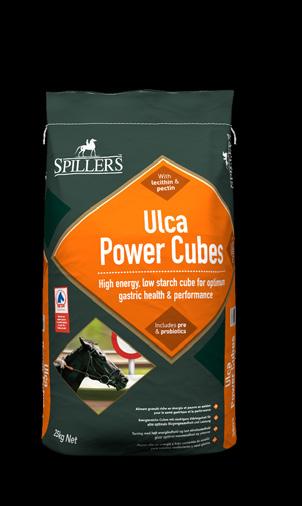
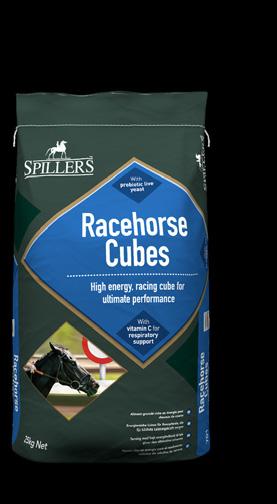
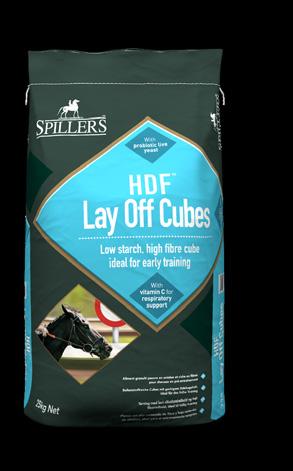
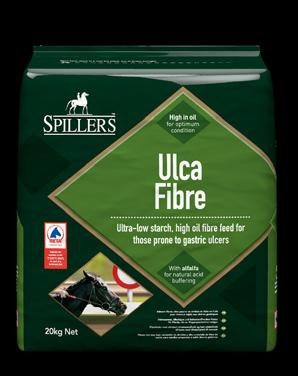
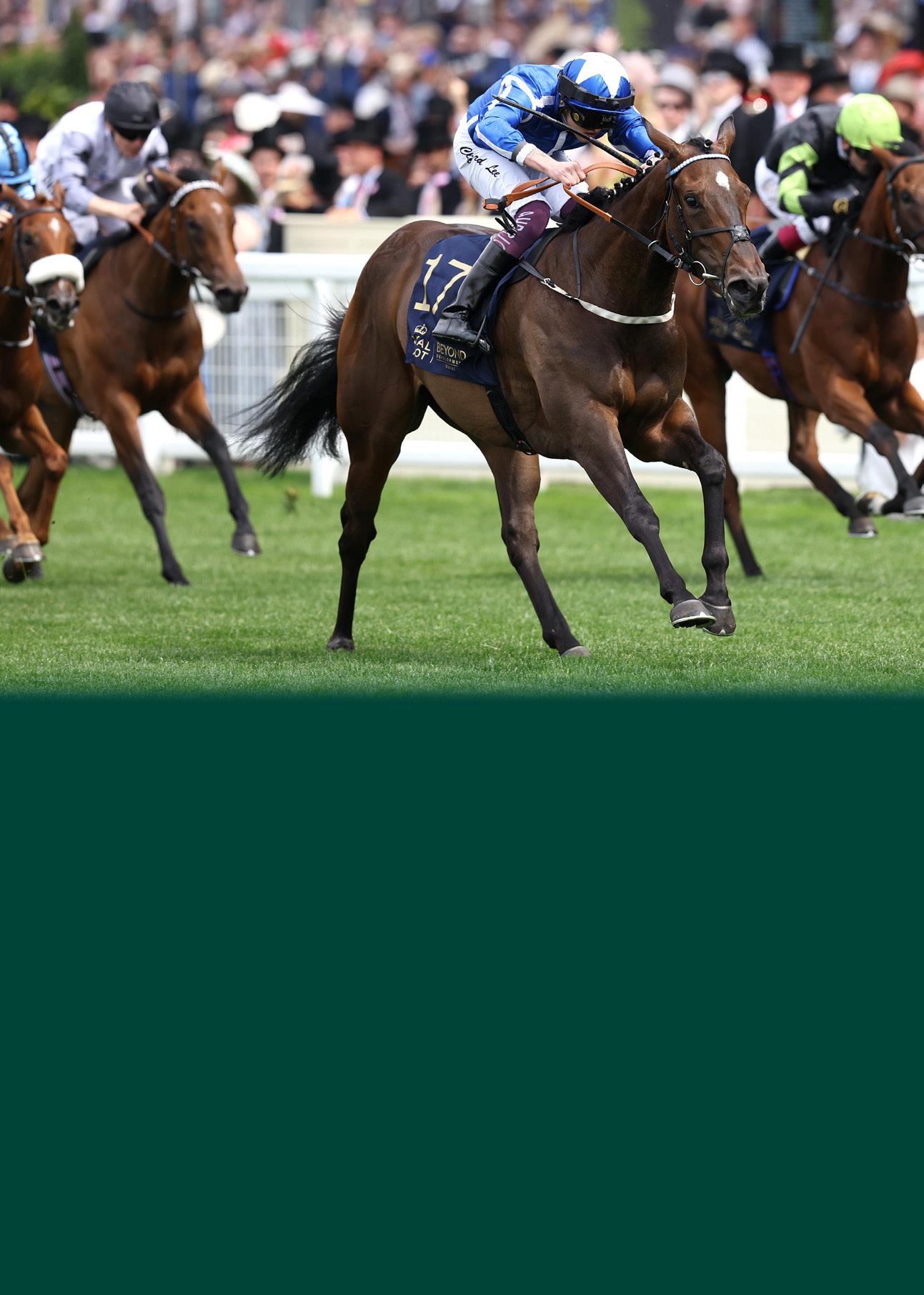
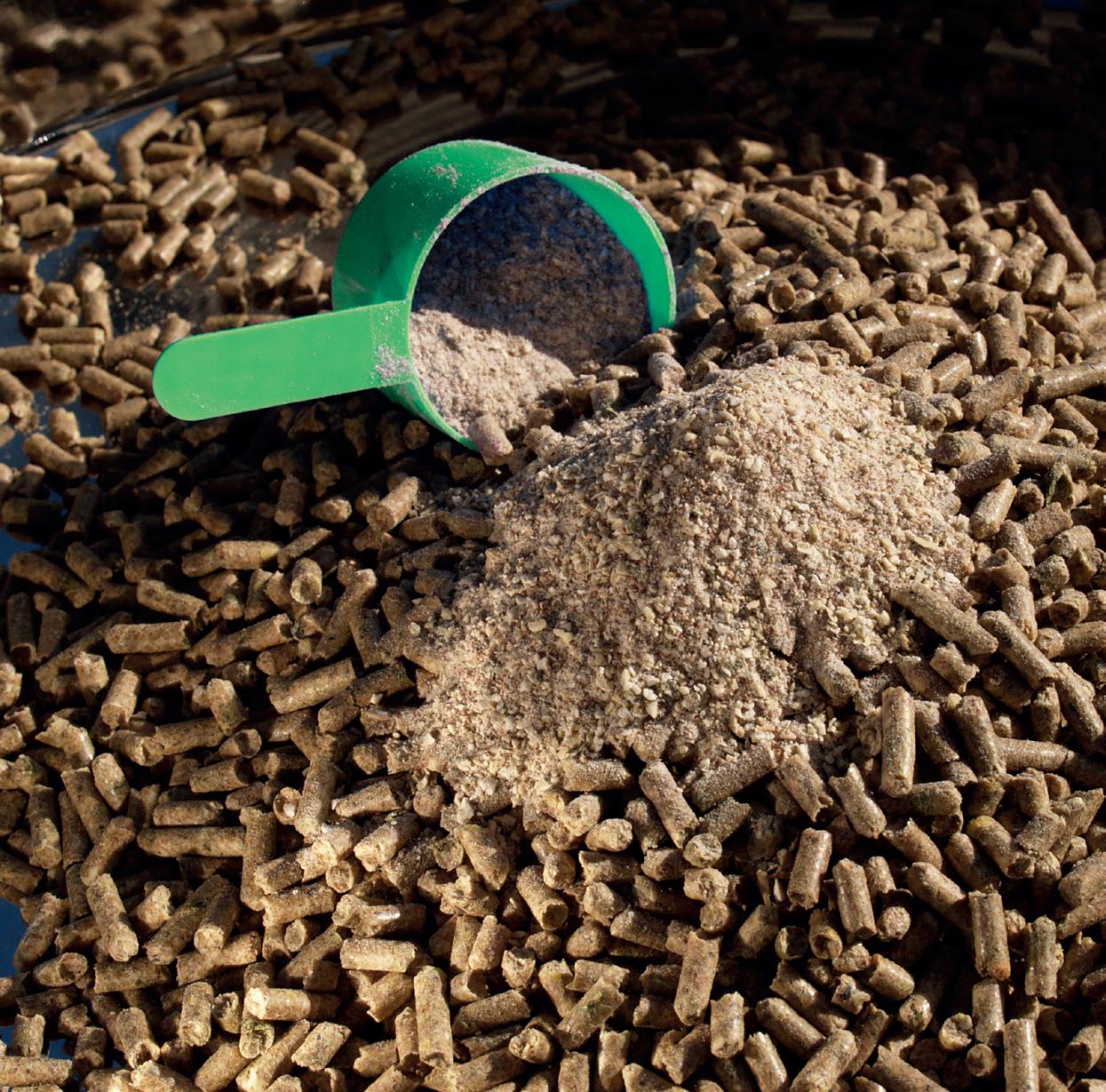
DO YOU NEED THEM? HOW DO YOU CHOOSE ONE?

Good horse people want to do the right thing for the horses in their care. They want to help them perform to the best of their ability, and they want to help them to do that consistently, throughout the racing or competition season. Nutrition is a vital part of that.
Every season, stables are presented with a long list of supplements, and every rep says theirs is the best. How do you know if you need to spend money on supplements, at all? If you conclude that you do, how do you sort the wheat from the chaff and pick the best one?
use supplements?
There are, essentially, only three reasons to introduce supplements into your horses’ daily feed routine:
1. To improve the balance of the daily ration.
2. To fill the gap between good daily nutrition and the increased requirements of horses under stress.
3. To address specific health concerns.
ration balance
First, remember that horses’ guts have adapted to digest roughage, and they need it. Hay (or grass, if you are lucky enough to have it) is the basis of a good daily ration.
You only need to feed a concentrated feed (the stuff you buy in a bag, like a Racehorse or Stud Farm Mix) to meet the additional protein, energy, vitamin, and mineral requirements that horses in work, growing, or breeding have. If the concentrate feed you choose has been prepared by a major feed company, it will generally be balanced for those things already, and they will essentially meet the daily needs of horses, when fed with forage. If you are having to correct deficiencies of energy or protein in your daily feed, consider picking a betterbalanced concentrate feed for your particular horses.
In some parts of the world, grass isn’t plentiful, so forage is generally fed in the form of hay or green feed. Depending on the type of hay you choose, calcium and phosphorus balance might have to be adjusted with a daily supplement. You should ask your nutritionist or veterinarian to help you to get that right. In general, though, grains are high in phosphorus and low in calcium. Lucerne (Alfalfa) is high in calcium, while grass hays are generally lower in it. Feeding a mixture of grass hay and Lucerne as the main part of your daily ration, will likely mean that calcium and phosphorus will be close to right in your total ration, including the right concentrated feed. As an added bonus, Lucerne is a very good source of cost-effective and bioavailable protein for horses.
If you don’t need to add other stuff to your daily ration, don’t. With a few exceptions, it’s money wasted. Adding individual nutrients can produce no results or disrupt the balance of a good feed and actually have negative results.
If the daily ration has selenium provided in an inorganic form, such as sodium selenite or selenate, have your veterinarian check blood selenium. Some horses will absorb and use those forms of selenium well, and others might not. Selenium has a very narrow therapeutic range (the amount they need is only a little bit less than the amount that is toxic), so it’s dangerous to over-supplement. If some horses need more, pick a supplement that provides selenium in an organic form like selenomethionine or selenocysteine. Yeast-based selenium is mostly a mixture of the two.
In a hot climate, some additional table salt or a salt block will be needed. Every horse, even spelling ponies, need access to a salt block.
Stabled horses and those in hot, arid climates don’t always get much grass. If horses aren’t getting fresh, growing grass, vitamin C might be low. Although it is often included in prepared feeds, it can be unstable, especially in hot climates, and levels can quickly drop.
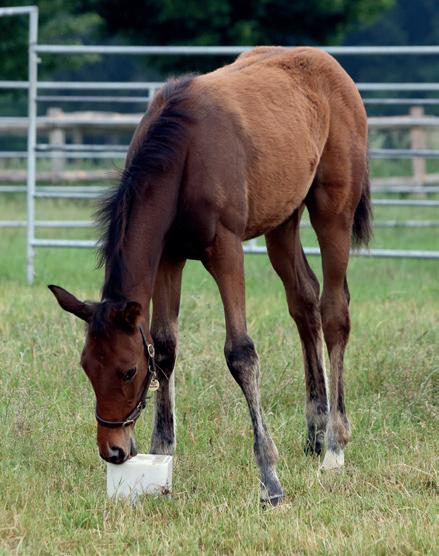
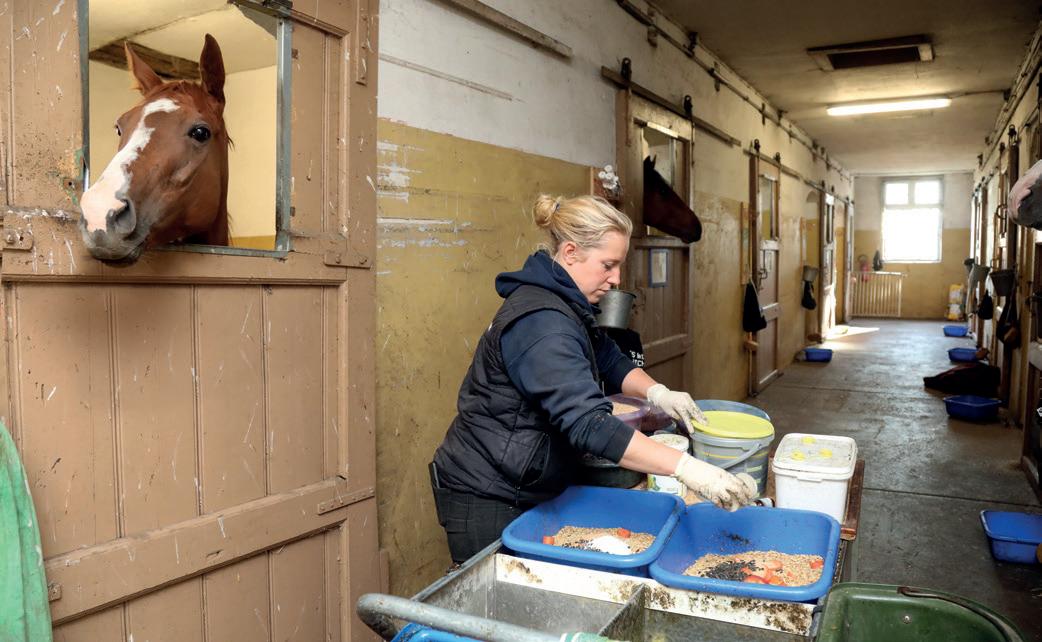
You might consider supplementing with vitamin C when horses are under extra stress. Vitamin C and the B group vitamins are water soluble, and they are not stored in the body. As a result, it makes more sense to provide those in supplements, given only when horses are under extra stress and requirements are increased.
When horses are under the added stress of hard work, transport, racing, competition, high heat and humidity, or ill health, requirements for many nutrients are increased. Feeding a daily ration designed for horses in hard work will generally provide energy, protein, fat soluble vitamins, and mineral levels to meet their overall needs, but some nutrient requirements will be increased beyond that, just at the time horses are under stress. B vitamins, for instance, will be needed in doses between 20 and 200 times requirements during times of added stress. If they were fed doses at this level on a daily basis, much of the dose would pass out in the urine. That is money wasted. On days they are travelling, racing, or sick, they would need more, absorb it, and use it. That’s money well spent.
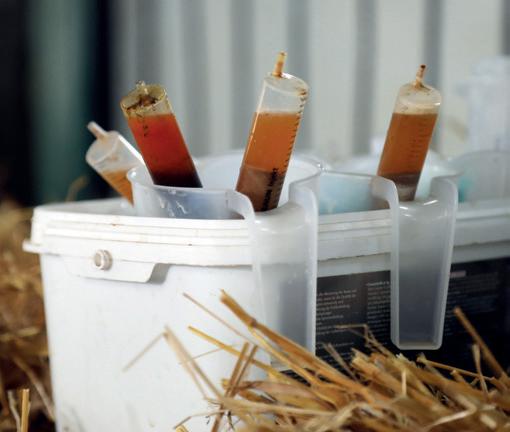
At the same time as horses are under extra stress and need more nutrients, they will often go off feed and drink less than usual. Supplements will certainly be helpful, at those times, to fill the gap between good daily nutrition and the amount of nutrients they are eating and drinking voluntarily.
When you need a supplement for times of increased stress, it’s really important to read labels carefully. Ask yourself, these three questions:
1. Does it have the right stuff? Is it complete?
2. Is the balance right?
3. Are the forms of nutrients and the doses going to meet the requirements of your horses?
To help answer these questions, consider the following:
Completeness: Metabolism is complex, requiring a broad range of essential nutrients. You can’t just feed two or three of them and hope to support performance, recovery, health, and metabolism. A lot of one nutrient doesn’t make up for deficiencies in another. If you ran out of food in your house and tried to just live on a big bag of salt, you wouldn’t last long. It is, therefore, important to consider if the supplement you are evaluating is complete enough to meet the complex requirements of equine physiology.
Balance: The balance between nutrients is equally important. Some nutrients are required for the uptake and function of other nutrients. (These supportive and cooperative nutrients are called co-factors.) Too much or too little of one nutrient may result in deficiencies or toxicities of other nutrients. Imbalances, therefore, can have a negative impact on health, performance, and recovery. At a minimum, imbalances in a feed or supplement can cost you money and have no effect at all.
For example, vitamin C is required for the absorption of iron from the gut. Without it, iron passes straight through the gut and out in the manure. Vitamin E binds with iron and reduces its absorption, causing much of it to be wasted. So, for horses to use dietary iron effectively, it has to be given with vitamin C and without vitamin E.
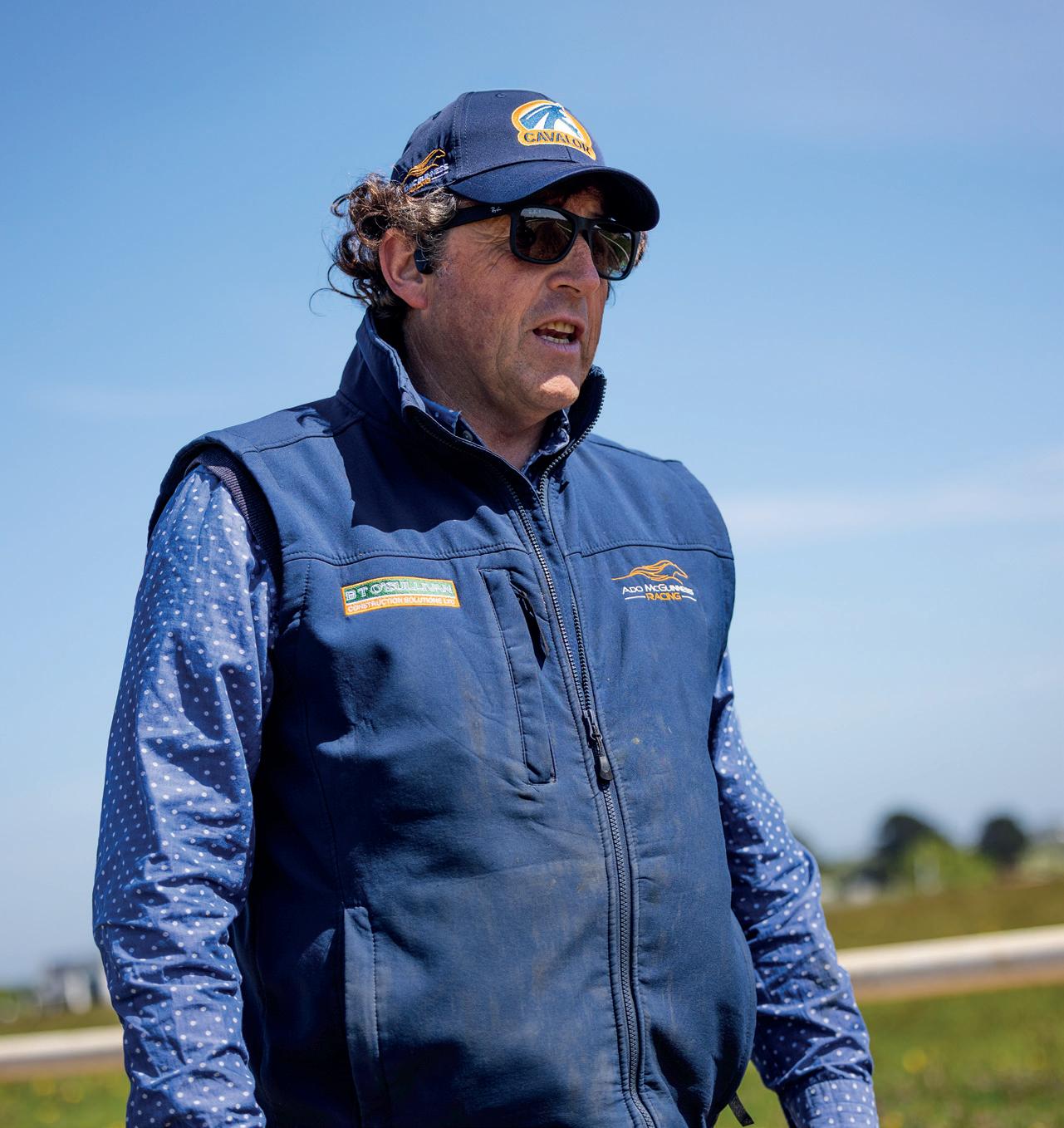
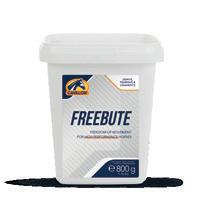
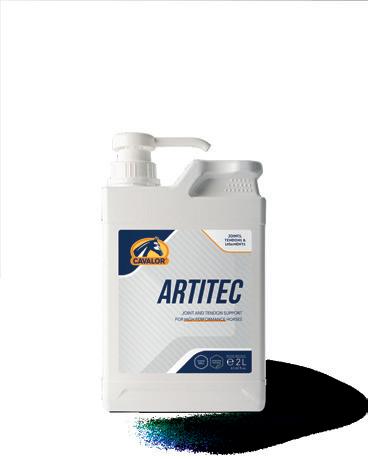
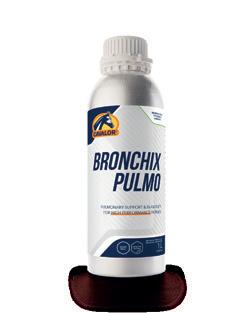


Bioavailability: Bioavailability refers to how well nutrients are absorbed and used. While this is partly related to the composition and balance of nutrients in a product, this is also about the form each nutrient is provided in. Some forms are more easily absorbed and used by the body than others.
The trace element chromium, for example, exists in several different forms. The form of chromium found in a chrome bumper on a car is, as you can imagine, not very digestible at all. The more organic forms like chromium picolinate (for people) or those incorporated into yeasts (a form often found in daily feed supplements for horses) is very easily absorbed and then used by cells. Minerals including calcium, magnesium, iron, cobalt, copper, zinc, selenium, and manganese can all be provided in a variety of forms, each of which have differences in their bioavailability.
In general, inorganic forms of nutrients are less well used than organic forms, though that is not always a reliable rule. Zinc oxide is one of the more bioavailable forms of zinc, whereas zinc chelate forms a big molecule that can be too big to be well absorbed. In most cases, though, minerals provided as gluconates, lactates, and amino acid or protein complexes are well used.
When reading labels, you should note whether the amount of the ingredient or the amount of the active nutrient is listed. For instance, Iron Bioplex, in which iron is bound to amino acids, contains only about 10% iron. If a label says a product contains 400mg of iron per dose, that means that a dose contains about 4000mg of Iron Bioplex yielding 400mg of very well absorbed and used iron. If the label says a product contains 400mg of Iron Bioplex per dose, then it really only has 40mg of actual iron. Make sure that you check those details carefully when reading labels and comparing products.
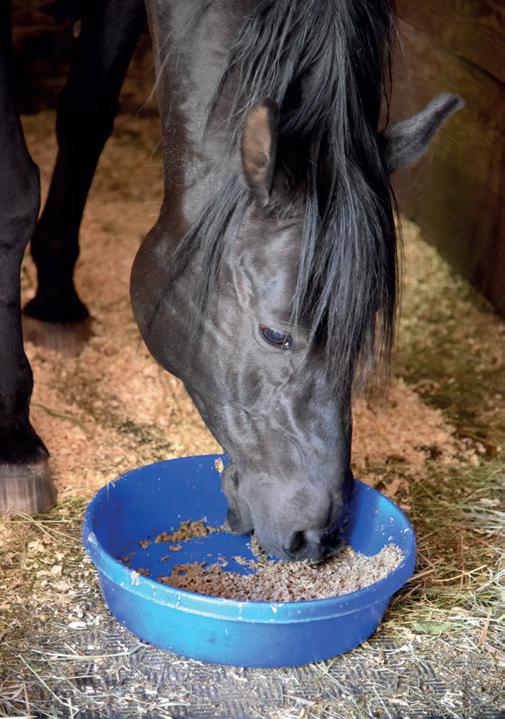
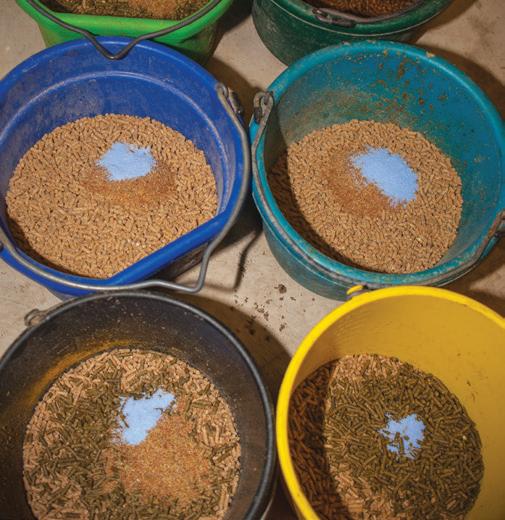

Do the doses of nutrients meet science-backed nutrient requirements? Caution! This might require math before you can measure a supplement against published nutrient requirements.
Labels will include the quantity of each nutrient, but those might be listed per kilogram or per dose. They might be in milligrams (mg), grams (g), or kilograms (kg), pounds (lb), ounces (oz), parts per million (ppm), percentages, or in some cases, a combination of units. All of these must be converted to the same units as the published nutrient requirements, and all have to be calculated per dose. It sounds seriously confusing, and it can be, but it’s also vitally important. If math isn’t your thing, ask a nutritionist for help. You can look up “NRC requirements” yourself or ask your nutritionist or veterinarian for help with this, too. Many feed companies have in-house nutritionists, and this can be a good way to get help, for a minimal charge or even for free, if you don’t have your own nutritionist.
If labels are easy to understand, and you can tell, at a glance, what you are feeding your horse in a single dose, then the manufacturer probably believes their formulation will stand up to scrutiny. If you have to perform too many calculations to figure out what you are giving, there’s a fair chance that the formulation isn’t great.
In any case, take the time to do the math and make sure you are comparing apples to apples before picking a supplement to spend your money on.
We had one horse who was underweight and looked very dull in his coat. I was struggling to get the work in to him so I could then run him. Clinical tests all came back fine so we changed his feed and added in NUTRI-GARD. The change in the horse was extraordinary, gained condition, top line and even in depth of winter had a shine to his coat. The horse went on to win two competitive races. I could not recommend NUTRI-GARD more.
PAUL NICHOLLS
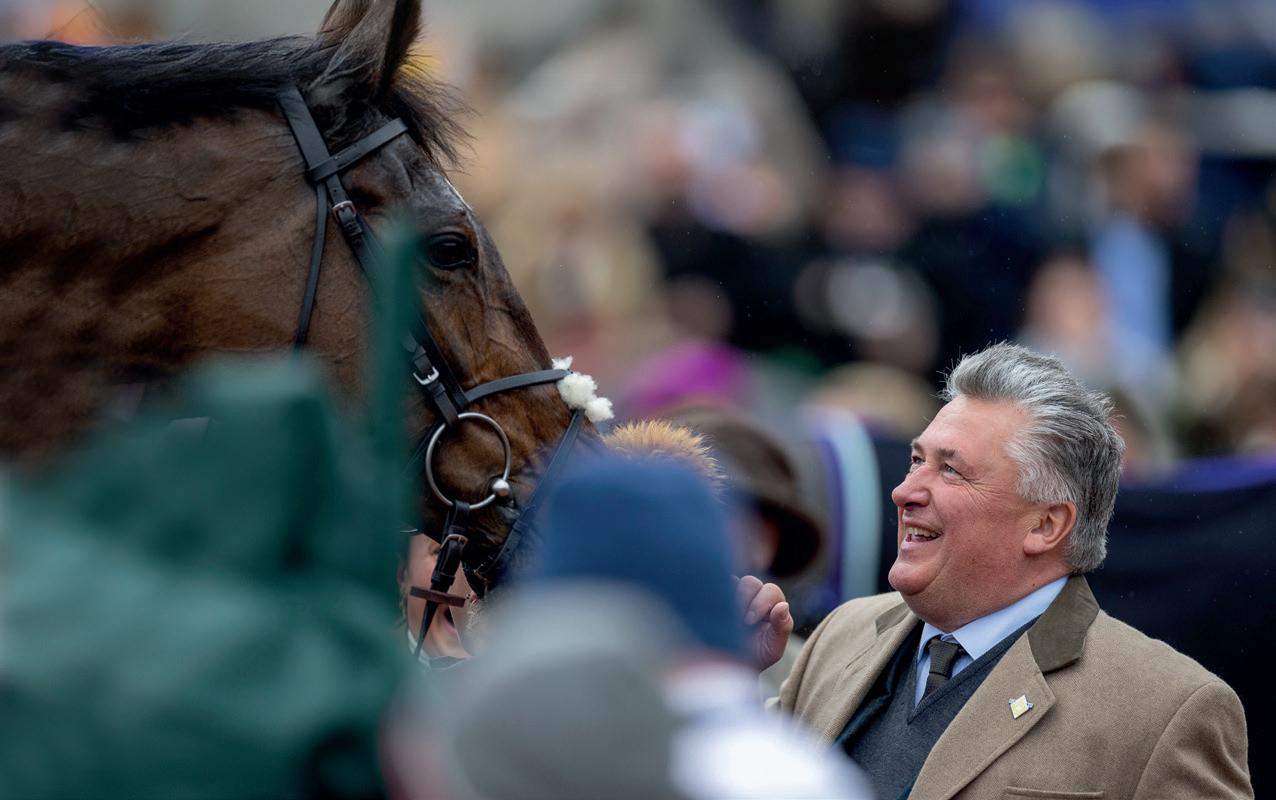

Scientifically advanced gut supplement formulated to support stomach and hindgut health and maintain overall digestive function.
Postbiotics to promote optimal gut and immune health
Prebiotics to support a healthy hindgut microbiome
Added B-vitamins to promote appetite and optimise feed utilisation
Pectin helps to buffer stomach acid
Formulated with amino acids, L-threonine and DL-methionine to support a healthy lining in the digestive tract
Contains oat fibres, naturally rich in beta-glucans
FOR Digestive health

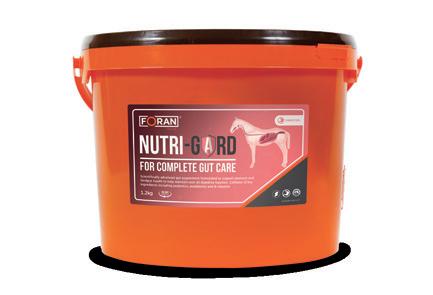
UK: Adam Johnson T: +44 7860 771063 IRE: Nicole Groyer +353 83 477 3873 Email: info@foranequine.com
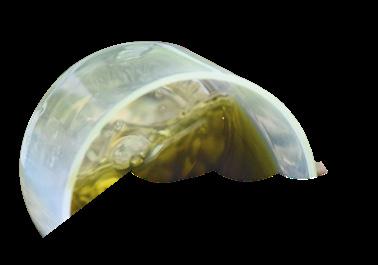
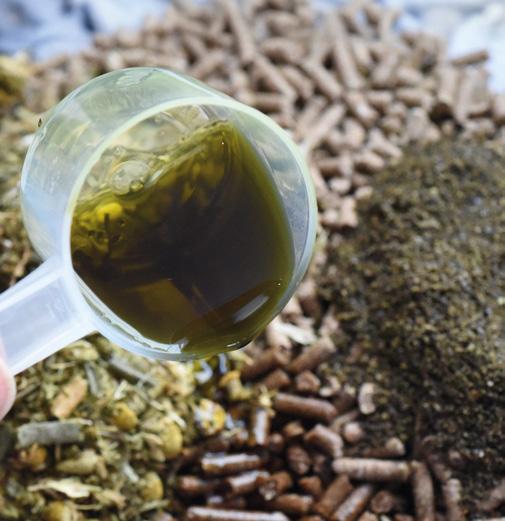
Once the ration is properly balanced and nutritional requirements are being met effectively, you might also wish to feed supplements designed to address specific health issues. Nutraceuticals fed for healthy joints and tendons, or as digestive aids are common examples, and nutritional elements (vitamins, minerals, and amino acids) are also marketed for specific concerns. For example, vitamin K1 may support the development of strong cannon bones; biotin is fed to horses on high grain diets to support healthy hooves; chromium is fed to support muscle cells; and a variety of nutrients are fed to relax highly strung horses or to support red blood cell production in anaemic horses.
If you are looking at extra supplements like these, there are a few important questions to ask.
1. What scientific evidence is there that these products are likely to be effective?
2. Are the doses provided the same as the doses that produced good results in studies?
3. If nutritional elements are to be fed, do the amounts meet NRC requirements and are the cofactors needed for their absorption and effect also provided?
4. What quality, safety, and security assurance does the manufacturer provide?
How do you know if the product you are looking at contains what is says it does; only a fraction of what it says it has; or way more than it is supposed to have? Even more alarmingly, how do you know it doesn’t contain contaminants that aren’t supposed to be there?
There was an interesting study presented at an American Associate of Equine Practitioners (AAEP) meeting several years ago, in which several nutraceuticals were tested and their actual contents were compared with label claims. Those products were found to contain anywhere between 10 and 200% of the active ingredients that they were supposed to have. That is potentially a huge problem! If a product has too little of an ingredient, it may not be effective and will be a waste of money, but if it has a lot more than it is supposed to have, it may make horses sick or return a positive drug test result. We have already talked about how only a little too much selenium can be toxic, but for some nutrients like cobalt, an essential trace-mineral, feeding too much will produce a positive drug test. Contamination of feed supplements with Naturally Occurring Prohibited Substances, like caffeine, can also produce a positive test.
So, how do you know if a product is manufactured safely and meets its label claims?
This information isn’t generally on the label, but it can be just as important as the label itself. To get it, you either have to know the company management personally and have confidence in their diligence and ethics; you might have to talk to the manufacturer and ask questions; you can look at their website to find a statement about quality management; or you can look for third-party certification of their quality management practices. GMP or ISO certification are good ones to watch for. If a company has either ISO or GMP certification, you can be sure that the supplements they produce will be safe, secure, and generally meet label claims.
If a manufacturer lacks certification, it doesn’t mean they aren’t doing a fabulous job of quality management. They might have a written statement about their commitment to quality management or you might have to ask some questions to be sure. If at least some proportion of finished product undergoes analysis for common contaminants, the concentration of active ingredients, and microbial testing, it will likely be safe. If no testing is done, and the company doesn’t talk about product quality, safety, and security, you should be concerned.
Be sure to ask every feed rep that visits your stable about quality management as they will almost certainly be the most readily available source for this information. This is also a simple way to separate the wheat from the chaff. Any rep that can’t talk competently about their company’s quality management program, probably represents a company that doesn’t have one.
Feeding supplements can be necessary for adequately supporting horses, particularly during times of hard training, competition, racing, transport, illness, or stress. It is your responsibility to ensure the supplements you are feeding your horses are necessary, complete, balanced, bioavailable, effective, and safe for health and drug testing. Get good value for money by avoiding under or over-supplementing. Hopefully this article will help you to make good choices, but remember, if in doubt –seek further advice from an equine nutritionist, veterinarian, or feed manufacturer.
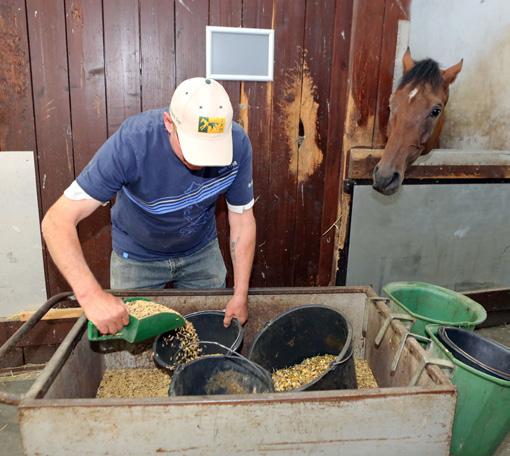
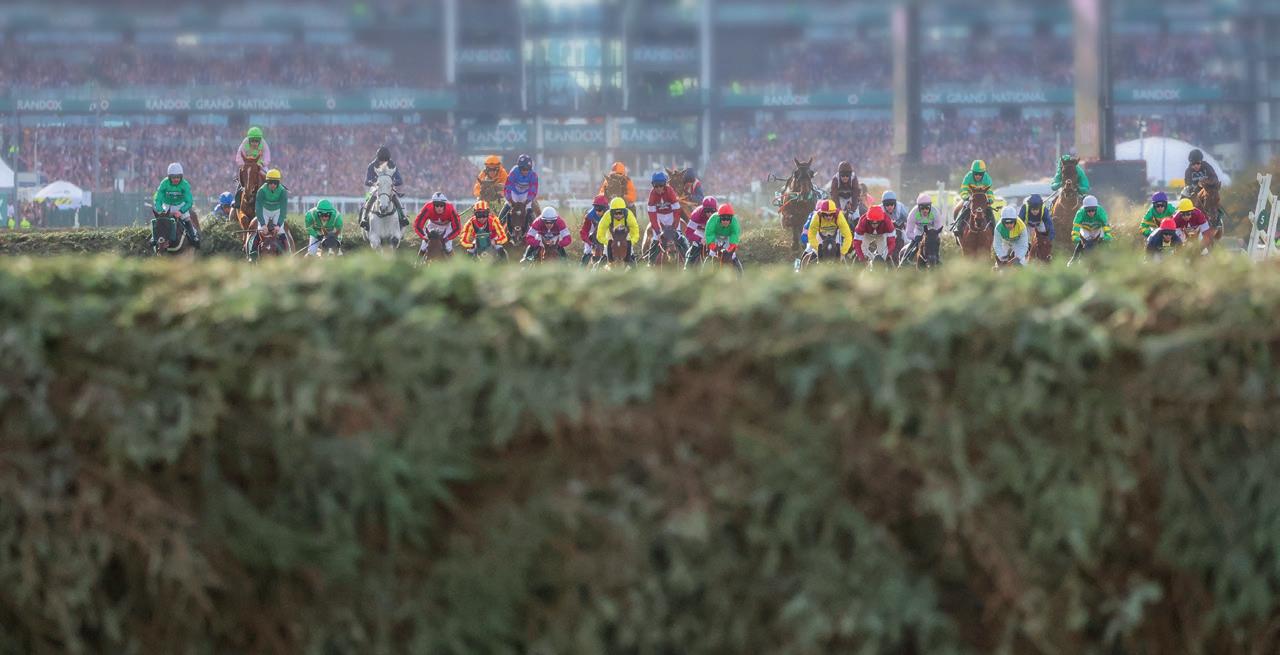
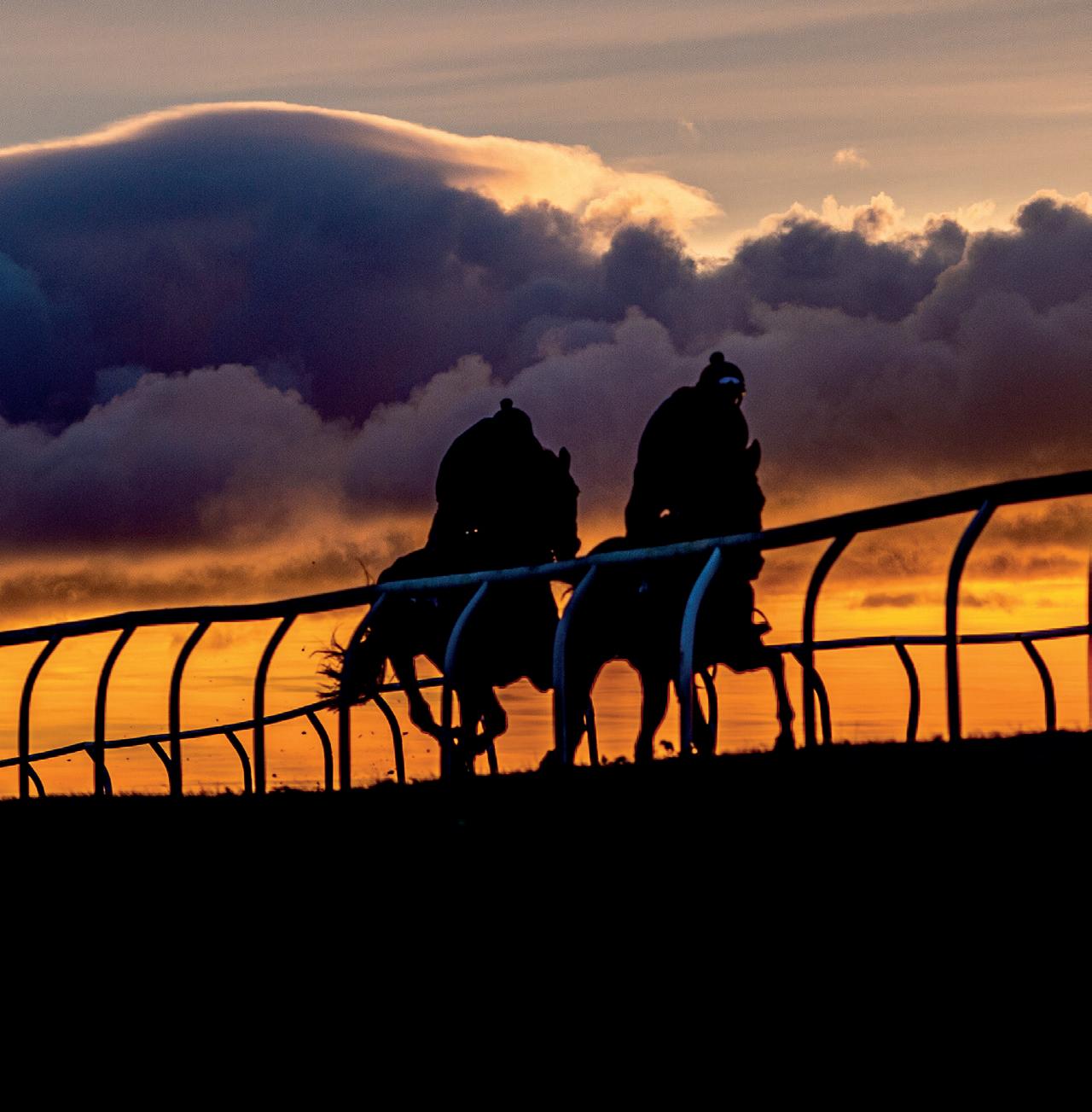
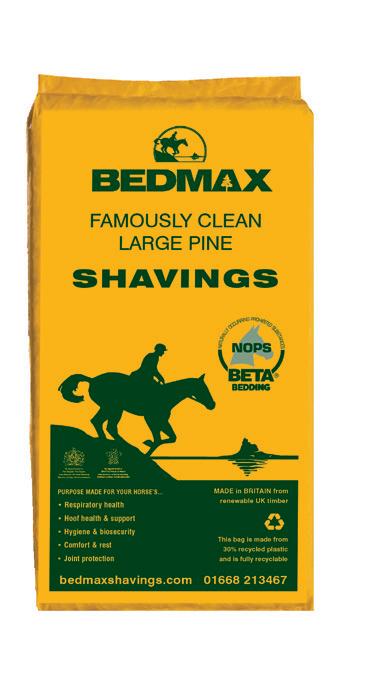
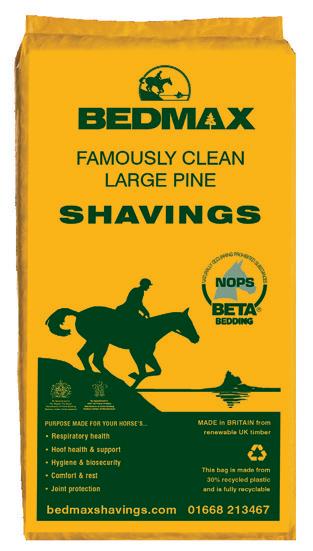

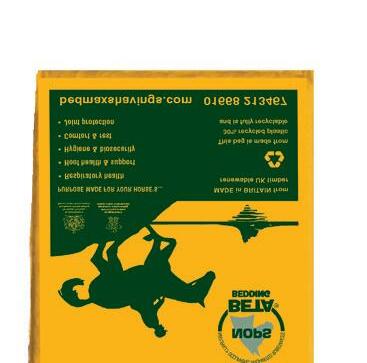
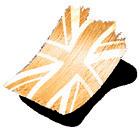
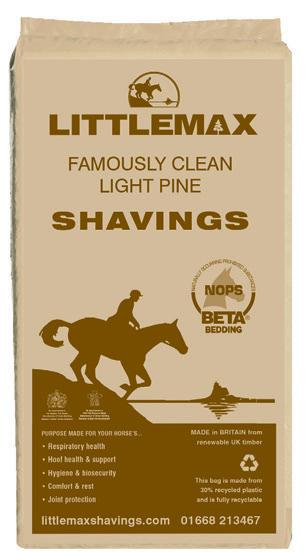

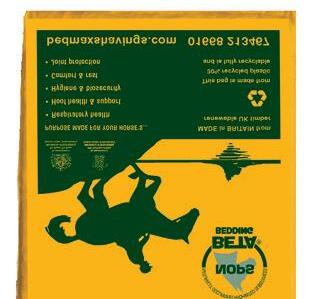
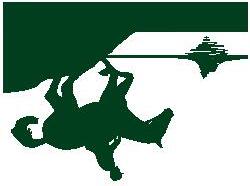
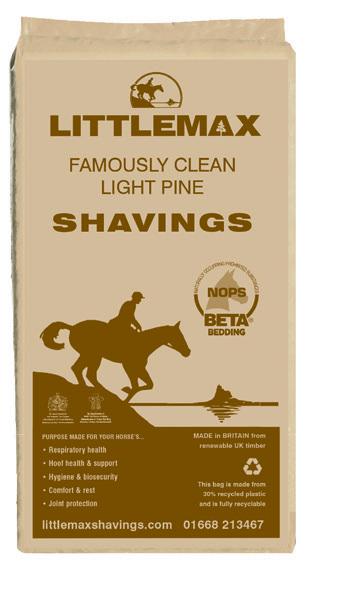
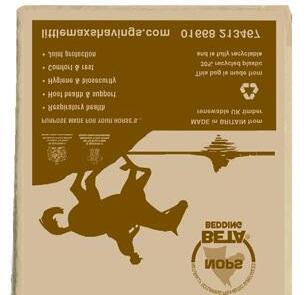


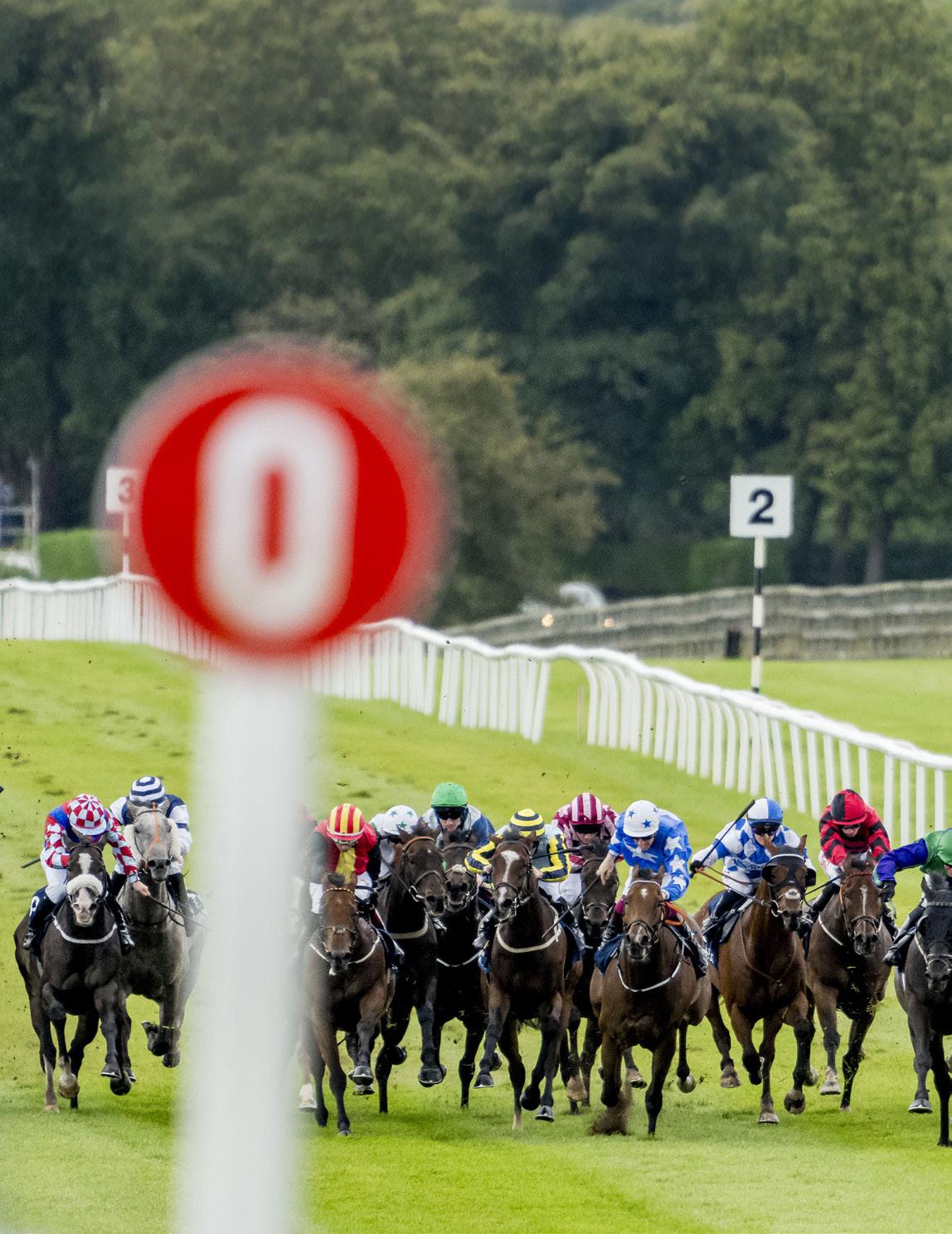

The Irish Champions Festival takes place at Leopardstown and the Curragh 13th and 14th September respectively. The Curragh boasts the richest day of its year, with a card worth over €2.5m (£2.10m) in total. The highlights are the €600,000 (£503,865) Gp.1 Irish St Leger for three-year-olds and up, the Gp.1 Moyglare Stud Stakes and Gp.1 Vincent O’Brien National Stakes for juveniles and Gp.1 sprint The Flying Five Stakes, each worth €400,000 (£335,900).
The €200,000 (£168,000) Gp.2 Blandford Stakes, the €250,000 (£210,000) Tattersalls Ireland Super Auction Sale Stakes and two Premier Handicaps each worth €150,000 (£126,000) complete the card.
On the opening day at Leopardstown, the nine-race card features five Group races, including the €1.25m (£1.05m) Gp.1 Irish Champion Stakes 2000m (10f), the €400,000 (£335,900) Gp.1 Matron Stakes, €200,000 (£168,000) Gp.2 Solonaway Stakes, €150,000 (£126,000) Juvenile Stakes, €100,000 (£84,000) Gp.3 Tonybet Stakes, the €100,000 (£84,000) Ingabelle Stakes and two Premier Handicaps each carrying €150,000 (£126,000).
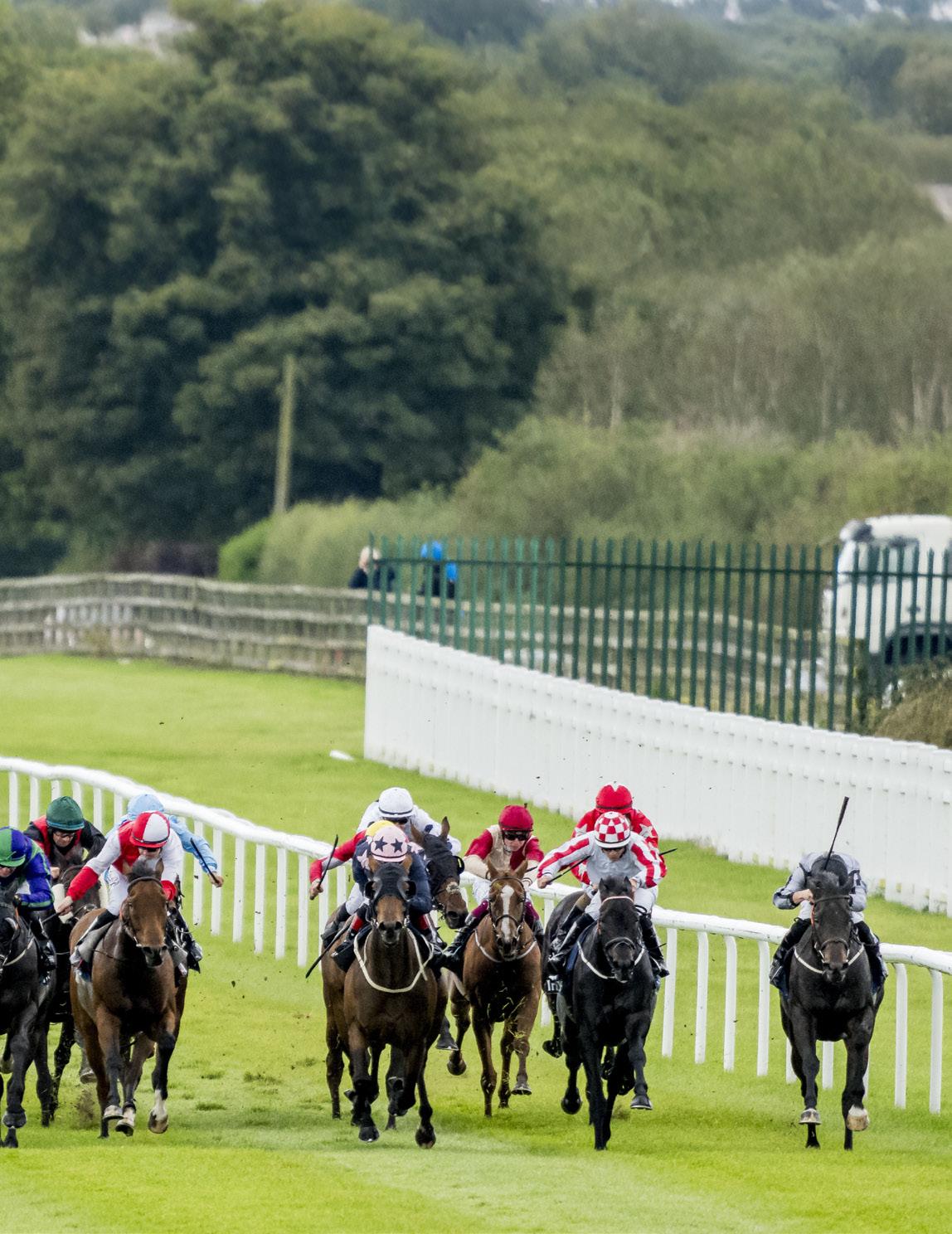
Fairyhouse will host the second Irish Stallion Farms EBF Academy Hurdle race on 4th October.
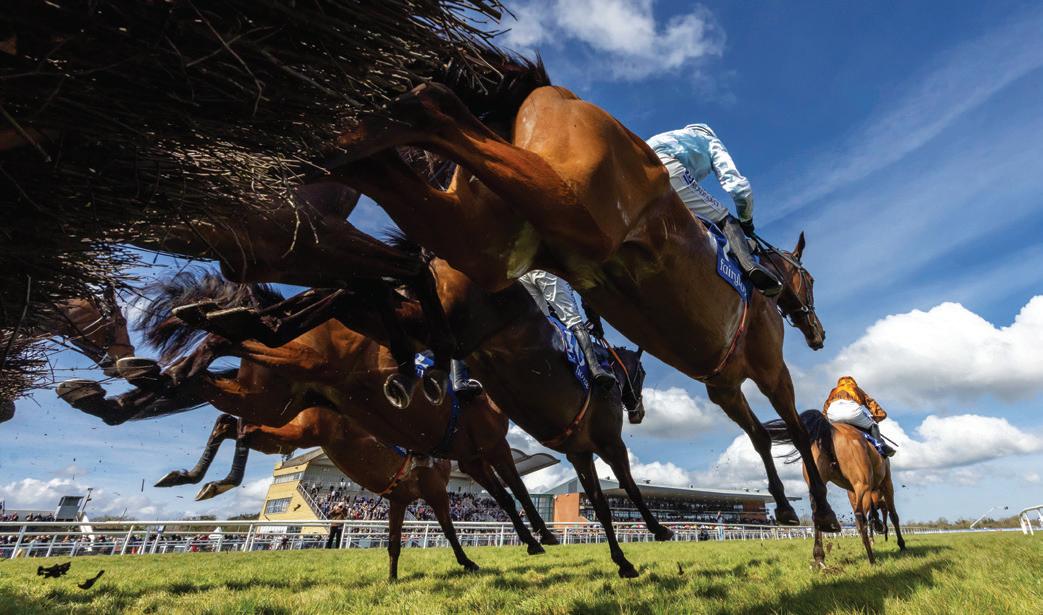
In addition to the Irish Champions Festival, the Autumn Racing Weekend will be held at the Curragh 27th and 28th September, which includes the 1400m (7f) €1m (£850,000) Goffs Million, the richest race for two-year-olds in Europe, and the richest handicap in Europe the 3200m (16f) Irish Cesarewitch, worth €500,000 (£425,000). The meeting will also include the Gp.2 Beresford Stakes (€120,000/£101,700) 1600m (8f) for juveniles, celebrating its 150th anniversary, 1200m (6f) Gp.3 Renaissance Stakes (€60,000/£50,800), and 1400m (7f) Gp.3 Weld Park Stakes (€60,000/£50,800).
For National Hunt runners, a series of seven 3300m (2m1f) 10-hurdle Irish Stallion Farms EBF Academy Hurdle races will be run in Ireland from October to December. The first is at Cork on 12th October, followed by Fairyhouse 4th October, Punchestown 13th November, Cork 23rd November, Navan 6th December, Naas 15th December and concluding at Leopardstown 29th December.
The races are open to three-year-olds which have not had any previous run under either Rules of Racing or I.N.H.S. Rules other
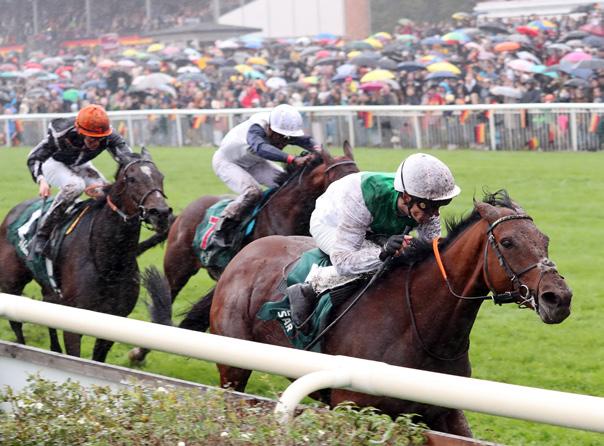
than in Academy Hurdle races. Horses that run in any of the seven races can continue their careers in bumpers, maiden hurdles or Point-to-Points.
Jonathan Mullin, Director of Racing at HRI, explains, “Each of the races offer a Sales Voucher, similar to the IRE incentive for the owners of any eligible Irish-bred horse which wins or is placed either second or third. Each winning owner will receive a €5,000 voucher while the owners of the runner-up and the third-placed horses will each receive €3,000 and €2,000 respectively.”
Additionally, all seven races are part of the Weatherbys National Hunt Fillies Bonus Scheme, so three-year-old Irish-bred fillies that win an Irish EBF Academy Hurdle in 2025 will be awarded an additional €7,500 bonus on top of the race prize money and will still be eligible for the €5,000 scheme bonuses available if subsequently winning a bumper or a steeplechase, but not a maiden hurdle.

This season, Deutscher Galopp introduced 12 premium handicaps and 15 premium racedays, which included seven Gr.1 racedays, guaranteeing at least €15,000 (£12,500) in handicaps and maiden races on those days.
The BBAG Auktionsrennen at Mülheim 4th October is worth €52,000 (£43,600), run over 2000m (10f) for three-year-olds offered as yearlings at the 2023 BBAG Sale, while at Krefeld 15th October is the €55,000 (£46,000) Gp.3 Herzog Von RatiborRennen for two-year-olds, over 1700m (8.5f).
The Berlin-Hoppegarten card 3rd October is one of the premium racedays and as well as including the 2000m (10f) Gp.3 Preis Der Deutschen Einheit, €55,000 (£46,000) for three-yearolds and up, there is also a 1400m (7f) BBAG Auktionsrennen for three-year-olds offered as yearlings at the 2023 BBAG Sale, and a support card of seven other races from €15,000 (£12,500) to €22,000 (£18,500). Similarly, 19th October at Baden-Baden sees a nine-race card with the guaranteed minimum that also features the Gp.3 €155,000 (£130,000) Preis Der Winterkönigin for twoyear-olds over 1600m (8f), and the Gp.3 Herbst Trophy €55,000 (£46,000) over 2400m (12f) for three-year-olds and up.
LEFT: Quest the Moon ridden by Rene Piechulek wins the 2024 Preis Der Deutschen Einheit for trainer Sarah Steinberg.
JOCKEY CLUB OF TÜRKİYE
September 6 / 7, 2025 – Veliefendi Racecourse, ISTANBUL
CLOSING DATE FOR ENTRIES
WEDNESDAY, 6 AUGUST 2025 17:00 (LOCAL TIME)
CONFIRMATION OF ENTRY
Before Wednesday, 20 August 2025 17:00 (Local Time)
SUPPLEMENTARY CONFIRMATION OF ENTRY / SUPPLEMENTARY ENTRY / HORSE DECLARATION
Before Monday, 1 September 2025 17:00 (Local Time)
JOCKEY DECLARATION
Before Wednesday, 3 September 2025 17:00 (Local Time)
Jockey Declaration fees are included in the horse declaration fee
IMPORTANT NOTES:
Failure to complete the Confirmation of Entry or the Supplementary Confirmation of Entry shall render the horse ineligible to participate in the race.
Kindly be advised that Geldings are strictly prohibited from competing in the Topkapı Trophy and Bosphorus Cup.
To be eligible to race or to be stabled at any racetrack operated by the Jockey Club of Türkiye (TJC), horses must have valid vaccinations against the following diseases, as mandated in Türkiye:
• Equine Herpesvirus
• Equine Influenza Virus
For detailed information regarding vaccination protocols and required documentation, please contact: asvhmud@tjk.org / iad@tjk.org
Saturday, September 6
HRI Istanbul Trophy G3
For 3-year-olds and upwards Thoroughbred fillies & mares only
1600 m. - Turf
₺ 6.125.000 total purse
₺ 3.500.000 to the winner
France Galop
Anatolia Trophy G2
For 3-year-olds and upwards Thoroughbreds
2000 m. - AWT
₺ 4.550.000 total purse
₺ 2.600.000 to the winner
IFAHR Trophy Condition 9
For 3-year-olds and upwards
WAHO-registered domestic and foreign Purebred Arabians
Eligibility: Horses with at least four generations of parentage identified as of 2011 and earlier.
2100 m. - AWT
₺ 1.662.500 total purse
₺ 950.000 to the winner

Sunday, September 7
UAE President Cup Series
Malazgirt Trophy G3
For 3-year-olds and upwards
WAHO-registered domestic and foreign Purebred Arabians
Eligibility: Horses with at least four generations of parentage identified as of 2011 and earlier.
1600 m. - Turf
₺ 3.150.000 total purse
₺ 1.800.000 to the winner
Total Sponsorship P.Money: 250.000 USD
Bi’Talih Topkapı Trophy G3
For 3-year-olds and upwards Thoroughbreds
1600 m. - Turf
₺ 8.750.000 total purse
₺ 5.000.000 to the winner
Total Sponsorship P.Money: ₺ 2.100.000
UAE Bosphorus Cup G3
For 3-year-olds and upwards Thoroughbreds.
2400 m. - Turf
₺ 6.562.500 total purse
₺ 3.750.000 to the winner
Total Sponsorship P.Money: 40.000 USD
Queen Elizabeth II. Cup G3
For 2-year-old Thoroughbreds
1400 m. - Turf
₺ 4.550.000 total purse
₺ 2.600.000 to the winner
TRANSPORT SUBSIDY FOR INTERNATIONAL RACES
A transportation subsidy of USD 18,000 per horse (round-trip) will be provided for horses arriving from the continents of America (North and South), Oceania, Africa, and Far East countries.
A transportation subsidy of EUR 12,000 per horse (round-trip) will be provided for horses arriving from Europe and the United Arab Emirates. This subsidy applies exclusively to horses coming from countries listed in Part I of the International Cataloguing Standards Book.
Additionally, the Jockey Club of Türkiye (TJC) will grant a further transportation subsidy amounting to 50% of the above figures for progeny of stallions owned by TJC.
PLEASE NOTE:
Under the new regulation, horses coming to Türkiye from the United Kingdom are now considered as imported from European Union Countries. Therefore, same health certificate requirements as for EU horses apply and no additional quarantine is necessary.
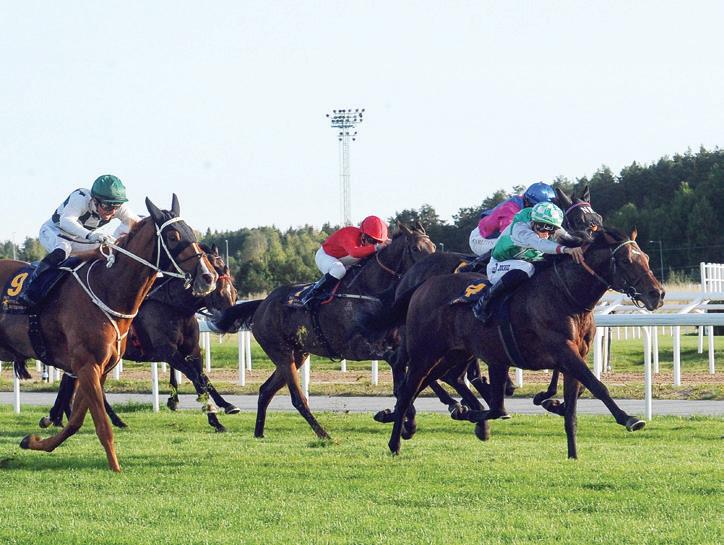
The 26th October Hannover Premium card includes the €55,000 (£46,000) Gp.3 Herbst-Stutenpreis over 2200m (11f) for threeyear-olds and up and two €25,000 (£21,000) juvenile races over 2000m (10f) and, for fillies only, 1400m (7f). The Premium Racedays conclude at Munich 8th November, where the feature is the Gp.1 Grosser Allianz Preis Von Bayern over 2400m (12f) worth €155,000 (£130,000), and another €52,000 (£43,600) BBAG Auktionsrennen, this time for two-year-olds over 1600m (8f) offered as yearlings at the 2034 BBAG Sale.

Sweden’s showcase takes place at Bro Park 12th September with a card that includes the Gp.3 Stockholm Cup International over 2400m (12f) for three-year-olds and up and worth SEK 1,000,000 (€91,700/£76,900). The three Listed races on the support card are each worth SEK 550,000 (€50,500/£42,350) and open to three-year-olds and up, namely the Bro Park Sprint Championship 1200m (6f), the Tattersalls Nickes Minneslöpning 1600m (8f)
Later Listed opportunities for three-year-olds up, each worth SEK 400,000 (€36,700/£30,800), are the 2400m (12f) Skånska Fältrittklubbens Jubileumslöpning and the Peas and Carrots Mile over 1600m (8f) at Jägersro Galopp 5th October, and the 2100m (10.5f) Songline Classic at Bro Park 26th October.

The highlight of the Spanish season is Champions Day 19th October in Madrid, with a card that includes the Gran Premio Memorial Duque de Toledo over 2400m (12f) for three-year-olds and up, with a value of €50,000 (£42,000) and the Gran Premio Ruban over 1200m (6f) worth €40,000 (£33,500). The €40,000 (£33,500) Gran Criterium for two-year-olds is run over 1600m (8f) 26th October.

Opening a card that features the British Champions Long Distance Cup (€590,000/£500,000), the British Champions Sprint Stakes (€590,000/£500,000), the British Champions Fillies and Mares Stakes (€590,000/£500,000), the Queen Elizabeth II Stakes (€1.36m/£1.15m), the Champion Stakes (€1.53m/£1.3m) and the 1600m (8f) Balmoral Handicap (€295,000/£250,000) is the newly-introduced Two-Year-Olds Conditions Race, worth €295,000 (£250,000), taking the total prize money on the day to €5.13m (£4.35m). Open to two-year-olds, the 1200m (6f) conditions race, like all races at this distance at Ascot, will be run over the straight course.
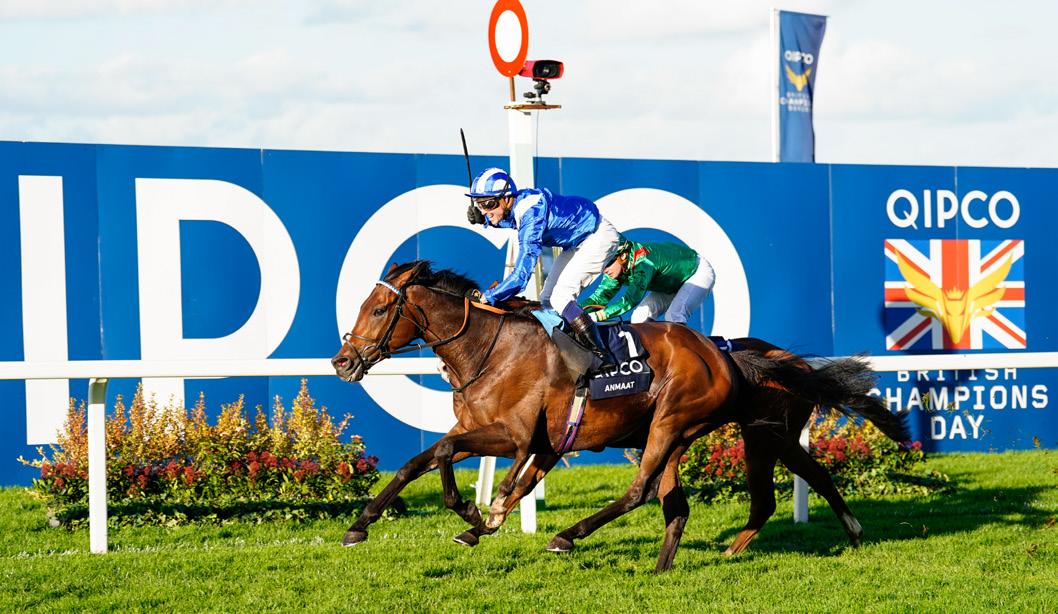
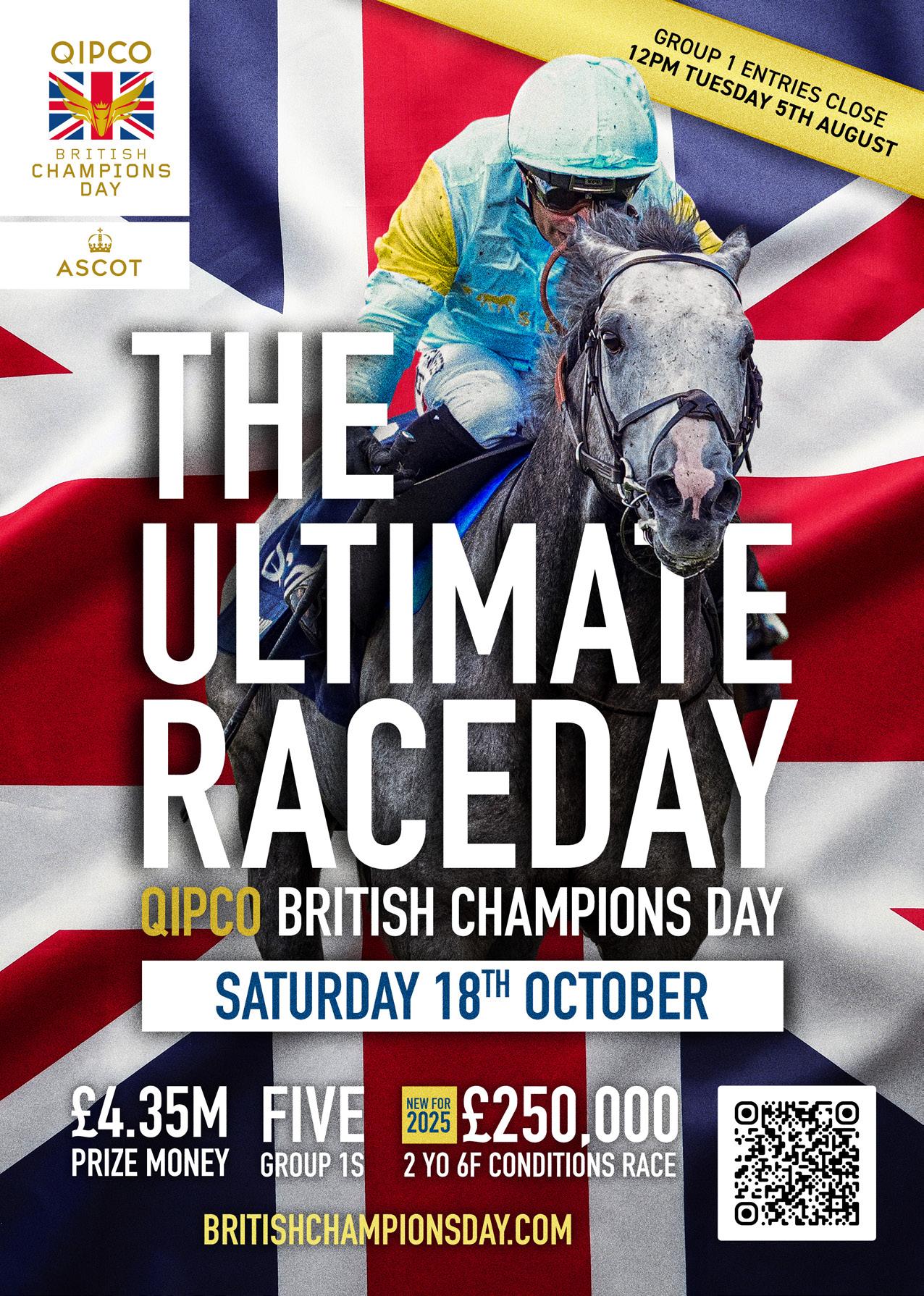

The Jockey Club of Türkiye hosts seven international races in Istanbul at Veliefendi Racetrack, as part of the International Racing Festival run on the first weekend in September. The highlights are the €97,000 (£83,000) 2000m (10f) Gp.2 Anatolia Trophy for three-year-olds & up; €187,000 (£161,000) Gp.2 1600m (8f) Topkapi Trophy for three-year-olds & up; the €97,000 (£83,000) Gp.3 1200m (6f) Queen Elizabeth II Cup for two-yearolds; €140,000 (£120,000) Gp.3 2400m (12f) Bosphorus Cup for three-year-olds and up and the Gp.3 1600m (8f) €130,000 (£112,000) Istanbul Trophy. Entries for all races close August 6th. There is a transport subsidy for international races, $18,000 for round-trip per horse arriving from the continents of America (North and South), Oceania, Africa and Far East countries, €12,000 for round trip per horse arriving from Europe and United Arab Emirates. Any horses scratched from the race after arrival by veterinary report will still receive transportation subsidy.

Kentucky Downs is home to America’s only European-style 2000m (10f) all turf racecourse, hosting just seven days racing from 28th August to 10th September, entries closing from 16th August, when emailed expressions of interest must also have arrived for the invitationals. The feature races are the $3.5m (€3m/£2.6m) Gr.3 Nashville Derby Invitational over 2400m (12f) for threeyear-olds, the $2.5m (€2.19m/£1.86m) Gr.3 1600m (8f) Mint Millions Invitational and the 2400m (12f) Gr.2 Kentucky Turf Cup Invitational of the same value which is also a “Win and You’re In Breeders’ Cup Turf” race. Both races are for three-year-olds and up. Carrying $2m (€1.75m/£1.48m) each are the Gr.3 Kentucky Downs Ladies Turf for fillies and mares three-year-olds and up over 1600m (8f), the Gr.2 Kentucky Downs Ladies Turf Sprint 1200m (6f) for fillies and mares three-year-olds and up, the Gr.1 1200m (6f) Franklin-Simpson Stakes for three-year-olds, the Listed 1600m (8f) Gun Runner for three-year-olds, the Gr.2 1200m (6f) Music City Stakes for three-year-old fillies, the Gr.3 2000m (10f) Kentucky Downs Ladies Marathon Invitational for three-year-olds and up fillies and mares, the Gr.3 2000m (10f) Dueling Grounds Oaks Invitational three-year-old fillies, and the
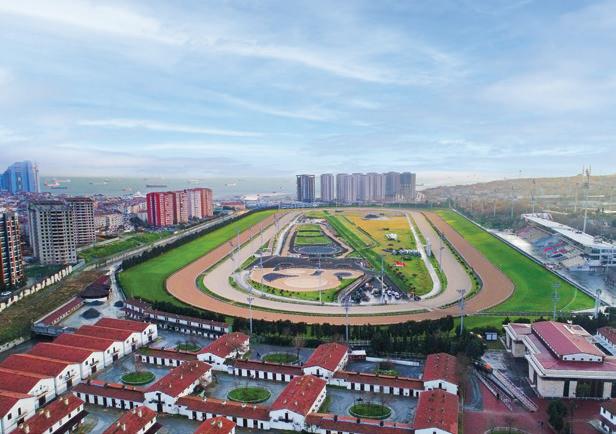
Gr.2 Kentucky Downs Turf Sprint 1200m (6f) for three-year-olds and up which is another of the “Win and You’re In Breeders’ Cup Turf Sprint Division” races.
Each carrying purses of $1m (€870,000/£738,000) are the Bowling Green Gold Cup Invitational 3200m (16f) for threeyear-olds up, the 1600m (8f) Listed Kentucky Downs Juvenile Fillies, the 1200m (6f) Listed Kentucky Downs Juvenile Sprint, the 1600m (8f) Listed Kentucky Downs Juvenile Mile, and the 1200m (6f) Untapable Stakes for two-year-old fillies. The Listed Tapit Stakes over 1600m (8f) for three-year-olds up heads three races worth $500,000 (€437,000/£370,000), alongside the 1600m (8f) NTL Tight Spot Overnight Handicap for three-yearolds up, and the 1600m (8f) Listed One Dreamer for fillies and mares three-year-olds up. Maiden races, already the richest in the world, carry €181,000 (€158,000/£133,300) per race.
“We want to build the Nashville Derby into a race that American and European horsemen alike point to and buy horses for,” says Ron Winchell, co-managing partner of Kentucky Downs with Marc Falcone. “We’ve positioned the Nashville Derby so that it fits into a big-money circuit for three-year-old turf horses.”
Bellum Justum ridden by Frankie Dettori wins the 2024 Nashville Derby Invitational at Kentucky Downs for trainer Andrew Balding.
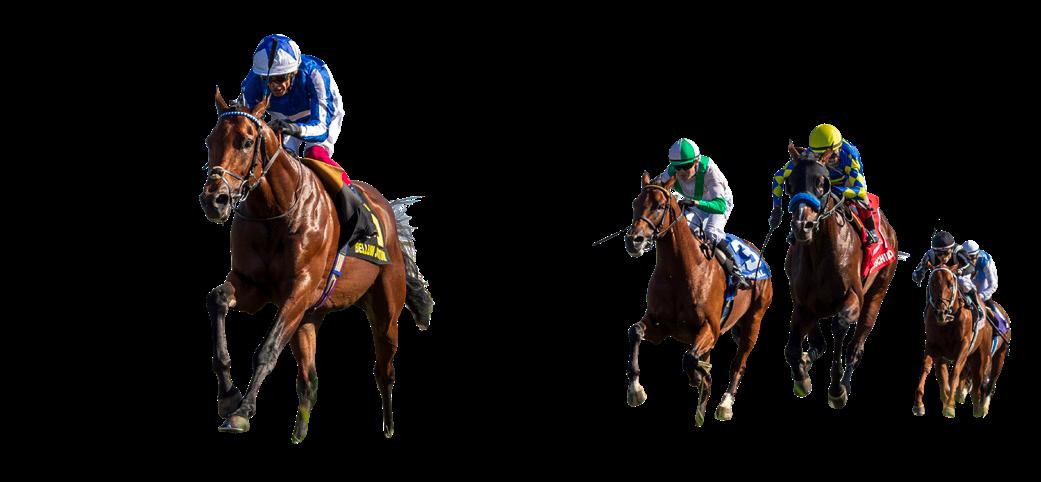
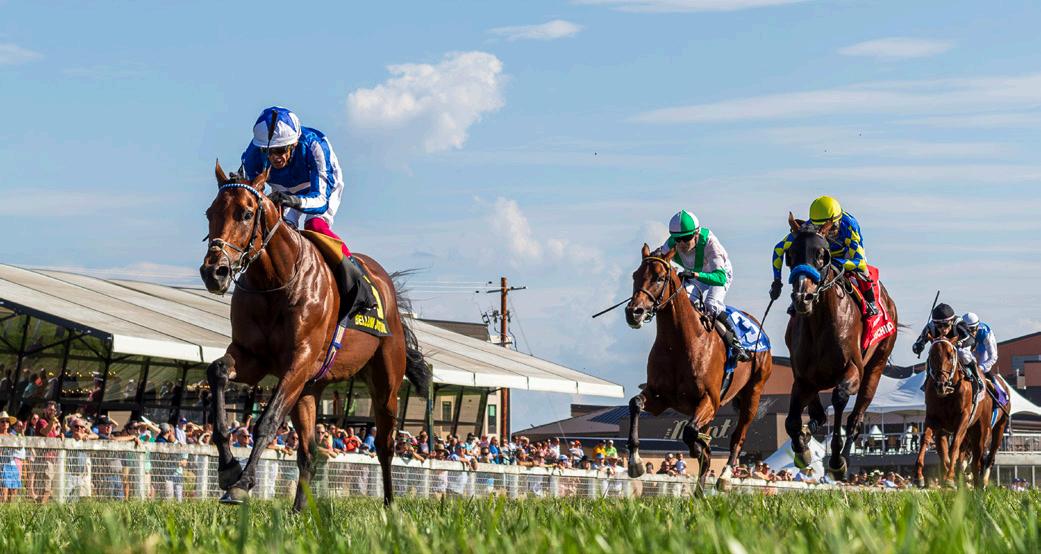
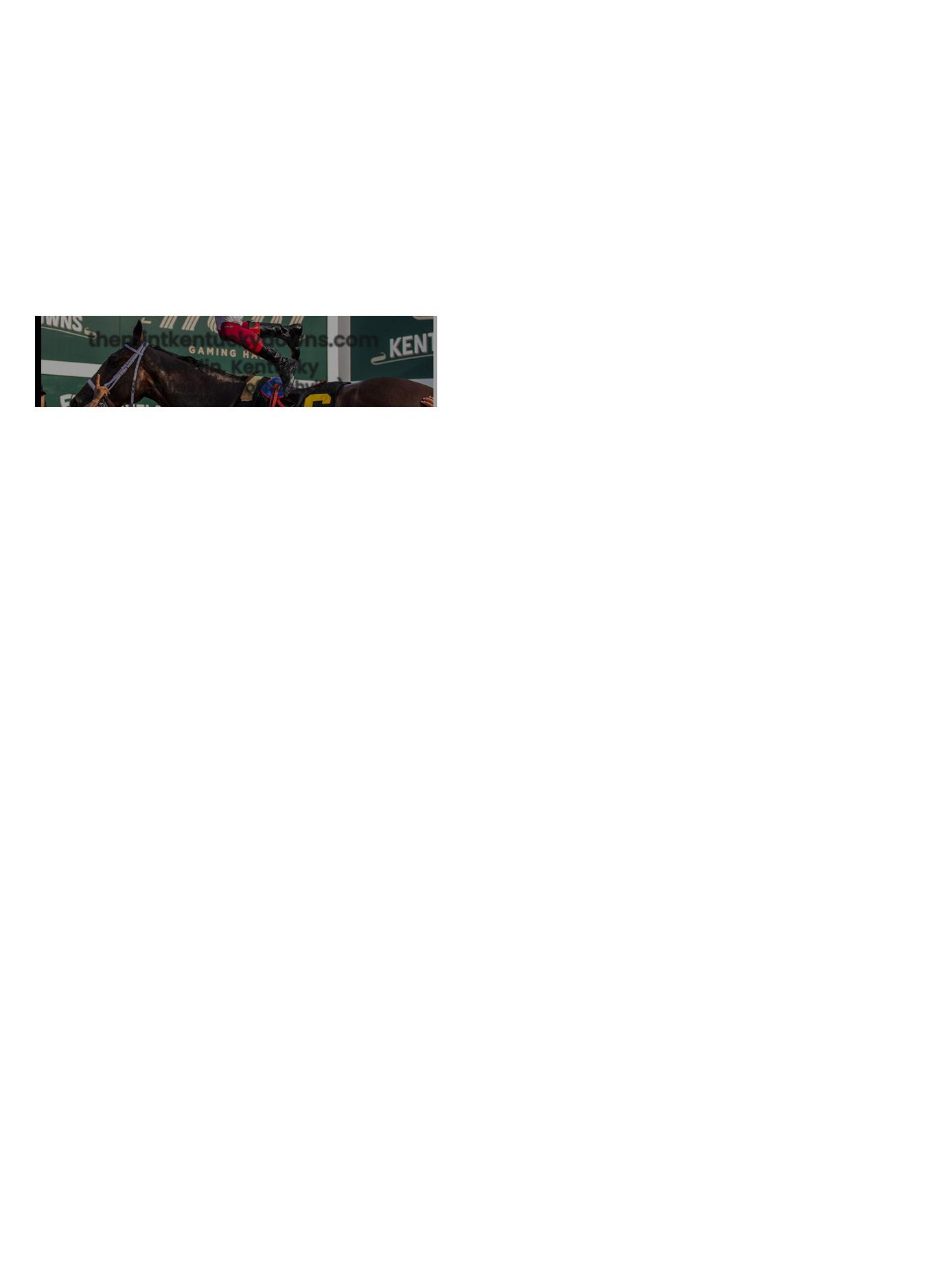

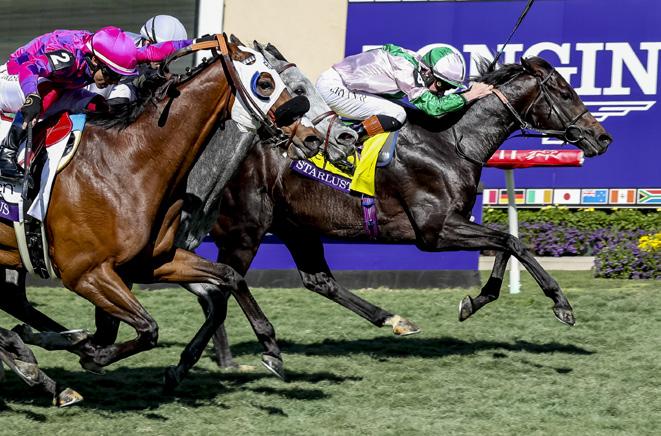
The 42nd running of the Breeders’ Cup will be held for a fourth time in Del Mar, California, on the edge of the Pacific Ocean in San Diego “where the turf meets the surf”. Consisting of 14 Grade 1 races with purses and awards totalling more than $31m (€27.11m/£22.97m), the meeting takes place Friday 31 October and Saturday 1st November.
“Our return to Del Mar in back-to-back years marks the continuation of a wonderful collaboration and successful partnership, both with our friends at the track and with the greater San Diego area,” says Drew Fleming, President and CEO of Breeders’ Cup Limited. “We look forward to once again gathering where the turf meets the surf as the world’s best thoroughbreds put on an incredible show.”
“We couldn’t be more excited about hosting back-to-back Breeders’ Cup World Championships and welcoming the very best in international racing back to the town of Del Mar and the greater San Diego area,” said Joe Harper, CEO of the Del Mar Thoroughbred Club. “The Breeders’ Cup represents the pinnacle in world-class racing and the organisation’s
willingness to return here again is a testament to the quality of our racing facilities, our idyllic weather, and the warm hospitality shown to our visitors by the local community.”
With 14 championship races held over two days, Future Stars Friday sees the two-year-old championships run for purses upwards of €931,130 (£783,500) and €1.9m (£1.6m). Saturday boasts nine races, culminating with the €6.5m (£5.5m) Gr.1 Breeders’ Cup Classic. The “win and you’re in” series consists of 69 of the best races from around the world, from June to October, awarding each winner an automatic and free entry into the Breeders’ Cup World Championships

The Bahrain Turf Series is fairly new to the calendar and has seen just five renewals to date. Running from December through to February, each race carries prize money from €73,750 (£62,850) up to €91,880 (£78,200) with total and the series is designed to attract international runners rated 85-100 to compete against local Bahrainbased horses.
“We believe the time is right to build on the success of the Bahrain Turf Series and expand the international programme to incorporate our season’s premier races,” explains His Highness Shaikh Isa Bin Salman Bin Hamad Al Khalifa, Chairman of the Bahrain Turf Club. “Our most prestigious races, including the Crown Prince’s Cup and the King’s Cup, fall within the Bahrain Turf Series calendar, and are intended to make racing in Bahrain an even more attractive and compelling proposition for international visitors.”
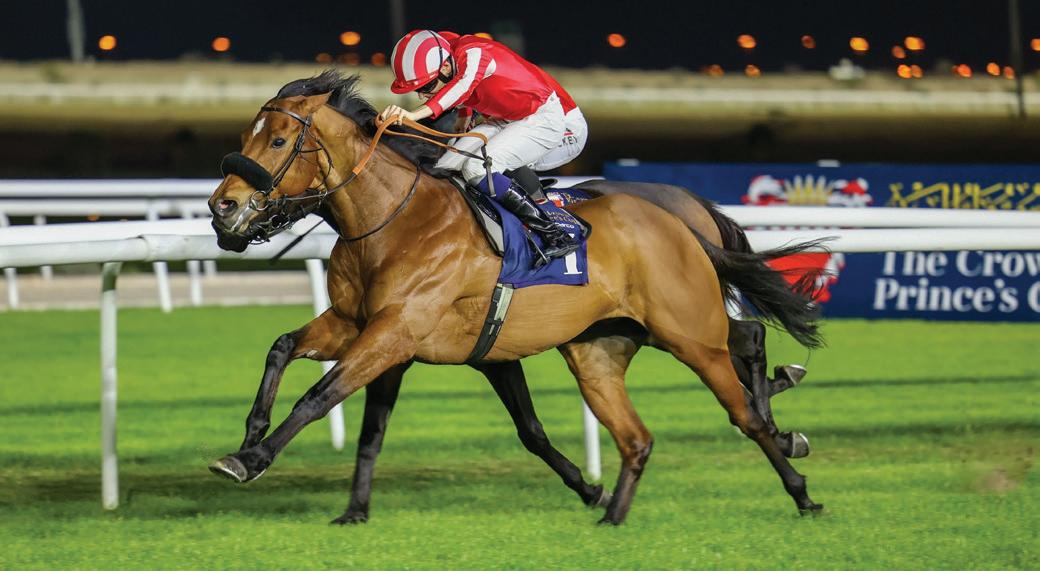
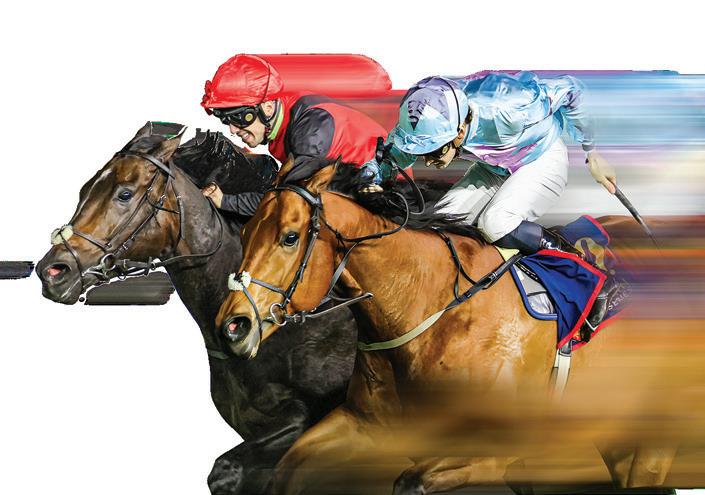
Wasmiya Cup Friday 16th January 2026
Adiyat Cup Friday 16th January 2026
Hawar Cup Thursday 29th January 2026
Anchorman Cup Thursday 29th January 2026
The Bahrain Mile Friday 30th January 2026
The Crown Prince’s Cup (Listed) Friday 30th January 2026
Al Sakhir Cup Thursday 19th February 2026
Bahrain Vision Cup Thursday 19th February 2026
HH Sh. Nasser bin Hamad Al Khalifa Cup Thursday 19th February 2026
Fateh Cup Thursday 5th March 2026
The International Handicap Thursday 5th March 2026
The Chairman’s Cup Friday 6th March 2026
Al Methaq Mile (Listed) Friday 6th March 2026
The King’s Cup (Group 3) Friday 6th March 2026
SHIPPING & STAFF INCENTIVES PROVIDED. CONNECTIONS OF EACH HORSE WILL ALSO RECEIVE A $10,000
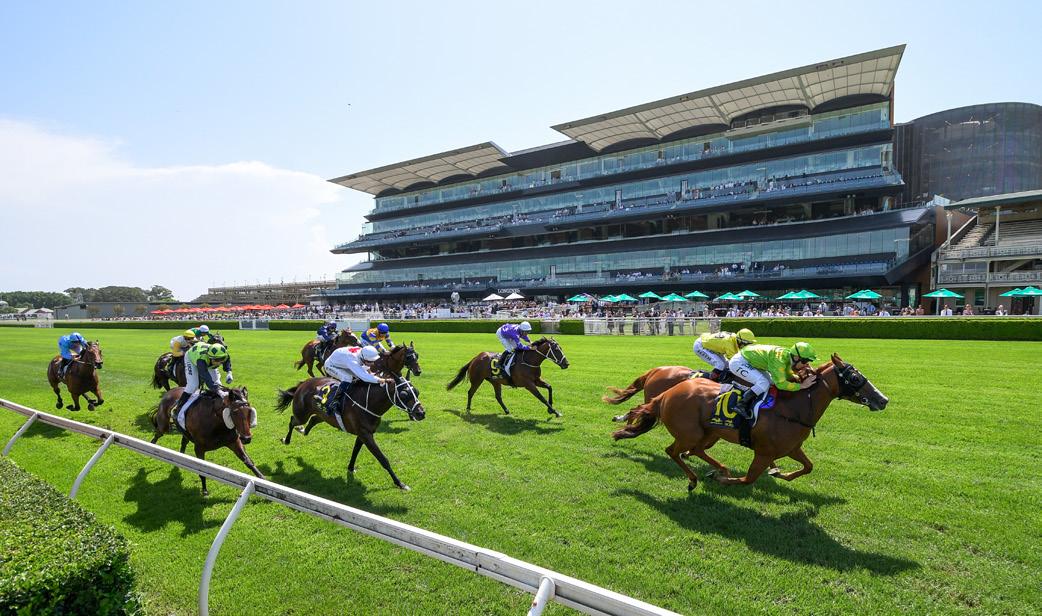
In total, the Series of sprint and middle-distance races comprises of 12 races, six in each division, with each race carrying bonus prizes for the horses accumulating most points in their respective division.
At time of going to press the dates and 2025/26 prize monies were not available, but last year saw significant increases. In December are two 1000m (5f) and two 2000m (10f) races for horses rated 84-100 and a 1200m (6f) and 2000m (10f) race for those rated 80-100.
In January there are two conditions races, over 1000m (5f) and 1800m (9f). February, when the season concludes, sees opportunities for horses rated 80-100 at 1000m (5f), 1200m (6f), 1800m (9f) and 2000m (10f). For those seeking black type, the 2000m (10f) Gr.2 Bahrain International Trophy in November for three-year-olds and up is establishing Bahrain as a premier horseracing destination. Run on turf, in 2024 the race was worth €921,858 (£785,315) in total, with €553,115 (£471,178) to the winner.
Entries close 2nd October with supplementary entry stages later in October, but there are three ‘Automatic Invitation’ races, for the first, second and third from The Royal Bahrain Irish Champions Stakes and the Gp.3 Strensall Stakes at York. The Bahrain Turf Club will provide air tickets for overseas connections and hotel accommodation on a room only basis. Shipment of invited horses will be arranged and paid for by the Bahrain Turf Club.

The Melbourne Cup Carnival needs no introduction and the Cup itself is only one of 10 Gp.1 racedays during the 22-day season at Flemington. The 3200m (16f) Gr.1 Melbourne Cup will be worth A$8.66m (€4.93m/£4.14m) this year, with prize money down to 12th.
During the week there are three €1.8m (£1.6m) weight-for-age Gr,1s, the 2000m (10f) Champion Stakes, 1600m (8f) Champions Mile and the 1200m
(6f) Champions Sprint. “It is always a great thrill to host international connections who make the journey to Melbourne,” Leigh Jordon, the VRC Executive General Manager, tells us.
More recently the Sydney Everest Carnival held at Royal Randwick and Rosehill Gardens has competed for equal attention, running from 21st September to 9th November, and boasting the world’s richest race on turf, The Everest, over 1200m (6f) in midOctober at Royal Randwick and worth A$20m (€11.3m/£9.5m).
The opening day at Royal Randwick features two weight-for-age races, each with a total prize of €615,840 (£520,265) for threeyear-olds and up, The 7 Stakes 1600m (8f) and the Gp.2 1100m (5f) Shorts. Randwick later hosts the iconic 1600m (8f) Epsom Handicap, a Gp.1 worth €924,000 (£780,500) and on the Everest supporting card is the €3m (£2.6m) Gp.1 King Charles III Stakes over 1600m (8f).
At Rosehill Gardens, the Hill Stakes over 2000m (10f), and 1800m (9f) Five Diamonds each carry a purse of €1.2m (£1m), with the €6.2m (£5.2m) Golden Eagle over 1500m (7f) the showpiece in November.
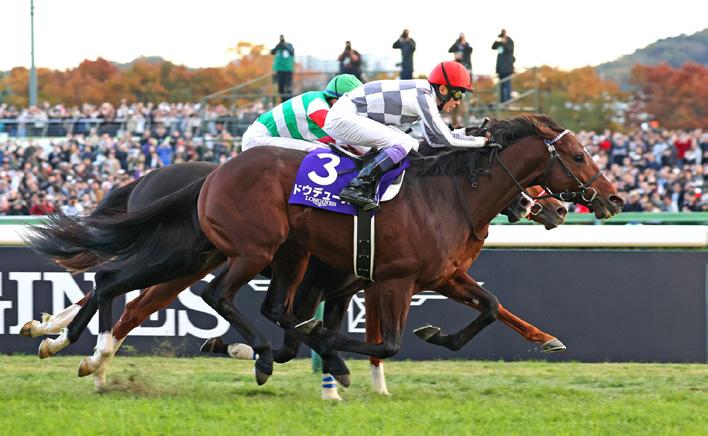

The JRA offers travel incentives for particular overseas horses for Group 1 races and for invited overseas horses for the Japan Cup. The JRA provides air transport costs for the horse and two attendants, the owner, trainer, jockey, and their spouse/partner, and five nights’ accommodation at a JRA designated hotel.
All Japanese Gr.1s are free to enter, or by free invitation, and carry the same declaration fee of €20,200 (£17,500), with significant bonuses from first down to last for the participating winners of designated Gr.1 races globally. The 2400m (12f) Japan Cup is run at Tokyo in November for a purse of €7.3m (£6.3m), Also in November, at Kyoto, the 2200m (11f) Queen Elizabeth II Cup for fillies and mares carries a purse of €1.9m (£1.6m), and the Mile Championship is worth €2.7m (£2.3m). Run on dirt at Chukyo Racecourse, the 1800m (9f) Champions Cup has a total value of €1.7m (£1.5m).



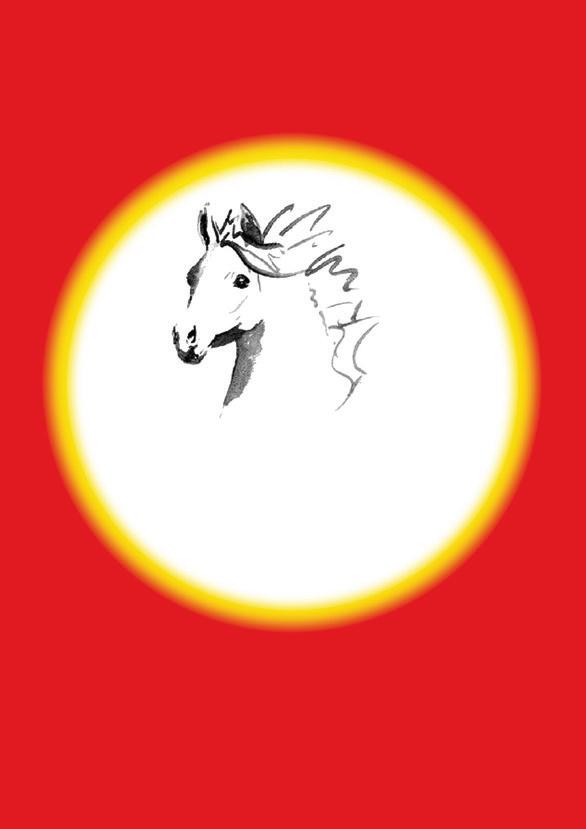

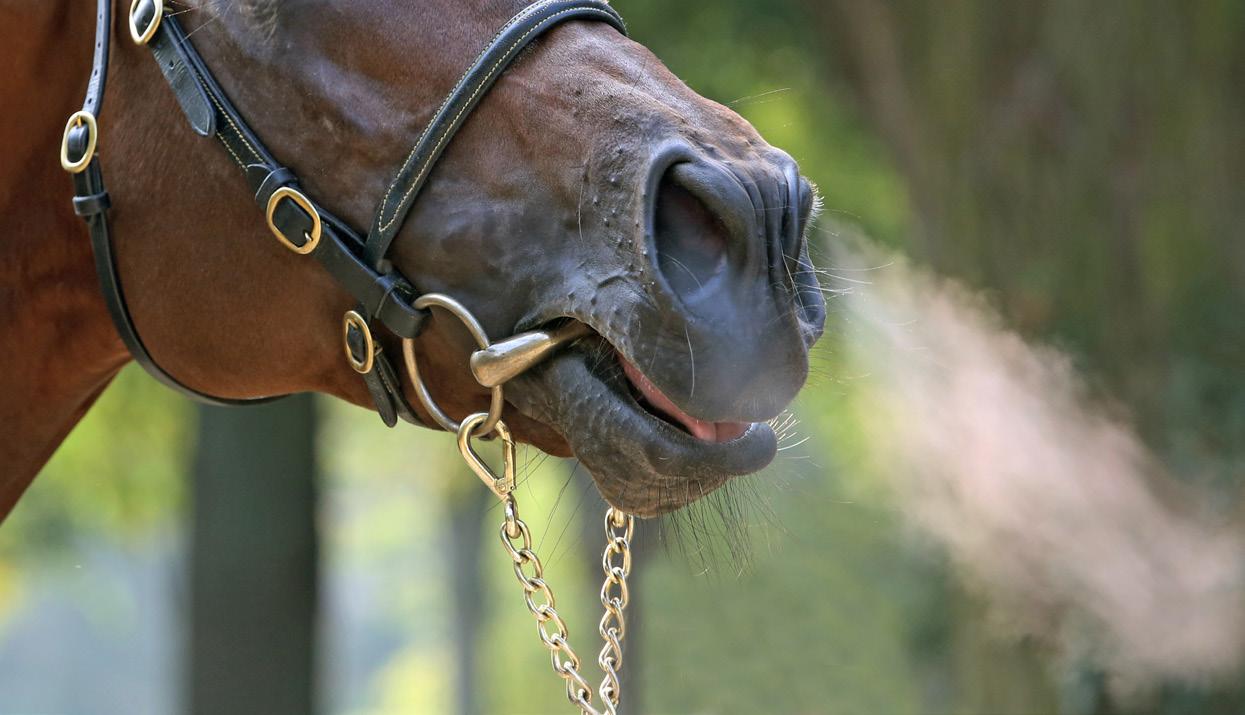

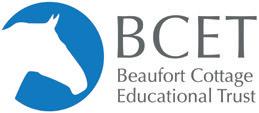

TBeaufort Cottage Educational Trust hosted the annual Gerald Leigh Memorial Lectures at the historic Tattersalls, Newmarket on June 4th, 2025.
This year’s lectures focussed on upper airway diagnostics & surgeries followed by tendon injury management & therapies.
he Gerald Leigh Charitable Trust was established in 1974, set up in memory of Gerald Leigh, a prominent owner breeder and best known for breeding the highly successful Barathea and Markofdistinction.
His legacy lives on through the trust, which not only reflects his remarkable achievements and lasting influence in the world of thoroughbred breeding and racing, but also continues his deep passion for scientific advancement and the welfare of horses— both within the racing industry and the wider equine community. The trust stands as a testament to Gerald Leigh’s enduring commitment to excellence, care, and innovation in all aspects of equine life.
Tim Barnett MRCVS of Rossdales Veterinary Surgeons, delivered two informative and interesting lectures on wind ops and the decision making and diagnostics relating to them. As we all know, wind surgery addresses upper airway conditions in horses that impair breathing and performance. Key anatomical structures involved include the arytenoid cartilage, vocal folds, epiglottis, and soft palate. Common issues include vocal fold collapse, often causing a whistling noise and linked to progressive recurrent laryngeal neuropathy “roaring”, which severely obstructs airflow. Another frequent problem is dorsal

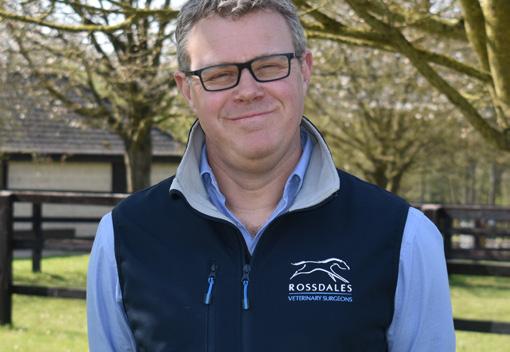
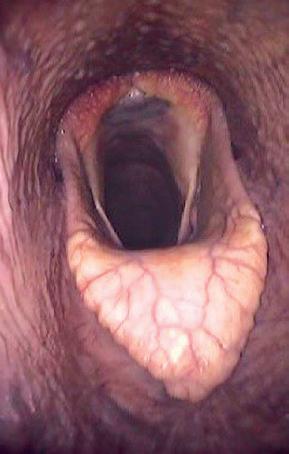
displacement of the soft palate (DDSP), where the soft palate flips over the epiglottis, blocking airflow and causing sudden loss of performance.
Palatal instability often precedes DDSP. Other conditions include medial deviation of the aryepiglottic folds, nasopharyngeal collapse, epiglottic entrapment, and ventral luxation of the arytenoid apex (VLAC). These disorders vary in severity and may be progressive or multifactorial. Barnett clarifies that although surgical interventions target these conditions, outcomes depend on the specific disorder and severity.
Upper airway conditions remain a major cause of poor performance in racehorses, with many requiring multiple surgical interventions. Accurate diagnosis, particularly via exercising endoscopy, is key, as many disorders only become apparent during physical exercise.
Tieback (prosthetic laryngoplasty) is the most common wind surgery but carries risks such as aspiration, pneumonia and swallowing dysfunction, despite efforts to improve surgical techniques. Newer techniques, like standing tiebacks and improved implants (e.g., titanium buttons, reinforced screws), aim to reduce complications and enhance results.
Other surgeries like Hobday (vocal fold removal via laser) were also discussed, emphasising the delicate nature of airway surgeries and the ongoing challenge to balance treatment effectiveness against risks and complications in our racehorses.
For DDSP, tie-forward surgery, which mimics natural muscle action to restore laryngeal position, has shown positive results, while thermocautery remains controversial. Epiglottic entrapment can now be safely corrected in standing horses using lasers or scissors. Emerging therapies include laryngeal reinnervation and dynamic neuroprosthesis to restore muscle function, as well as vocal fold filling to reduce aspiration pressure.
Collagen cross-linking is also under investigation as a less invasive method for soft palate stiffening. Barnett concludes, precise diagnosis and tailored interventions are crucial for optimal results in treating upper airway disorders in racehorses. These advances reflect a growing push for safer, more effective airway interventions in the racehorse.
Barnett then moved onto discussing the critical role of exercise endoscopy in diagnosing upper airway dysfunction in thoroughbreds, highlighting the limitations of resting endoscopy. While useful for detecting conditions like total RLN, epiglottic entrapment, or arytenoid chondritis, resting scopes often miss dynamic issues such as soft palate disorders and vocal fold collapse.
Recent developments in overground endoscopy which are battery-powered and rider-compatible, allow evaluation during real time exercise, providing accurate and practical diagnosis. This method has become the preferred standard, especially for assessing palatal instability and early RLN.
Clinical signs such as respiratory noise, poor performance, or sudden stops may indicate airway dysfunction, but accurate diagnosis requires proper exercise testing with horses cantering or galloping while synchronising breaths per stride. Additional tools like laryngeal ultrasonography aid diagnosis and planning of treatment.
Barnett cautioned against performing airway surgery without thorough diagnostics, as multiple simultaneous conditions can exist, and treatments must be carefully targeted to improve outcomes. Around 25% of thoroughbreds show clinical RLN, reinforcing the need for tailored, evidence-based treatment plans to support both welfare and performance.
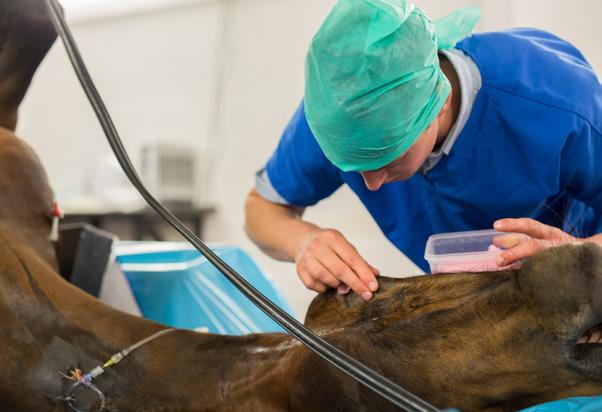

surgeries –
Dr Fabrice Rossignol, of Grosbois/Chantilly Equine Clinic discussed laryngeal surgeries, focussing on the evolution of research and engineering of the tie back and nerve graft. Rossignol’s specialist clinic is at the forefront of treating recurrent laryngeal neuropathy (RLN).
The condition is often linked to degeneration of the recurrent laryngeal nerve, affecting the cricoarytenoideus dorsalis (CAD) muscle, which is critical for opening the airway during exercise. Rossignol explains that this muscle contains few fatigue-resistant fibres, making it vulnerable to atrophy. Even minor narrowing of the airway significantly increases resistance, due to the exponential pressure effects described by Poiseuille’s law.
Diagnosis involves treadmill endoscopy and ultrasonography (caudal view of swallowing can be particularly useful) to assess dynamic airway collapse and muscle atrophy. Treatment is tailored to severity; advanced cases may require a tieback (laryngoplasty) using synthetic prostheses to partially open the arytenoid cartilage, though this risks complications like coughing. Newer techniques aim to restore function rather than replace it. One such innovation combines traditional tieback surgery with nerve grafting from the spinal accessory nerve, which activates during inspiration and contains fatigue-resistant fibres.
This hybrid approach improves airway opening and reduces side effects. Standing surgery under sedation allows more precise suture placement, minimising anaesthetic risk. Emerging technologies like 3D-printed implants and titanium screw anchors further enhance outcomes. Rossignol echoes Barnett’s earlier advice, that early intervention and careful case selection remain key to success.
LEFT: Upper airway conditions remain a major cause of poor performance in racehorses, with many requiring multiple surgical interventions.
Dr Rossignol continued on to discuss what and how we, as a racing industry, can learn from other disciplines. Recent research in trotters and sport horses highlights how neck flexion contributes to dorsal and lateral pharyngeal collapse, likely due to nerve inflammation affecting muscles such as the stylopharyngeus. Nasal obstruction, including alar fold collapse and nasal muscle paralysis, also play a role in compromised airflow. Treatment options now include alar fold resection, nasal fenestration (widening), and innovative approaches like titanium mesh implants to replace lost muscular function.
Dr Rossignol explains that high-speed treadmill testing has proven critical in diagnosing dynamic airway conditions, while a multidisciplinary approach involving vets, trainers and farriers enhances management strategies. Use of nasal dilation devices, such as nasal strips, remains restricted under many jurisdictions’ rules of racing.
It is clear that Rossignol champions cross-disciplinary learning, working with trotter trainers over decades has yielded practical insights, such as shoe removal to enhance performance. The methodical, detail-driven tack and equipment adjustments made in trotting disciplines provide valuable lessons in optimising performance.
Dr Rossignol also shares advances in surgical techniques, including refined approaches to epiglottic entrapment, emphasising the importance of collaborative care. Cross-disciplinary exchange continues to inform diagnosis, treatment and rehabilitation, enriching equine sports medicine and improving outcomes across disciplines.
To conclude the lectures on wind ops, Mark Johnston, Dr Rossignol and Tim Barnett took to the floor to field audience questions. The discussion focused on recurrent laryngeal hemiplegia (RLN) in horses, highlighting its probable hereditary component but unclear linking between particular genes. Experts note the complexity of breeding influences and caution against oversimplifying genetic causes, as RLN will most likely be linked with other traits.
Surgery helps individual horses but may skew breeding populations, as generally only the more expensive stallions receive treatment. Disclosure of surgeries before breeding is debated but difficult to enforce. Non-surgical solutions like resistance masks are emerging but their impact on reducing surgery isn’t yet clear. Overall, understanding and managing RLN’s genetics and treatment remain challenging and unresolved.
Early diagnosis of recurrent RLN relies on ultrasonography to detect early muscle atrophy; surgery is recommended promptly to prevent irreversible damage. In contrast, dorsal displacement of the soft palate (DDSP) often stems from muscle fatigue, immaturity, or inflammation and is best treated medically with training and reinforcement until at least three years old. Surgery is a last resort if medical management fails.
Multiple surgeries can be ethical if done safely and explained clearly. Yearling wind testing is variable and challenging to interpret, complicating sales disclosures. The increase in buyers scoping foals’ pre-sale is seen as an invaluable and unpleasant practice due to solid evidence that a foal’s laryngeal physiology will and can change tremendously as they mature. Ongoing research explores novel therapies such as pacemakers and magnetic stimulation.
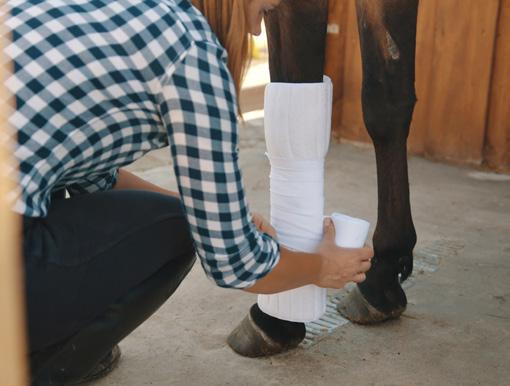
There is no introduction needed for Mark Johnston, who kindly provided us with his insight on the practical management of tendon rehabilitation. A renowned trainer with decades of experience offered a pragmatic view on tendon injury rehabilitation in racehorses, challenging long-held optimism around recovery. Despite advancements in ultrasound imaging and a range of therapies, from anti-inflammatories to experimental interventions like carbon fibre implants, he is yet to witness a truly successful long-term return to peak performance in top-level racing following a diagnosed tendon injury.
While ultrasound provides valuable detail, he still relies most on visual and tactile assessment, particularly tendon profile and signs of ‘bowing,’ which he considers a critical turning point. In his experience, few flat horses make a full comeback; many may race again, but recurrent issues and shortened careers are the norm. Mark’s approach is rooted in realism: throw everything anti-inflammatory at the injury early, manage workload carefully, and temper expectations.
Long rest alone is rarely effective and controlled rehab and early, aggressive treatment are key. He notes that previous use of prophylactic anti-inflammatories post-race helped reduce injuries, and questions whether restrictions on racecourse treatments may hinder progress. Prevention, early detection, and practical management remain the trainer’s most reliable tools.
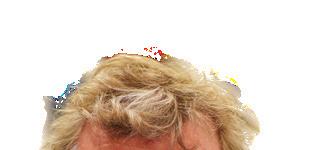
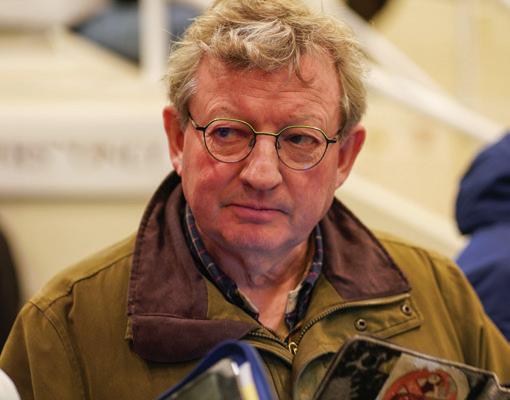
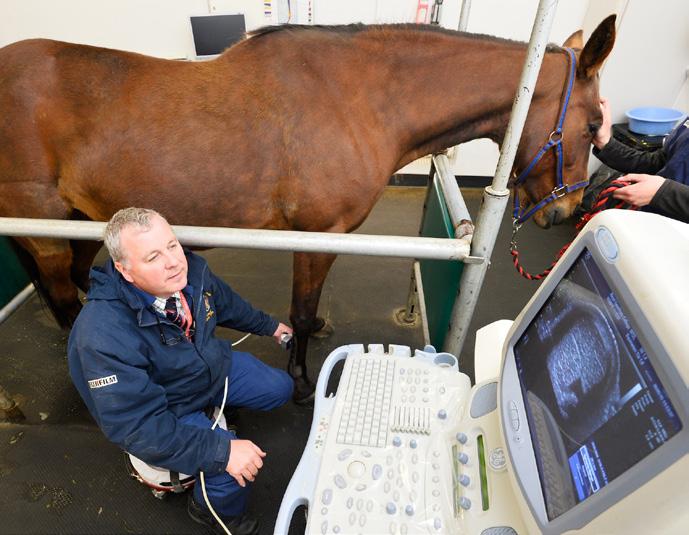
Professor Roger K.W. Smith FRCVS presented a detailed lecture on tendon injuries in racehorses, focusing on the superficial digital flexor tendon (SDFT) and the role of science in improving prevention and rehabilitation strategies. As a key structure for locomotion, the SDFT functions as an energystoring spring but operates near its mechanical limits, especially in thoroughbreds, making it prone to injury from accumulated loading rather than acute trauma.
Research shows that degeneration often precedes clinical injury, particularly within the interfascicular matrix (IFM), which loses elasticity with age and training. Tendon cells also become less responsive with age, impairing repair. Matrix metalloproteinases (MMPs) are implicated in post-exercise matrix degradation, further weakening the tendon.
Professor Smith emphasised prevention through training adjustments: avoiding hard ground, spacing out intense work, and ensuring sufficient recovery of, ideally 72 hours. Early detection is critical. Diagnostic tools such as ultrasound, Doppler, and Ultrasound Tissue Characterization (UTC) can identify structural changes before injury becomes apparent.
When injury occurs, a prolonged, structured rehabilitation programme guided by regular imaging is essential. Biologic therapies like mesenchymal stem cells (MSCs) and plateletrich plasma (PRP) are showing encouraging results, improving tendon structure and reducing re-injury rates. A personalised, biologically informed approach remains key to safeguarding tendon health in racehorses.
Lt. Col. Dr Tom Clack delivered a comprehensive lecture on tendinopathy, highlighting its causes, treatments, and parallels between equine and human medicine. Tendinopathy, a chronic overuse injury, follows a three-stage progression: reactive
tendinopathy (early inflammation), tendon disrepair (structural change and neovascularisation), and degenerative tendinopathy (reduced symptoms but increased rupture risk).
Historically, eccentric loading exercises, which came about via human achilles research, became the core treatment. Today, management is more tailored, focusing on biomechanics, load control, and personalised rehabilitation.
Diagnosis includes clinical evaluation and ultrasound, with advanced modalities like shear wave elastography and UTC offering deeper insights into tendon integrity and healing.
Dr Clack advocated a multimodal treatment strategy: progressive loading, extracorporeal shockwave therapy (ESWT), and injectables such as corticosteroids (for short-term relief) and PRP, which supports healing through growth factors.
Crucially, he emphasised the value of thoroughbred racehorses as models for human tendon injury. Their tendons endure similar high loads, and developments in imaging, PRP, and regenerative therapies in equine medicine are increasingly influencing human sports injury treatment.
Dr Clack echoed the importance of early detection, strategic recovery protocols, and ongoing collaboration between human and veterinary medicine to improve long-term outcomes in equine athletes.
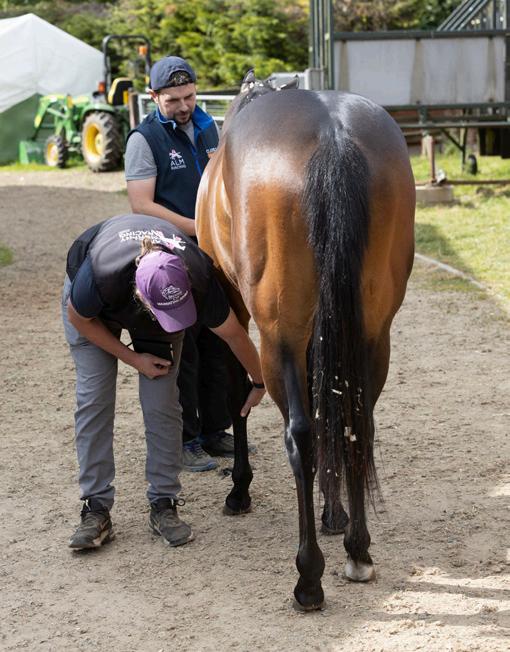
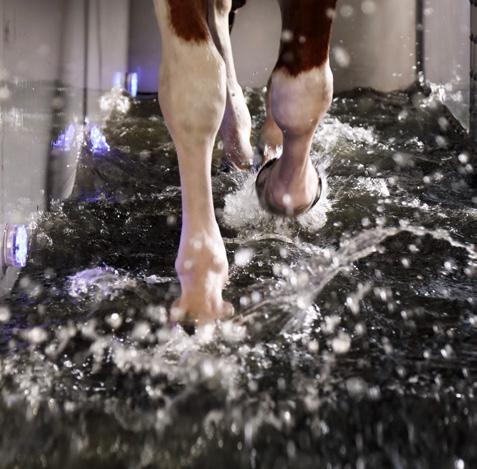
We were then treated to a lecture by Veterinary surgeon Amelia McArthur, who provided a grounded and insightful view on equine rehabilitation, shaped by her hands-on experience running a specialist rehabilitation yard in North Yorkshire. Based at the former training yard of Peter Beaumont, her facility includes a water treadmill, deep sand gallop, extensive hacking, and a quiet stable environment, all tailored to support recovery and performance conditioning.
It is clear that McArthur advocates for a genuinely holistic approach, not rooted in fads, but in understanding the whole horse: injury history, temperament, conformation, previous management, and future athletic goals. Rehabilitation begins with controlled exercise, which is often hand-walking, though she acknowledges the safety challenges of managing fresh horses, advising use of protective gear and sedation when necessary. In-stable physiotherapy, such as weight-shifts and limb lifts, can supplement or replace walking early on.
She stresses that rehabilitation literature often lacks clarity, so individualised programs with regular reassessment, particularly ultrasound checks, are essential. Progressive loading, surface variation, and adapting treadmill use depending on injury type all help prevent reinjury. For tendon cases, treadmill work is delayed to avoid strain from reduced slip.
Crucially, McArthur highlighted the impact of rider weight and balance, particularly for ex-racehorses, and the importance of body condition in supporting soundness. A striking case study showed how fat loss transformed a Highland pony’s tendon recovery and competitive ability.
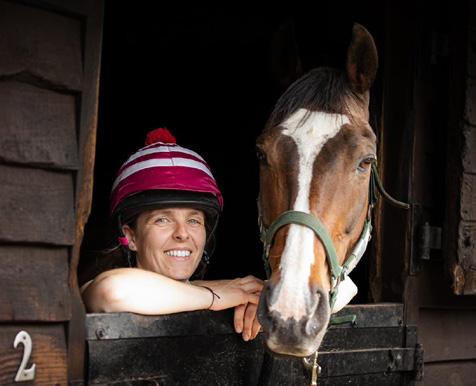











































































































































































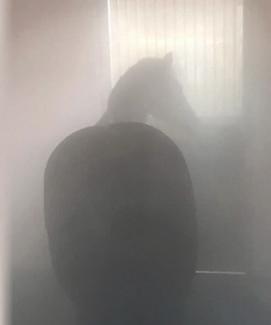































































































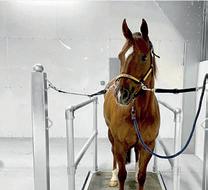
































The final open floor discussion of the day took place between Mark Johnston, Professor Roger Smith, Dr Tom Clack and Amelia McArthur.
The topic of military-style training programmes running parallel with equine management were discussed, particularly in managing overuse injuries like stress fractures. Key strategies include load management and gradual conditioning over 4–8 week cycles. It was noted that today’s horses, like modern human recruits, can often lack natural conditioning, especially in the feet, increasing injury risk.
Prevention is focused on structured training that supports both tendon and bone development, particularly in young horses (yearlings), where tendons must adapt before bones are heavily loaded. Ground conditions and surface variation also play a complex role in musculoskeletal health.
Rehabilitation and pre-training approaches remain debated, but there’s agreement that progressive, controlled exercise is essential. Tendon injuries, especially in flat racehorses, are notoriously hard
to overcome. Advances in ultrasound and imaging, such as UTC and shockwave elastography offer new promise, though they come with high costs and technical demands.
National Hunt horses often return to competition successfully after injury, offering hope, but managing owner expectations remains key. Medication use, such as dexamethasone, is tightly regulated on racecourses to uphold integrity. Like elite human athletes, horses need carefully balanced workloads and rest to prevent chronic damage. While rehabilitation methods are improving, prevention remains the best strategy.
This year’s renewal of the Gerald Leigh Memorial Lectures was once again full to the brim with exciting new research and innovative thoughts from world leading experts. Attendees, all involved within various areas of the horseracing industry made for diverse and thought-provoking discussions.
The commonality amongst the lecturers and attendees alike was the undeniable commitment to ensuring the betterment of equine welfare in all avenues of bloodstock, racing and life after. Safe to say, all who attended are already looking forward to the 2026 lectures.
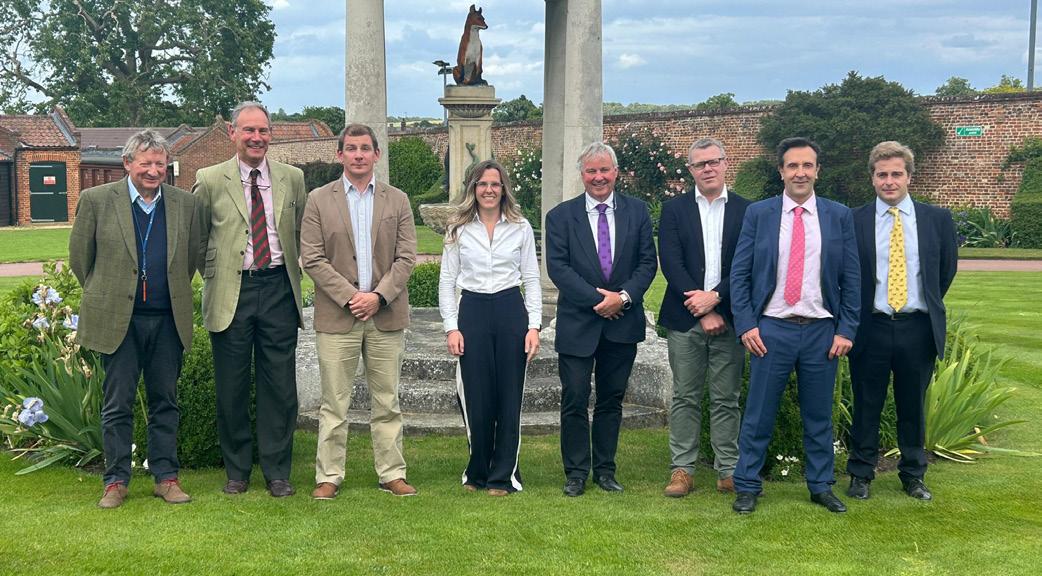
Through the professionalism and expertise of our staff, together with the fantastic range of facilities, our goal for rehabilitation is to return every horse to its owner/trainer with the optimum chance of fulfilling its potential.
Louise Collinson mobile +44 (0)7792 260666 email lou@lcequinerehab.co.uk www.lcequinerehab.co.uk

The Flexineb® E3 is a portable, silent equine nebuliser. Battery or mains-operated, it can be used for daily airway maintenance therapy prior to racing and the targeted delivery of inhaled medication for the management of equine airway disease.
Nebulisation of non-prohibited substances complies with FEI General Regulations.

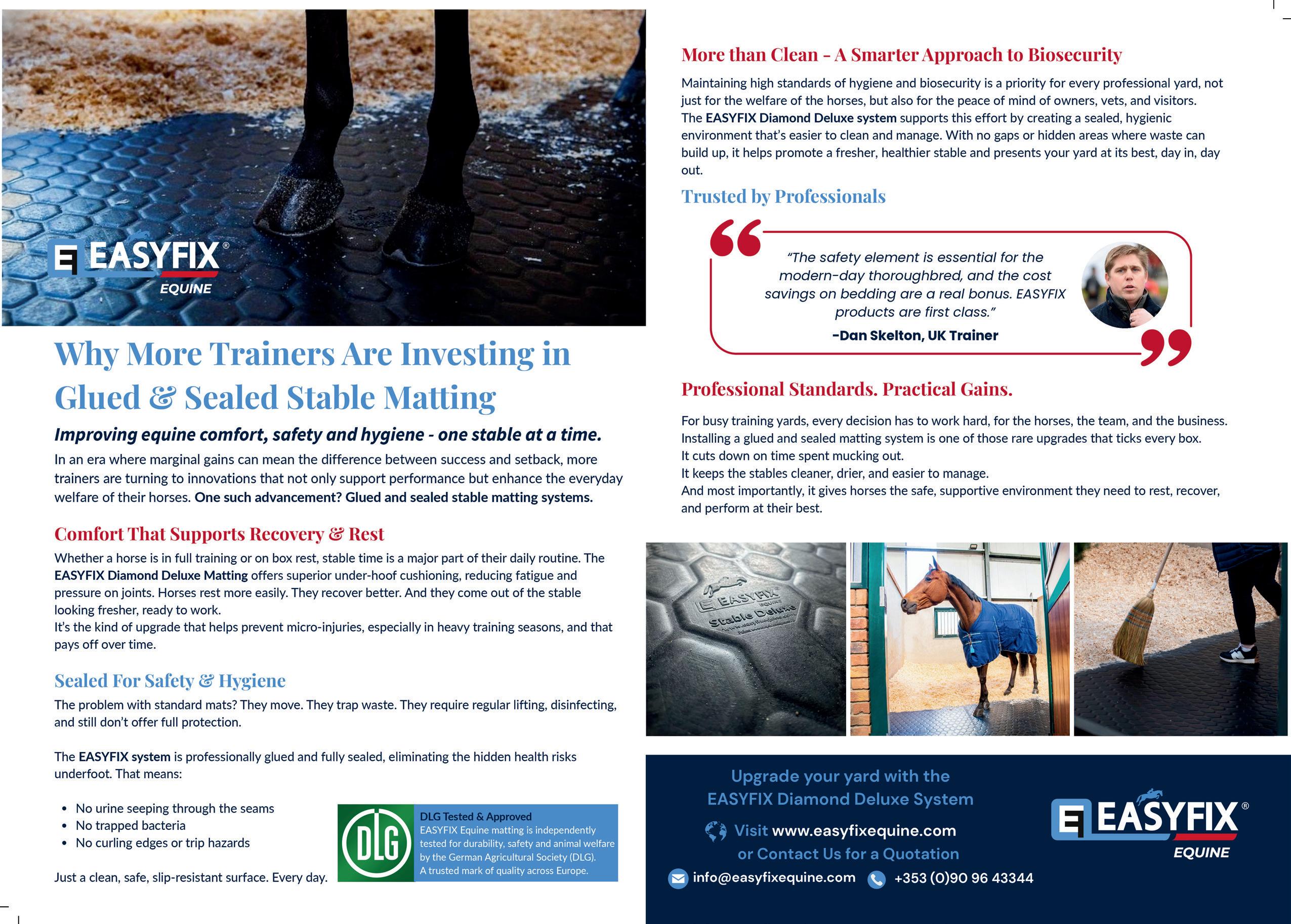

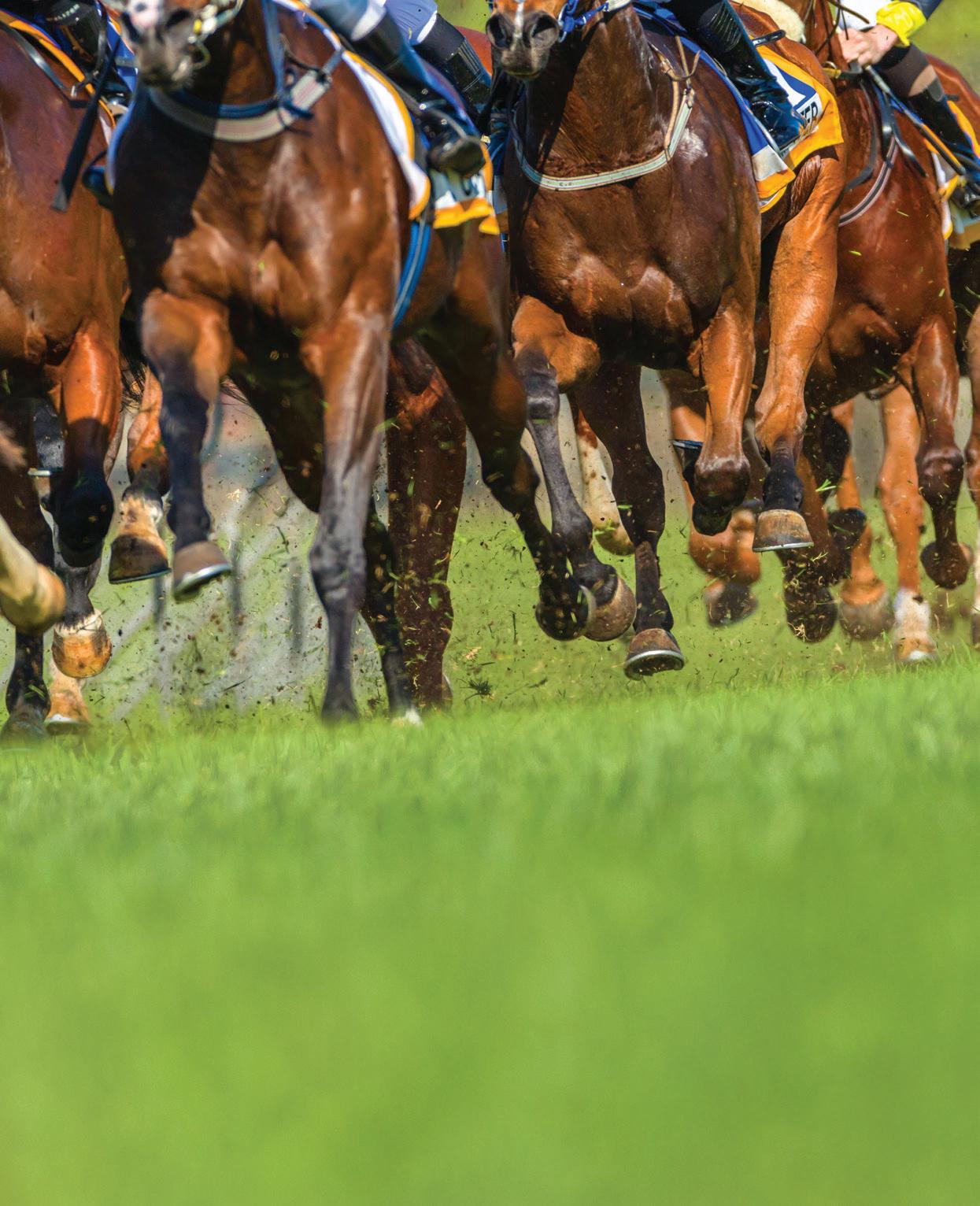
The incidence of serious fractures in horses racing on the flat is low (around one case every one to two thousand starters); but when fractures occur the consequences are often severe for the horse and, sometimes, the jockey. Both the severity and the dramatic nature of these injuries cause a significant negative impact to everyone connected with the horse, as well as spectators. The International Federation of Horseracing Authorities (IFHA) convened the Global Summit on Equine Safety and Technology at Woodbine Racecourse, Toronto, in June 2024, to focus on how current research into causes of racehorse fatalities on the course, including fractures, can be advanced and translated into action, to better understand the factors leading to fatalities and potentially mitigate them. At the meeting there were two workshops where specialist veterinary clinicians, pathologists and researchers came together to focus on Exercise Associated Sudden Death incidents and fractures.
While most fractures that affect racehorses on the flat appear to arise spontaneously, while the horse is racing, and in the absence of any obvious trauma, we now know that the majority are the consequence of structural fatigue, involving a process that started weeks or even months earlier. Just as a paper clip will break if it is repeatedly bent once too often, a bone will fracture if it is loaded recurrently beyond certain limits. Microscopic damage accumulates in the bone tissue until a small fissure develops, which can extend to a severe fracture if it is not detected and the horse continues to race. The fatigue life of bone decreases exponentially as the magnitude of load on the bone during each loading cycle increases. Loads on the skeleton are directly related to the speed of exercise, work at a fast gallop causes fatigue damage at a rate many orders of magnitude greater than when the horse is exercised at slower speeds. Unfortunately, fatigue damage, and even formation of small fissures in the bone, often proceed without the horse showing any outward signs and so, historically, affected horses have often gone undetected until it is too late.
An ability to run fast has been of evolutionary benefit to horses by enabling them to escape predators. Humans have refined this characteristic in specific breeds, notably the thoroughbred, through targeted breeding and training practices. The need for a horse to undertake a fast gallop in the wild is likely to be relatively infrequent and well-within the bounds that are likely to cause fatigue damage. Conversely, society’s expectations of racehorses, and the training imposed on them, place loads on the skeleton that may be excessive.
Some readers may be surprised to learn that bone is a remarkably “smart” tissue. It is so much more than the equivalent of the “concrete structural beam” laid down to support man-made structures. While bone is composed partly of mineral, it is still very much a living tissue, packed with blood vessels, nerves and cells. Furthermore, the cells are all physically interlinked through microscopic projections, and can communicate with each other
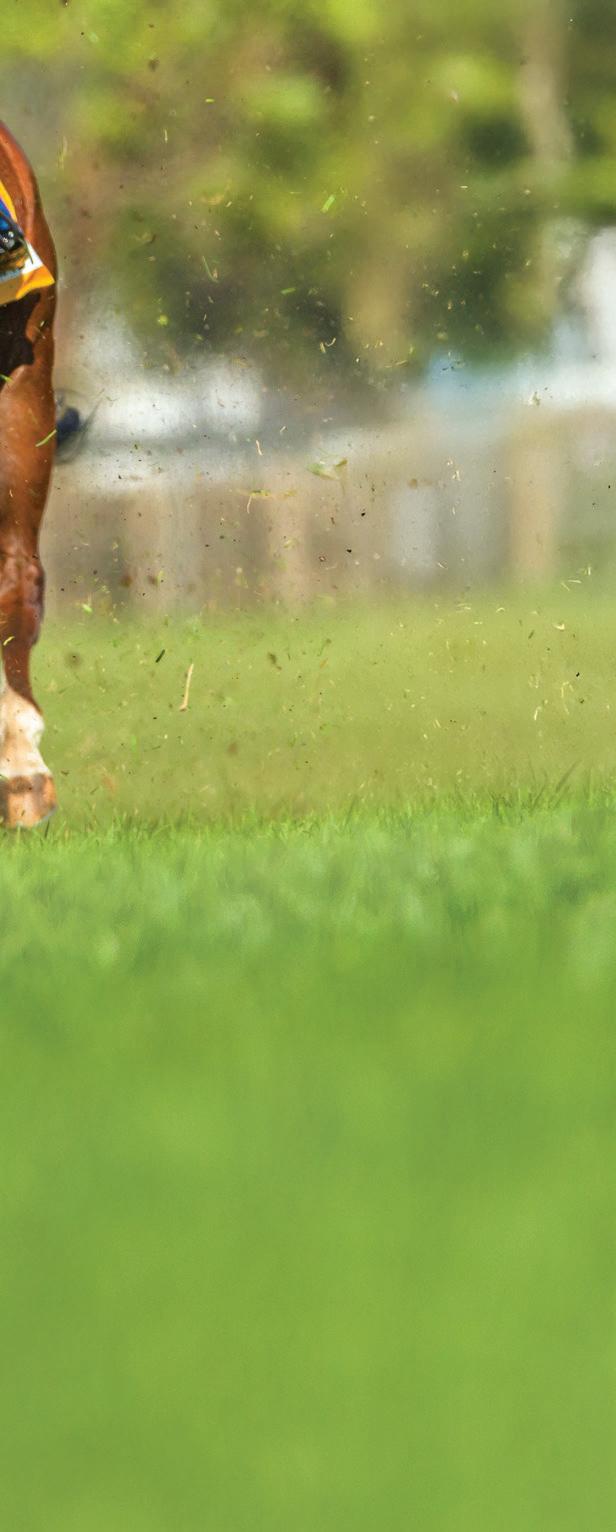
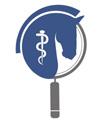

through their interconnections. This biological network allows bone tissue to detect the effects of loads applied to the bone as a whole, and to initiate a cellular response to model the bone structure if those loads change. For instance, increase in the magnitude of prevailing loads (e.g. through increase in an animal’s weight or the introduction of high-speed work) will cause greater deformation of the bone and this will stimulate a process that results in the formation of additional bone mass and, if beneficial, subtle reshaping of the bone’s geometry. The bone will be stronger as a result and deform less for the given load. Conversely, if the prevailing loads decrease (e.g. during a period of rest) bone deformation is reduced, and bone may be removed through a process of resorption. This overall mechanism of remodelling is called “adaptation”. Bone adaptation facilitates the formation and maintenance of a skeleton that is continually fit for purpose, even as that purpose changes.
Beyond this, there are biological mechanisms that detect when a bone is damaged (e.g. small cracks develop) and will initiate repair. The restoration process involves removal of microscopic packets of bone tissue, including the damaged portion, and its replacement with fresh, healthy material. This process means that fatigue-related damage of bone can be resolved and, theoretically that a bone can tolerate infinite cycles of load. However, the process of repair has been shown to be inhibited if the bone is still regularly subjected to cycles of high load (i.e. the horse remains in training) and it can also be overwhelmed if the rate of damage accumulation is too high.
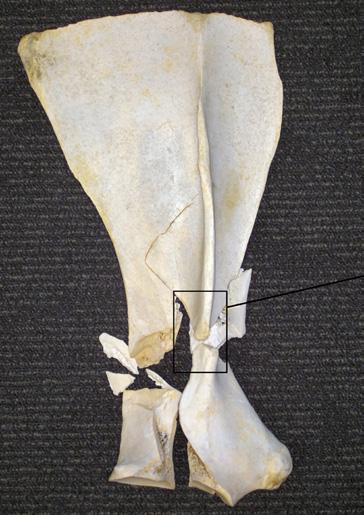


Joint between Thoracic & Lumbar Vertebrae
Shoulder Blade
Upper Humerous
Lower Humerous
Upper Cannon
Mid Cannon
Lower Cannon
ANATOMICAL LOCATIONS OF COMMON FATIGUE-RELATED FRACTURES IN RACEHORSES.
Applying the knowledge we have gained from research over the past forty years has already had an impact on reducing the risk of fractures in some situations, and there are good reasons for optimism that we will be able to prevent a much greater proportion of racing fractures in the future. For example, epidemiological studies can help to identify certain management practices and design features of racecourses associated with an increased risk of fracture and these can be modified. The introduction of
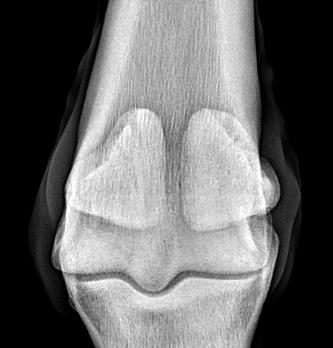
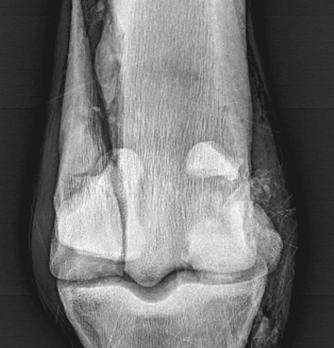
strict rules governing the validity of sale of a horse in a claiming race in some jurisdictions in the USA, depending on the health status of the horse immediately after the race, has had a significant impact on reducing the incidence of fractures. Over 300 potential risk factors have been examined and those found to have a significant association with fracture, modelled in numerous studies. Applying the findings to individual racecourses still requires much work and, ultimately, almost half of the variation in risk of fracture appears to be due to factors associated directly with the horse itself. Epidemiology has also been applied to identify characteristics of a horse’s history that may indicate that it is at higher risk of fracture. These studies depend on access to detailed and accurate data and recent work has highlighted the importance of including veterinary records. Access to these records, suitably anonymised to protect
LEFT: An example of how damage associated with fatigue progresses. No.1 radiograph was taken several months before the severe fracture occurred (No.2). Close examination reveals a small, incomplete fissure at the point where the major fracture subsequently developed.


confidentiality, will have a profound impact in the development of more accurate models that can be used to predict the risk of fracture.
Studies into the genetics of thoroughbreds have identified particular genes that are associated with a predisposition to fracture. This is a highly complex field and interaction of the environment and genetics ultimately determines the fracture status of an individual animal. However, genetic screening will help to identify horses that may benefit from closer monitoring. Clearly this is a sensitive topic, especially to breeders, although hopefully stakeholders will make choices that will be in the best interest of thoroughbreds and racing in the long term.
Wearable technology, carried on the horse to record cardiac and stride data shows promise in being able to identify horses at early stages of skeletal injury. Preliminary results suggest that this is possible by identifying changes in stride characteristics, such as stride length, in individual animals in races leading up to the horse sustaining an injury. There has been a lot of interest and publicity associated with wearable technology and its use to identify horses both at imminent risk of fracture as well as those with irregularities of cardiac rhythm which may lead to exercise associated sudden death, although work still needs to be undertaken to substantiate their use in both these contexts. These devices are also proving increasingly valuable as tools to record actual workload undertaken by individual horses in training. This is important information that is needed for researchers to
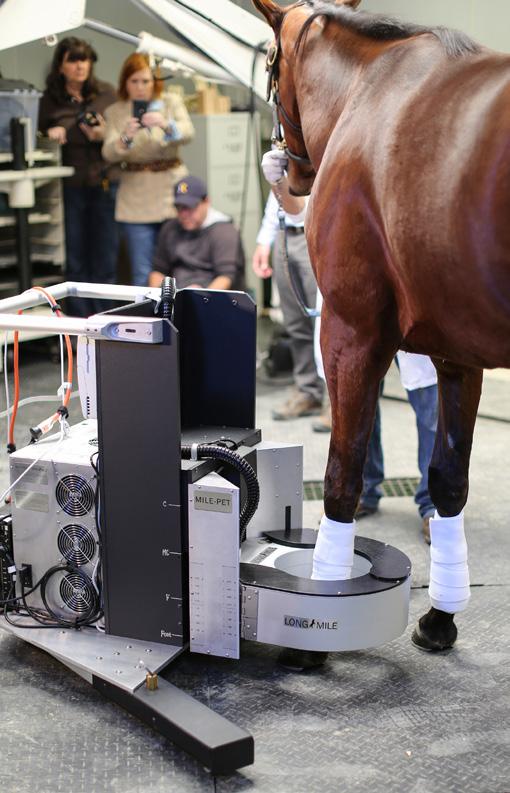
ABOVE: The increasing availability of Positron Emission Tomography (PET) machines that can be used to image the lower limb of standing horses has made their application more practical in horses that are in active training.
accurately model associations between workload and risk of fracture, and for trainers to use to apply such models in the future. Modern clinical imaging technology, especially that which allows detailed scrutiny of areas of bones in the locations where fractures commonly originate, facilitates identification of bone damage due to fatigue much earlier than was previously possible. The increasing availability of computed tomography (CT) and positron emission tomography (PET) machines that can be used to image the lower limb of the standing horse has made their application more practical in horses that are in active training. There is potential for this technology to be used to screen horses prior to racing, as is currently undertaken before some race meetings in the state of Victoria, Australia. The enhanced resolution of CT helps to identify subtle fissures in bone that may be overlooked by conventional x-ray procedures and in such cases its value as a screening tool is indisputable. However, work is still ongoing to decipher the importance of even more subtle changes in bone structure. Undertaking imaging studies carries expense, and is not without some risk, and the concept of regularly imaging the relevant anatomical regions of racehorses to screen for risk of fracture clearly has challenges.
When a horse is brought back into work after a period of rest, the process of training the skeleton has to be considered all over again.
A simple blood test for “biomarkers” that could identify animals at an early stage of pre-fracture pathology would be a helpful tool. Even if the accuracy of such a test was insufficient to make important decisions about whether or not to race a horse, it could at least be used to reduce the number of animals that would need to be subjected to imaging studies. Research into changes in the patterns of arrays of many molecules in the blood (so called “omics” studies) have led to many breakthroughs in screening systems in humans and animals. Preliminary studies give hope that this technology can be used to assist in the detection of horses at increased risk of fracture, although a practical test is still likely to be several years off.
It is important to acknowledge that all screening tests carry some risk: they may falsely identify normal horses to be at increased risk (false positives) and fail to recognise horses that have a problem (false negatives). Careful development and thorough testing of screening systems is therefore essential, and this takes time and money. Furthermore, no test is ever 100% accurate, and the practical application of screening designed to prevent fractures will require racing to strike a balance between

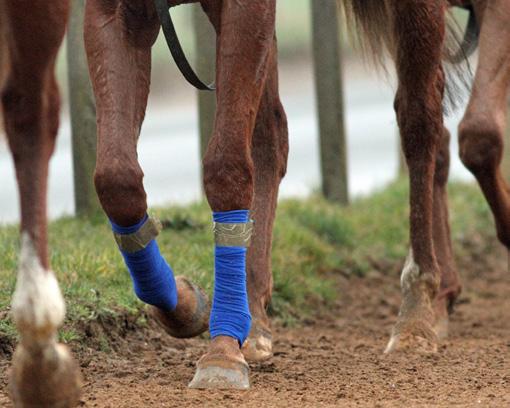

stopping some normal horses from running and failing to identify some of those likely to suffer a fracture. This will require informed and engaged discussion between researchers and all relevant industry stakeholders, and strong leadership and clear communication from racing’s regulators.
Perhaps an even greater question is whether we can recommend ways of exercising horses in training that minimise the risk of fatigue damage that leads to fracture in the first place. Research conducted in Melbourne, Australia demonstrated that trainers who worked their horses at high speed in training less frequently than others experienced a lower incidence of fracture. A very important additional bit of detail was that, excepting the extremes, their racing results and performance outcomes were no different. Recognition that bone is like other tissues, in that it needs time to respond to changes in physical activity and requires a training programme that accounts for this, is important. We are all well aware of the need to develop muscle to improve power and endurance in training, but the concept of training bone is less familiar.
Fortunately, an adaptive response of bone has been shown to occur reasonably quickly to only a few cycles of altered load. Stimulating young, healthy racehorses to increase the strength of their bones requires only a short distance of gallop work. Therefore, introducing a very small amount of fast work at the early stages of a training programme can be sufficient to prepare the bones for more sustained work without the risk of causing substantial fatigue damage. However, if the horse is rested from high-speed work for more than a few days, the process reverses, and bone mass will start to be resorbed (in evolutionary terms, there is no point wasting energy carrying around bones that are bigger and heavier than you need them to be). So, when a horse is brought back into work after a period of rest, the process of training the skeleton has to be considered all over again.

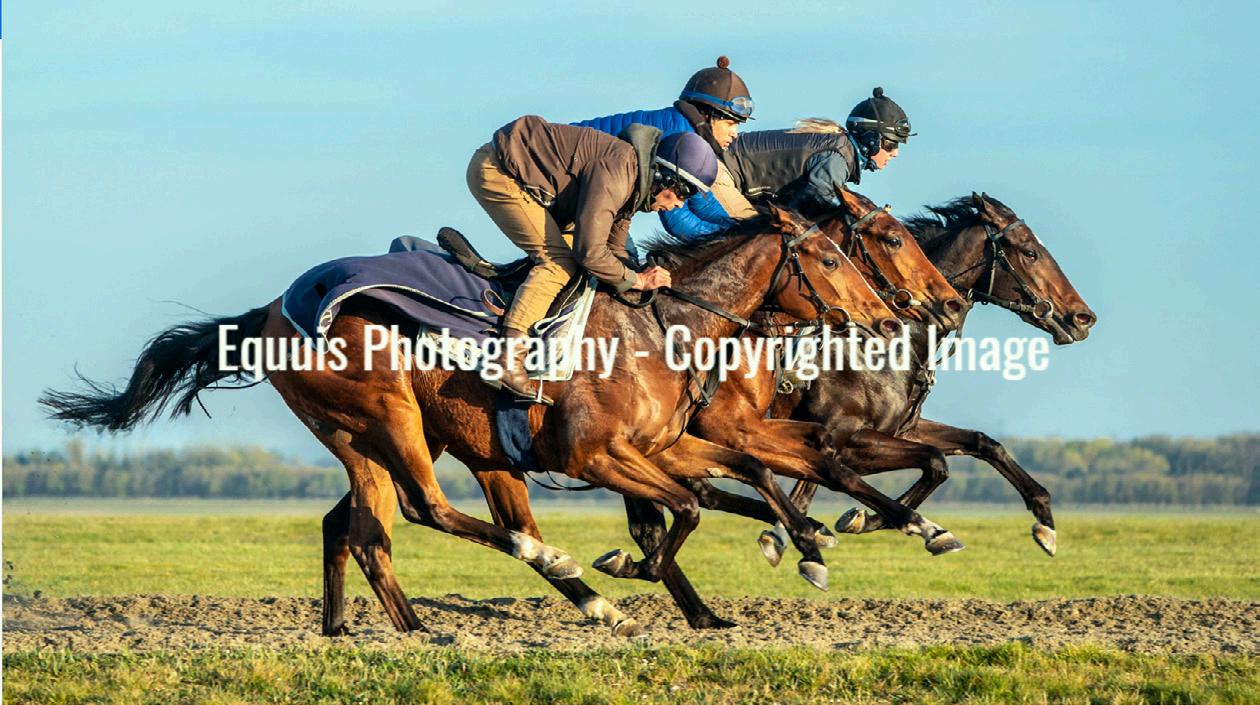

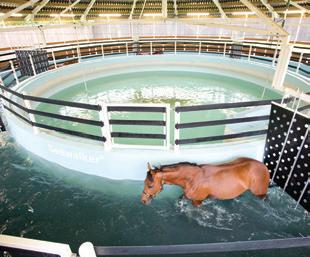
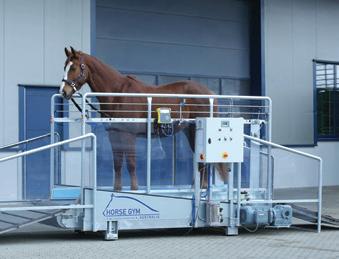
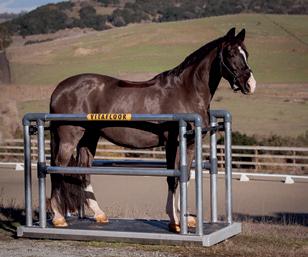

Periods of rest in themselves are also important to allow the bone to repair because even a sensitive training programme will result in some fatigue damage, and the accumulation of this damage may eventually lead to fracture. The innate, biological mechanism of bone repair is switched off (inhibited) while horses remain in active training and a period of rest is required for this process to be reactivated and for repair of fatiguedamaged tissue to take place. Therefore, periodic periods of rest from training are required in order to give the skeleton the best opportunity to heal and “reset” itself.
In summary, a training programme that:
1. Reduces the distance of work (especially high-speed work) that a horse undertakes in its racing career to optimal levels that promote bone health (while racing and training);
2. Stimulates appropriate development of bones through short bursts of fast work early on in a training campaign;
3. Builds periods of rest into a horse’s life span in training; will all reduce the risk of accumulated fatigue damage that predisposes to fractures developing.
To move forward, the industry needs to invest in research so that metrics can be developed to help trainers to apply these concepts to their own training techniques in a practical way. There will be a range of durations and speeds of work that will reduce the risks of fracture across different populations of thoroughbreds, and these will only be demonstrated by investing in studies measuring the effects of different training regimes in significant numbers of horses.
Developing and applying measures that are designed to reduce the risk of fracture will require the commitment of all stakeholders. We also need to be realistic in acknowledging that, due to the athletic nature of racing, the risk of a racehorse sustaining a fracture will never be eliminated and, sadly, for some of these injuries euthanasia will be the only humane option. When racing authorities communicate to the public that the safety of equine athletes in racing is a priority, their credibility is clearly demonstrated by investing in work to bring the risks of injury, including fractures, down to the lowest possible level. There will inevitably be an element of “pain” associated with the work and changes required to reduce injury rates. Screening systems will disrupt normal cycles of work, there will be frustration as horses that appear fit are withdrawn from races on the basis of findings of “risks” that we might find difficult to conceptualise, there will be additional financial demands to fund studies, and a sense of exposure as records that are necessary for researchers to do their work are shared, even with promises of confidentiality and anonymity. At the Toronto meeting, the IFHA has already committed to supporting global scientific research efforts to reduce the incidence of racehorse injuries, including fractures. I look forward to the benefits this co-ordinated approach to research can bring by both reducing injury rates in equine athletes, and at the same time, demonstrating to society the priority racing gives to equine welfare
FOR A FULLER DISCUSSION ON EXERCISE ASSOCIATED SUDDEN DEATH PLEASE SEE THE ARTICLE BY CELIA MARR PUBLISHED IN EUROPEAN TRAINER – ISSUE 89.
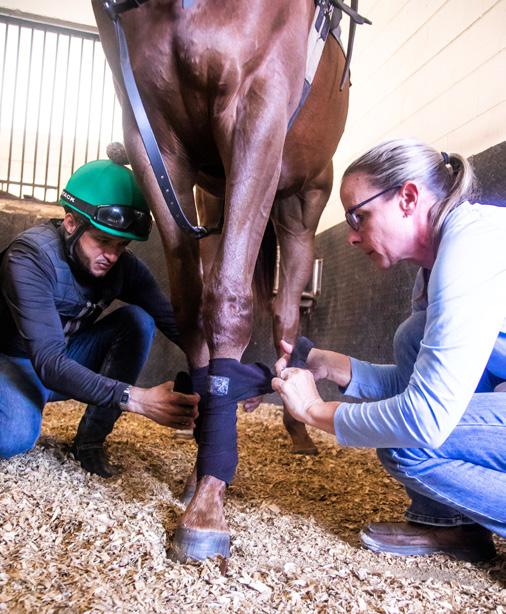

15-17 DEC 2025, HKSAR, CHINA
A new global forum for researchers to share findings with colleagues and stakeholders, debate the practical application of new knowledge and connect with other researchers, clinicians, funding bodies and key racing officials to promote a shared understanding of critical issues, clarify research needs and explore new collaborative ventures.
Opportunities for researchers to present fresh data to a global audience
Two grants on offer for the best proposals developed between new collaborations forged at the conference to address research questions posed at the meeting
Sessions between specialists in racing and other global sports
Working breakfast to network with experienced racing professionals, funding bodies and researchers established in the field, to build networks and offer mentorship to Early Career Researchers
Bursaries available for Early Career Researchers
Key Dates:
31 JUL: Submit your abstract for podium or poster presentations and apply for a bursary
30 SEP: Early Bird Rate ends
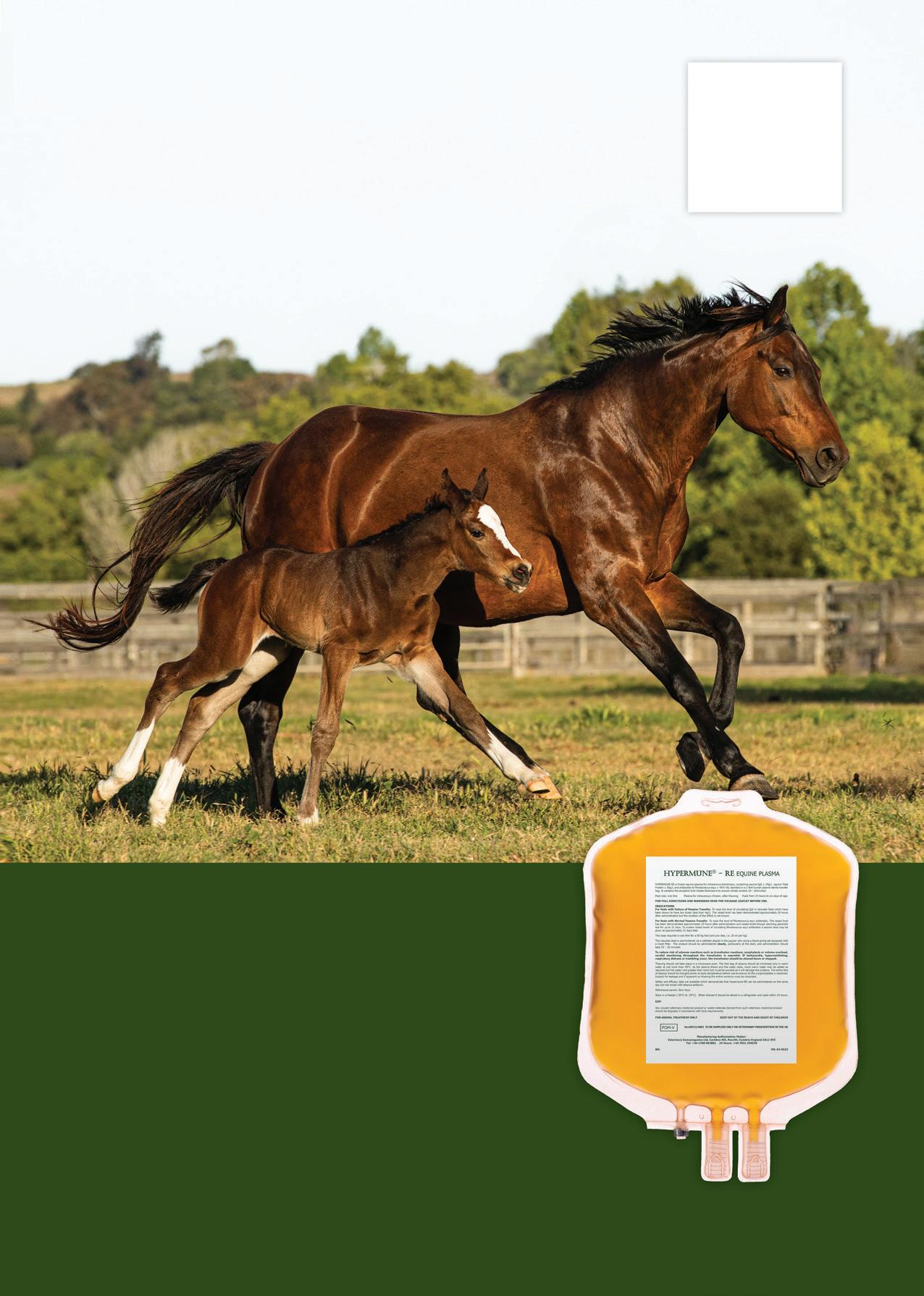


Elevating performance and seeking the competitive edge is what makes equine supplements a billion-dollar industry, but what makes the difference between a supplement that simply creates ‘expensive urine’ and a nutritional supplement that could actually have an impact?

Associate professor at the University of Guelph, Wendy Pearson and Ph.D. candidate Dr Nadia Golestani, answer this question and more in their quest to develop quality nutraceuticals with positive equine health benefits. Their latest study on Spirulina reveals potential for expediting recovery after intense exercise. It also holds promise supporting joint health and optimising performance through enhancing oxygen delivery in the bloodstream.
After becoming a DVM, Dr Nadia Golestani began to pursue her goal of becoming an animal nutritionist, enrolling in the University of Guelph’s Master of Animal Biosciences program under the supervision of Dr Wendy Pearson.
After attending Pearson’s lectures on exercise physiology, Golestani developed a good understanding of the controversy surrounding antioxidants and the lack of research as to whether they were good for exercise performance or not. For her Master’s, Golestani examined inflammatory response of cartilage during exposure to nutraceuticals that could potentially have a role in equine joint care.
Golestani had her eyes opened to the potential of Spirulina after reading a book named Spirulina World Food. It was a gift from accomplished medicinal chemistry consultant, Ralph Robinson, which accompanied an award for Golestani’s research in equine nutrition and physiology.
Golestani wanted to explore ways Spirulina could be used in exercise physiology. Her Ph.D research, under Pearson, set out to study the effects of Spirulina as an antioxidant and how it could potentially modulate inflammation after high-intensity exercise in horses. It was made possible thanks to the support of Robinson, owner of Selected BioProducts (Herbs for Horses) Inc., and funding from Equine Guelph.
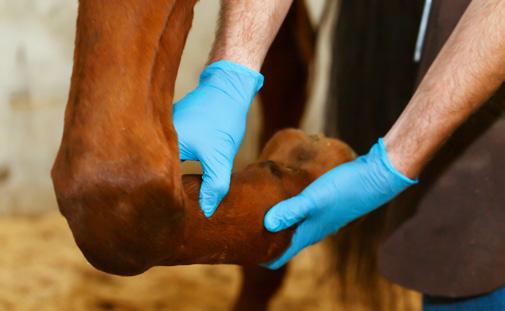

The blue-green algae is gaining popularity not just in human athletes but in equine ones as well. The nutritional profile contains C-phycocyanin and Beta carotene and 60 – 70% amino acids. It has vitamin B, iron, vitamin E and essential fatty acids, particularly gamma-linolenic acid (GLA) plus many more vitamins, proteins and minerals.
Golestani’s study focused on C-phycocyanin and Beta carotene in Spirulina with their potential antioxidant effects. New data shows antioxidants can be a double-edged sword with the capability of reducing inflammation as this may actually interfere with natural tissue adaptation after the rigors of exercise. Golestani’s study is looking for the best applications for Spirulina to optimise equine performance without interfering in the natural tissue adaptation process.
Some inflammation is normal after exercise and protects structures as they recover from the workout. Only when inflammation becomes excessive, does it become a concern in disrupting recovery.
“Transient inflammation is good and needed for recovery. Inflammation challenges the tissue, and the tissue responds by becoming stronger,” says Pearson. “What isn’t good is chronic, sustained inflammation. We want to see if we can do something about the way tissue responds to an exercise bout, without interfering with transient inflammation.”
Golestani explains, when a horse undergoes exercise, their ATP (adenosine triphosphate) producing mitochondria are working hard. One of the natural byproducts is Reactive Oxygen Species (ROS are highly reactive molecules containing oxygen), which is good unless they are produced in excess, leading to oxidative stress. When there is an imbalance between the production of

ROS and the body’s ability to detoxify them with antioxidants, this is when chronic oxidative stress can trigger vicious cycles of inflammation. Oxidative stress can also lead to cell death and therefore dysfunction and disease. Maintaining balance between ROS production and antioxidant defenses is essential for cellular health.
Golestani sums up, “Strenuous exercise, especially when it is high impact, is going to stress the horse’s joints and increase oxidative stress. Imbalance can damage the cells, proteins, lipids in the joint tissue and may lead to early onset of arthritis.”
Pearson adds, “Moderate intensity exercise is very good for protecting cartilage structure, but when you have repeated bouts of strenuous or very high intensity exercise it can tip the scales to more breakdown of cartilage than you have time to resynthesise. Tissue breakdown occurs when synthesis can’t keep up, that’s when you start to see declining structural integrity of the tissue.”
‘What is adequate recovery time’ becomes the million-dollar question with no definitive answer, given a multitude of variables including the starting fitness level, type of activity, intensity of work, and other factors specific to each horse as an individual. This is where talented horse trainers excel. They can pick up on a change of behavior in the horse in a workout even before physical signs of stress and adjust the training program accordingly.
Golestani researched the antioxidant effects of Spirulina, by looking at biomarkers associated with inflammation. In her study, biomarkers were measured before and after exercising horses that were given a Spirulina supplement against those who were not.
Results showed that exercise caused a temporary increase in nitric oxide (NO), a marker of oxidative stress, shortly after activity. This rise was discovered in both blood plasma and the synovial fluid. Horses given Spirulina had lower NO levels during recovery, indicating better management of oxidative stress. In joint fluid, NO levels increased 24 hours after exercise but were better controlled in the Spirulina group, with lower levels observed later in recovery. This signifies not only the potential for quick recovery from exercise but also properties that could promote joint health.
Another inflammation marker, prostaglandin E2 (PGE2), was also measured. PGE2 levels in the blood peaked eight hours after exercise and were higher in horses that received Spirulina, suggesting a stronger initial response to exercise. In joint fluid, Spirulina-supplemented horses showed lower PGE2 levels early in recovery, which may help reduce inflammation in joints over time and lower chances of early onset of arthritis.
A key finding was that Spirulina boosted levels of Resolvin D1 (RvD1). “RvD1 is so important in resolving the inflammation and promoting the clearance of inflammatory cells and for tissue repair,” said Goestani. RvD1 is a bio active lipid mediator derived from omega-3 fatty acid. Horses receiving Spirulina had consistently higher RvD1 levels in their blood and joint fluid during after exercise.
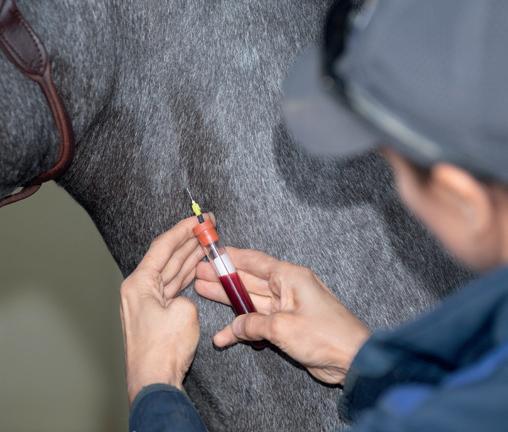
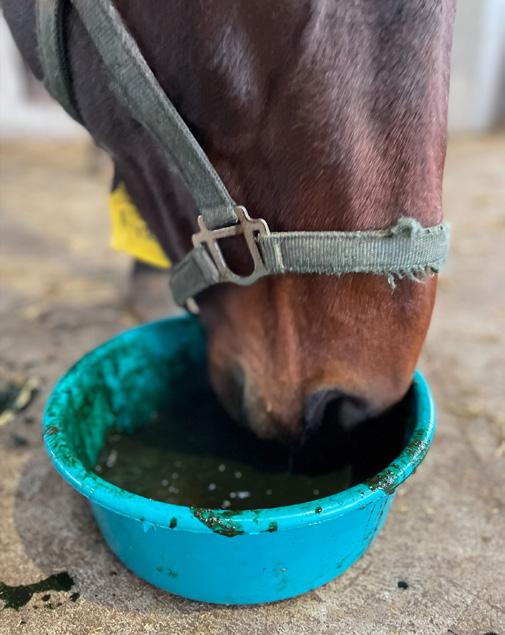
The rise in the RvD1 biomarker highlights how Spirulina has the potential to enhance this natural resolution pathway and its potential to protect against inflammation, speed up recovery and promote cartilage protection.
Pearson echoed the dramatic increase in Resolvin D1 in the horse’s receiving Spirulina to be pretty strong evidence that it could protect horses from bouts of transient inflammation from becoming chronic and contribute to faster recovery after exercise.
Horses fed Spirulina in the study also had higher hematocrit levels, which means their blood could carry more oxygen, translating into potentially enhanced performance. They also maintained higher glucose levels during recovery, providing more energy. Eight hours after exercise the control group had a drop in glucose, but the group fed Spirulina did not. Retaining glucose stores post-exercise is especially helpful for performance horses that need sustained energy and endurance during training or competition.
Importantly, there were no negative effects on cartilage biomarkers, further suggesting Spirulina may also promote joint health during recovery.
“Buying a quality product requires looking beyond the label,” says Pearson. “There are so many products on the market today that it is virtually impossible for even somebody like me, who spends my life looking at nutraceuticals, to look at a label of one product and tell the difference between that and the product on the shelf right next to it.”
Looking for third party quality assurance can be one indicator on the label that the product has some validity. Examples include:
ISO 22000 (The International Organisation for Standardisation): Provides standards to ensure the quality, safety, and efficiency of food products.
HACCP (Hazard Analysis and Critical Control Points): A systematic preventive approach to identify, evaluate, and control hazards that are significant for food safety.
CCP (Critical Control Point): A step in the manufacturing process where control can be applied to prevent, eliminate, or reduce
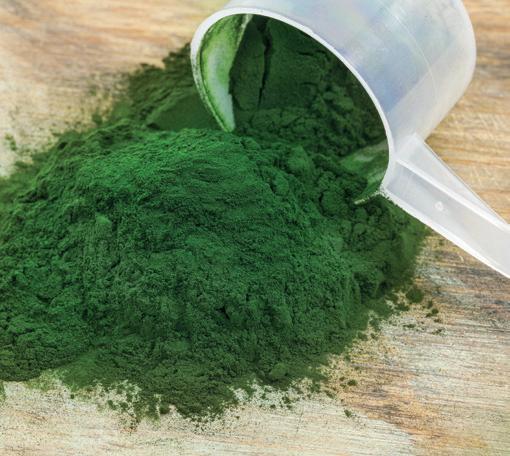
ABOVE & LEFT: This study highlights Spirulina’s potential as a safe and natural dietary supplement for managing inflammation, protecting joint health, and supporting recovery in equine athletes.

a food safety hazard to acceptable levels including: properly mixing ingredients to ensure uniform distribution and prevent contamination, applying heat or other sterilisation methods to eliminate microbial hazards and ensuring the final product is packaged in a way that prevents contamination and preserves quality.
GMP Certification (Good Manufacturing Practices): This certification ensures that the products are consistently produced and controlled according to quality standards. It covers all aspects of production, from the raw materials to the hygiene of staff.
BETA NOPS (Naturally Occurring Prohibited Substances): This certification is particularly important for competitive horses. It ensures that the supplements are free from substances that are banned in equine sports.
UFAS (Universal Feed Assurance Scheme): This scheme provides an assurance system to ensure that feed destined for UK livestock meets safety requirements defined by legislators and industry.
NASC Quality Seal (The National Animal Supplement Council):
The NASC Quality Seal is a mark of quality assurance for animal health supplements in the USA.
Most importantly, Pearson implores horse owners to find out if the manufacturer has invested in research on the particular product they are marketing. “Lots of companies will talk about the fact that they’re science based, but if you peel off a layer or two, you find that in fact the science they’re talking about is science other researchers have done on ingredients that show up on the label on their product.”
Pearson emphasises the importance of manufacturers conducting research of their products in the targeted species that supplement is created for. She takes a moment to lament the vast number of supplements on the market with no significant research behind them. It is much cheaper for companies to use anecdotal reports or sponsor a top rider to promote their products than conduct double blind studies with valid evidencebased results.
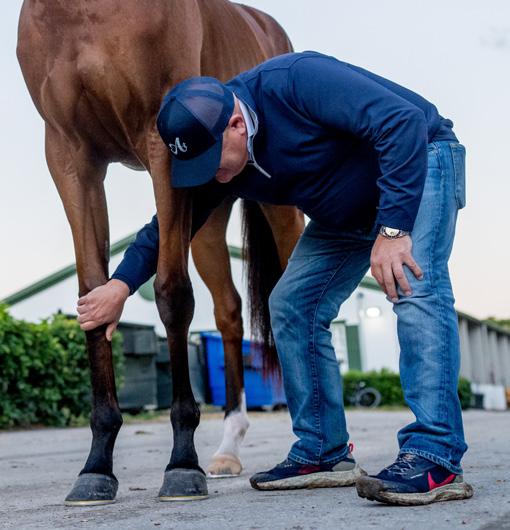
“The research is expensive,” says Pearson. “We are lucky to have funding from Equine Guelph for our latest study on Spirulina. If consumers prioritised purchasing products with research behind them, manufacturers that are not yet doing research on their products would have an economic reason to do so.”
So, horse owners have a bit of homework to do if they want a quality product and not just ‘expensive urine’. Asking to see the research on the product you intend to buy is the best bet for purchasing a product that is likely to deliver on its claims.
Pearson recalls when she started researching nutraceuticals for horses in 1997, “The word was not even well-known back then. It simply wasn’t a ‘thing’ at the time.” We have gone from whisperings of feed additives and ‘novel’ ingredients being the work of ‘witch doctors’ to the common place practice of adding supplements to feed.
“There is a night-and-day difference with upwards of 80% of horse owners adding something to their horses’ diet; whether that something is electrolytes or nutraceuticals or herbal supplements,” says Pearson. “These products can be really helpful in improving health, but they are not intended to be an opportunity for horse people to start to self-diagnose and self-treat disease.”
Pearson tells horse owners to always work with their veterinarian. “This is a very important point. Where these products are best positioned is when it’s in conversation with the vet; not that all vets are experts in nutraceuticals, but they are all experts in animal health and specifically animal disease.”
Potential problems arise if horse owners end up delaying treatment of a potentially serious problem by reaching for a

LEFT: Spirulina may protect against wear-and-tear on joints, helping reduce the risk of arthritis and supporting long-term joint health in active horses.
BELOW: Dr Golestani’s study showed Spirulina helped improve oxygen delivery and energy reserves in horses.
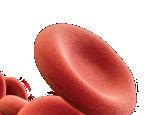

supplement rather than calling their vet. Pearson cautions, “Using these products can potentially delay proper veterinary care when they’re not used properly.”
#1 Consult your veterinarian before adding supplements to your horse’s diet.
#2 Buy from a company that conducts research on their products and doesn’t just claim to be ‘science-based’.
Enhanced oxygen delivery and energy boost: Spirulina helped improve oxygen delivery and energy reserves in horses.
Support for joint health: Spirulina supplementation reduced markers of oxidative stress and enhanced inflammation resolution without damaging joint cartilage. This suggests Spirulina may protect against wear-and-tear on joints, helping reduce the risk of arthritis and supporting long-term joint health in active horses.
Faster recovery after exercise: Horses given Spirulina recovered more effectively after intense exercise, as seen by enhancing the production of pro-resolving molecules like Resolvin D1 (RvD1). This makes Spirulina a practical addition to the diet of horses involved in regular training or high-intensity work.
These findings highlight Spirulina’s potential as a safe and natural dietary supplement for managing inflammation, protecting joint health, and supporting recovery in equine athletes. Further research is needed to confirm long-term benefits, but this current study provides evidence that Spirulina offers a promising tool for promoting health and performance in horses.
If you are responsible for a horse, it is important to stay current and always be open to learning! A pioneer in online equine education, Equine Guelph at the University of Guelph offers flexible online courses in Equine Health and Nutrition for everyone.
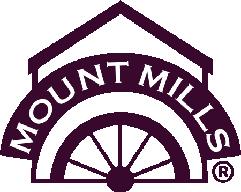
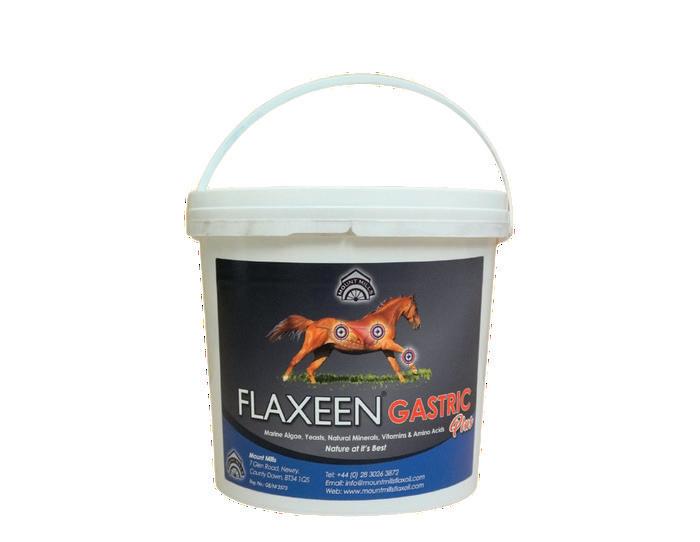
Mount Mills Ltd is a family-run business rooted in the heart of County Down, founded by the Magill Family and built on a lifelong devotion for the wellbeing and care of horses using natural Feeds.
The journey began when one of Jim’s mares, despite numerous attempts, struggled to get in foal. Driven by a commitment towards natural equine health, he began vigorous research into equine nutrition which led him to discover the importance of Omega-3 and Omega-6 essential fatty acids, nutrients horses cannot produce on their own, and therefore must get from their diet.
This inspired the establishment of Mount Mills Cold Pressed Flax Oil, a natural feed that delivered real results not only for his mare, but soon for many others.
From that first success, Jim and his family expanded the Mount Mills range to include Flaxeen Gastric, which has been assessed by veterinarians and tested by the Irish Equine Centre, also Mount Mills Move Sure and Mount Mills Connective, all designed to keep your horse happy naturally. Each product is made with care, and a deep understanding of horses’ needs.
Today, Mount Mills remains proudly family-owned and operated. Trusted by horse owners, breeders, and professionals across Ireland and internationally. The company continues to grow, guided by the same values it was founded on quality, transparency, and a genuine devotion to the well being of horses using natural feeds.
Flaxeen Gastric has been assessed by veterinarians and tested by the Irish Equine Centre, the assessment shows that following one month of supplementation with Flaxeen Gastric an overall positive effect on the group of horses was found.
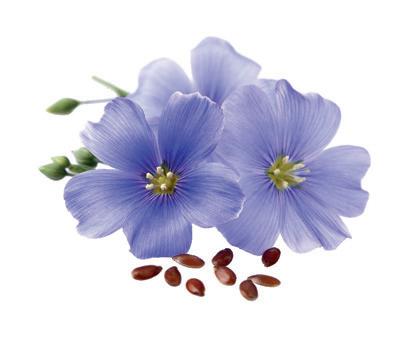
I have found Mount Mills Flax Oil and Flaxeen Gastric to be excellent products. They have transformed my horses, enhanced their stamina with better body condition, quicker recovery time, they look healthier, and they finish out their races better.
Derek O’Connor – Champion Jockey
I have used a lot of feed supplements over many years and find Flaxeen Gastric an excellent product. Since I have started using Flaxeen Gastric, as a complimentary food product for my horses, I have found that it has transformed the horses in my care. Not only has their stamina been enhanced, but their body condition has improved, they look healthier and they finish out their races better. Also, since I commenced using Flaxeen Gastric the horses have a quicker recovery time post-race, allowing them to maintain peak condition and race fitness while in strong training.
John Ryan – Trainer


The work being done to monitor and detect gene doping practices and understanding the future perspectives in breeding.
The pursuit of genetic perfection no longer ends with traditional selection. Alongside meticulously planned breeding programs and increasingly sophisticated genomic profiling, a new and controversial possibility is quietly gaining ground - gene doping. The idea of altering a thoroughbred’s gene expression to enhance muscle power, endurance, or cellular recovery is both compelling and profoundly unsettling.
In experimental research, these tools are already being tested using animal models and although no official cases have been reported in racing so far, the specter of their potential use is growing increasingly real. The discourse around gene doping and gene therapy more broadly, is emerging with greater urgency, raising complex ethical, technical, and regulatory questions.
This is an extremely dangerous development, not only because it threatens the integrity of competition, but also due to the unknown risks it poses to the animals themselves, who may be subjected to genetic manipulation without the capacity to understand or consent. Both the World AntiDoping Agency (WADA) and the International Federation of Horseracing Authorities (IFHA) have taken a clear stance against such practices, prohibiting their use in both human and equine athletes.
Despite these regulatory safeguards, the rapid pace of genetic science is testing the limits of current frameworks. Advances in biotechnology are no longer confined to the laboratory or speculative discourse they are beginning to manifest in the real world. While equestrian regulators have outlined strict prohibitions, enforcement is inherently reactive, often lagging behind innovation. The gap between what is technically possible and what is legally permitted is widening, and within that space, experimental applications of gene editing are quietly advancing. It is in this grey zone, between regulation and research, that the first real-world example of genetically edited equine athletes has emerged.
This shift from theory to application became strikingly evident in October–November 2024, when Argentina’s biotech firm Kheiron Biotech announced the birth of five genetically edited polo foals, marking the world’s first CRISPR‑Cas9–engineered equine athletes.

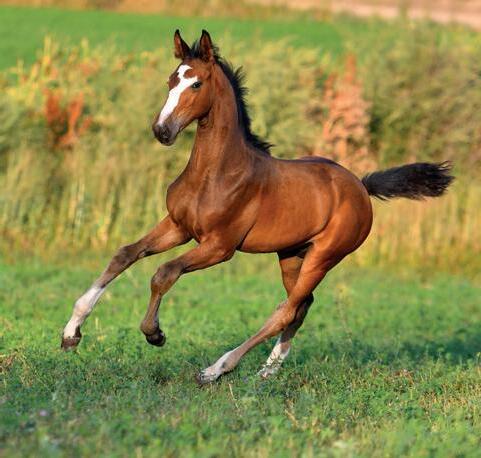
In practice, a horse with genetically enhanced EPO expression could maintain high levels of exertion for longer without performance dropping off.
These horses were derived from mesenchymal stem cells of Polo Pureza, a champion Argentine polo mare celebrated in the breeders’ Hall of Fame. Rather than cloning, scientists used CRISPR‑Cas9, a highly precise genome-editing tool, acting like molecular scissors to modify specific DNA segments. The primary target was the myostatin (MSTN) gene, which restricts muscle growth by silencing or altering this gene. The resulting foals were designed to possess enhanced muscle mass and explosive speed, while preserving the mare’s natural agility and temperament.
The editing process involved removing an oocyte’s nucleus, replacing it with DNA from Polo Pureza’s edited stem cells, and implanting the embryos into surrogate mares; five live foals were born from eight pregnancies.
In the context of the horse racing industry, where the value of a thoroughbred can hinge on milliseconds of performance and the ability to sustain speed over distance, gene editing presents an especially tempting field.
Scientifically, the answer is yes. The same techniques used to enhance athletic potential in polo ponies could, in principle, be applied to racehorses. Several genetic traits directly influence race performance and could be enhanced through precise gene editing. The range of traits that could be enhanced is both broad and strategically targeted. The ultimate goal would be to produce a horse that runs faster, resists fatigue better, recovers more quickly, and possibly even suffers fewer injuries, all thanks to targeted genetic interventions.
One of the primary areas where gene editing could intervene is muscle development. Racehorses rely on explosive power and speed, and one of the key genes responsible for regulating muscle growth is myostatin (MSTN).
This gene acts like a natural limiter, preventing muscles from growing excessively. By suppressing or modifying MSTN, it’s possible to significantly increase the mass and strength of skeletal muscles, giving horses more power during acceleration and allowing them to maintain higher speeds.
Enhancing muscle development could be especially valuable for short-distance (sprint) races, where raw power is a major performance factor. Alongside MSTN, scientists may also target follistatin, a glycoprotein that naturally inhibits myostatin and encourages muscle growth. Its manipulation, already studied in other species, could serve as an indirect yet powerful enhancer of muscle development in horses.
Another key aspect involves muscle endurance and recovery, where hormones like Insulin like Growth Factor 1 (IGF-1) and growth hormone (GH) play essential roles. IGF-1 stimulates protein synthesis and helps in repairing tissue damage after intense effort.
Gene therapy involving IGF-1 has shown increased muscle mass in animal studies, even without training. When combined with exercise, its effects are amplified, and it may also reduce muscle loss during periods of rest (highly relevant in racing horses recovering from injury or off-season periods).
Performance in longer races, however, is not just about power, it’s about how efficiently a horse uses oxygen. Here, oxygen transport genes like erythropoietin (EPO) and HIF 1 become highly relevant. By increasing red blood cell production, these
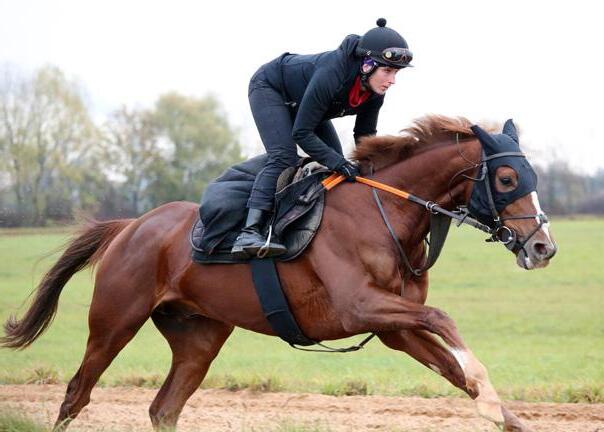
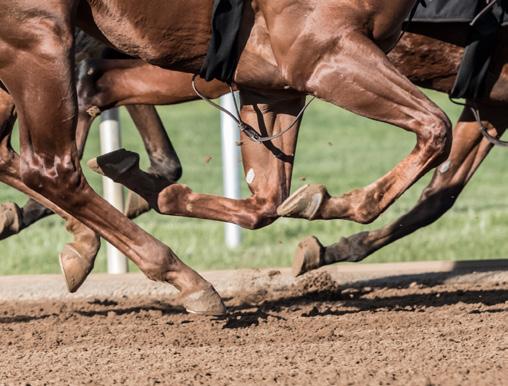
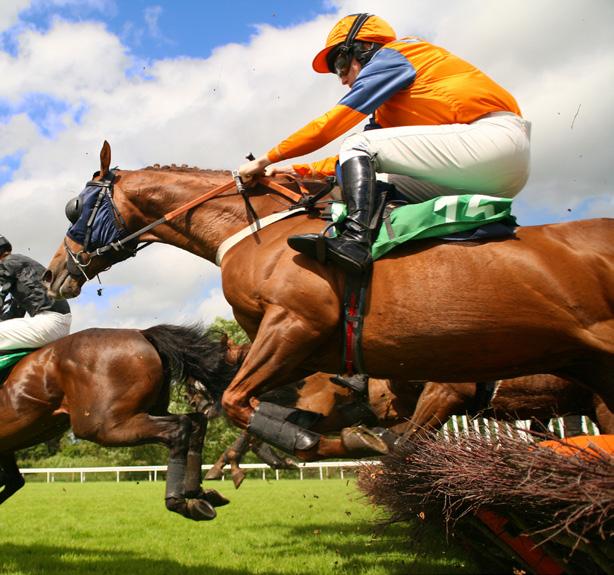
genes allow muscles to receive more oxygen during effort, delaying fatigue and improving aerobic endurance. In practice, a horse with genetically enhanced EPO expression could maintain high levels of exertion for longer without performance dropping off. In addition, HIF-1 also activates other processes, such as the formation of new blood vessels (angiogenesis) and improved mitochondrial function, both of which contribute to athletic stamina.
There is also the possibility of influencing muscle contraction efficiency through genes like ACTN3, which is associated with fasttwitch muscle fibers, those responsible for rapid, explosive movements. Variations in this gene may help differentiate a horse better suited to sprints versus long-distance racing.
Beyond functional performance, gene editing also opens the door to phenotype modification, adjusting physical traits that contribute indirectly to racing ability. This includes aspects like limb length, back structure, stride angle, body mass distribution, and joint strength. Studies have identified quantitative trait loci (QTLs) and genes like TBX15 that influence skeletal development and muscle fiber differentiation.
By acting on these, one could refine the physical ideal standard of a horse to better match the ideal conformation for speed and biomechanics. This would mark a radical shift from traditional breeding, where physical traits emerge through generations of selection, to a scenario where conformation is engineered at the embryonic stage.
In essence, the application of gene editing in horse racing presents the theoretical possibility of designing equine athletes tailored not only for general fitness, but for specific racing distances, styles, and even track conditions. A genetically customised thoroughbred could, in theory, be built for explosive sprints, long-distance endurance, or optimal biomechanics on certain surfaces.

“Does
This timeless question, posed by Machiavelli centuries ago, feels strikingly relevant in today’s ethical debate over gene editing in sport horses. The growing scientific evidence that gene editing in horses is not only possible but increasingly feasible brings to the forefront a complex and deeply important moral dilemma. Just because we can manipulate the genome of a future equine athlete, should we?
At the heart of the discussion lies the fundamental value of fair play, a core principle that defines the legitimacy of competitive sport. If one horse is genetically enhanced before birth while others are bred through traditional means, can they still compete on equal terms? Gene editing, by its very nature, introduces an artificial advantage, one that is not earned through training, nutrition, or breeding judgment, but through direct technological intervention at the biological level.
Such practices risk turning the racecourse into a competition not of horses, but of laboratories and geneticists. The fairness of the sport would be compromised, not only for competitors but for owners, breeders, and spectators who trust in the authenticity of the contest. Moreover, equine athletes cannot give consent to be genetically modified. Altering their genome for humandefined goals raises profound questions about animal welfare, autonomy, and dignity. Is it ethical to “design” an animal for performance, knowing that such manipulation may also carry unknown health risks or reduce genetic diversity?
While innovation has always shaped sport, from training techniques to equipment, the line between enhancement and manipulation must be clearly drawn. Gene editing, when used for performance purposes, crosses that line. It challenges the spirit of horsemanship, the unpredictability of natural talent, and the integrity of racing itself. Ultimately, preserving fair play may mean accepting the biological limits of even the most elite thoroughbreds and recognising that what makes sport meaningful is not control over the outcome, but the uncertainty of it.
LEFT: To confront the emerging threat of gene doping the BHA has invested nearly £2 million in cutting-edge scientific research.
Indeed, these ethical concerns have not gone unnoticed by the governing bodies of equine sport. Organisations such as the World Anti-Doping Agency (WADA), the International Federation of Horseracing Authorities (IFHA), and most notably the British Horseracing Authority (BHA) have already taken a firm and proactive stance against the use of gene editing for performance enhancement.
The BHA, in particular, is now leading the way globally in developing and implementing anti-gene doping protocols within its world-class equine anti-doping programme. In a decisive move to protect the integrity of British racing and the welfare of thoroughbred horses, the BHA has officially expanded its antidoping operations to include routine testing for gene doping, both on raceday and out-of-competition.
This includes the detection of direct DNA manipulation via gene editing as well as gene transfer, where foreign genetic material is introduced into the horse’s cells to boost athletic traits or accelerate recovery.
Such practices are clearly prohibited under the Rules of Racing, and the BHA recognises gene doping as a serious and growing threat, not only to fair competition, but also to equine health and the future integrity of the breed.
To confront this emerging risk, the BHA has invested nearly £2 million in cutting-edge scientific research in collaboration with the LGC laboratory in Fordham, establishing a dedicated gene doping detection team as early as 2019.
In partnership with the Centre for Racehorse Studies, researchers at LGC have successfully developed analytical techniques capable of identifying evidence of gene doping, achieving UK Accreditation Service approval to perform this next generation of highly sensitive testing. This new gene doping detection framework is already active, forming part of a comprehensive testing programme that combines random sampling with intelligence-led investigations.
The goal is not only to ensure compliance with the Rules of Racing, but also to act as a powerful deterrent preserving the fairness of the sport and prioritising the welfare of the horse. With this initiative, the BHA is sending a clear message: that the use of genetic engineering to manipulate equine performance will not be tolerated, and that the tools now exist to detect and act upon it.
Gene doping represents the current frontier of innovation and concern within the world of racing. While science continues to demonstrate the increasing feasibility of genetic intervention, both in theory and in practice, this progress brings with it a set of unresolved questions that extend beyond biology or regulation.
The potential to influence a horse’s genetic makeup with surgical precision is no longer a distant possibility, but a reality under active discussion. Yet, embracing such power uncritically could signal a shift in the very foundation of equestrian sport: from a celebration of natural ability, training, and partnership, to a controlled outcome engineered in a lab.
At its core, this conversation is not just about doping, it is about the boundaries between humans and nature, between technological capability and ethical restraint, and between competition and manipulation. The choices made now will shape not only the future of the sport, but also its meaning. As the line between what is possible and what is permissible becomes increasingly thin, the challenge will not only be to detect gene doping, but to decide, collectively, whether sport should allow itself to go down this path at all.
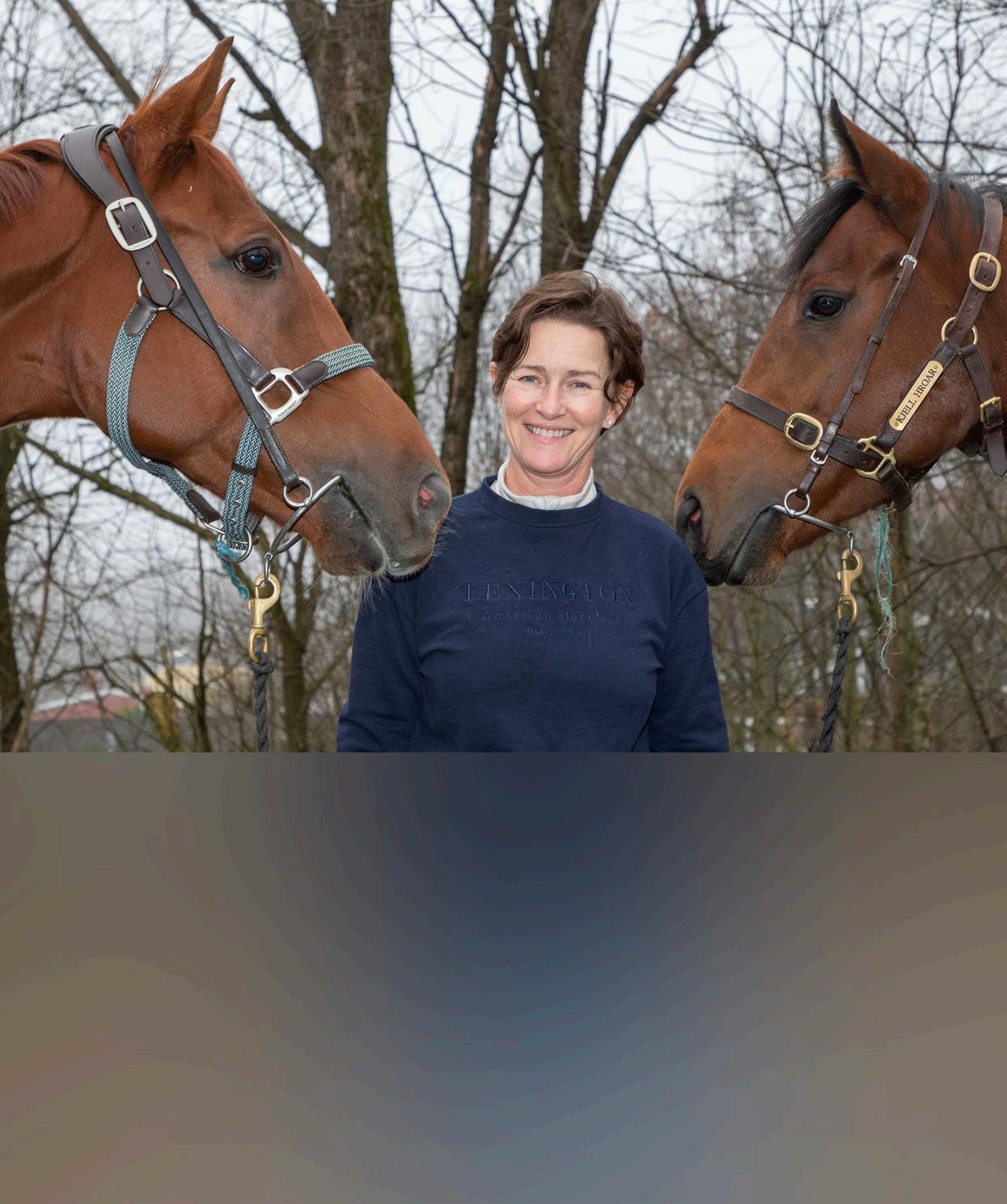
Last issue we published tables of reigning National Trainers’ and Jockeys’ Champions. Here, we get to know two trainers who have become, for the first time, champions in their respective countries. In Norway, Cathrine Erichsen finally broke Niels Petersen’s thirteen-year title stranglehold, while in Belgium, it was Nadine Verheyen who prevailed.

A lot has happened in Cathrine Erichsen’s career since we profiled her in our October - December issue back in 2019.
For Erichsen, a national rider’s title preceded her entry into the training ranks. “My journey with thoroughbred horses began when I was introduced to them by some of my friends in secondary school, around the age of 13 or 14. I was instantly captivated by these beautiful creatures and fell in love with them. One of the most memorable moments of my life was riding in my first race at the age of 15; it was an exhilarating experience that gave me a tremendous sense of accomplishment. The following year, in 1986, I achieved my goal of becoming an amateur champion jockey”.
Erichsen’s career change to training was made at the tender age of 24. “When I first obtained my trainer’s license, I set a five-year plan with the intention of eventually returning to my college studies in economics and marketing. However, here we are, nearly 30 years later!
“Reflecting on my journey as a trainer, I recognise that it has been quite challenging, particularly as a woman in this field. However, I feel privileged to have received strong support from my owners and to work alongside a reliable and competent team. Their belief in me and their hard work have been crucial to my success. I have always taken a hands-on approach, personally riding my horses, which has been both a healthy and educational experience. I have also been fortunate to meet many friendly people and wonderful horses along the way. Additionally, I’ve had the opportunity to travel extensively, which has enriched my journey. While this path has proven to be more challenging than I initially expected, I could not imagine my life without it”.
With Øvrevoll being the country’s sole gallop track, Norwegian-based trainers inevitably compete their horses in neighbouring countries, but Erichsen’s foreign forays have extended beyond Sweden and Denmark.
“Every year, I send my horses to compete in races in other Scandinavian countries, and I have also sent them to Germany, France, and Britain. I have won four Derby races and hope to achieve the same success in Sweden. I sent Albaran to Germany for the Hansa Preis, a Gp. 2 race, where he finished second. He then set a track record in the Scandinavian Open, a Gp. 3 race in Denmark, where he faced international competitors and won in a photo finish against Yoanna’s Pace, the Gp. 1 St. Leger winner from England. His track record time still stands. Later, in 1999, we participated in the Prix de l’Arc de Triomphe, where we didn’t win but competed against some of the best horses in the world. All the big names were there. That same year, Albaran also won the Stockholm Cup in Sweden and the Scandinavian Open in Denmark”.
Raids to Britain have met with notable success, with Easy Road, winning a Listed race at Doncaster in October 2015 and returning to Ascot a year later to win another Listed event, with the likes of Medicean Man and Sole Power in behind. “Those trips are, without a doubt, some of the true highlights of my career. Not only did I take the bold step to travel to Britain, but I also succeeded, marking one of the most significant events I have ever experienced. I will never forget when the world renowned jockey, William Buick, mentioned how incredible it was for him to win a race on his new home turf with a horse trained in Norway. Being a guest on the Morning Line show and having the chance to express my joy repeatedly is a memory that many, including myself, will cherish. I vividly remember arriving at Ascot with Easy Road and seeing the Racing Post create a travel map for all the runners that day. We undoubtedly had the longest journey, traveling for days with several stopovers!”
The best horse to have been through Erichsen’s hands was probably, Duca Di Como, a predominantly dirt horse whom Erichsen sent over for the Wokingham two years ago and for whom the Breeders’ Cup was once on the cards.
“I bought Duca di Como unseen at the Breeze-Up Sales when he was a two-year-old, based on advice from one of my contacts. Initially, my impression of him was somewhat disappointing - until I saw him working. That’s when I realised that this horse had real potential. He was quite immature and inexperienced, so I chose to wait until he turned three to start him in races. Once we began, he showcased exactly what I had anticipated. I had aspirations for him to compete in the Breeders’ Cup. It’s still frustrating to think about the opportunity we had to attend the Breeders’ Cup with Duca when he was at his best, and we chose not to take that risk. The Wokingham marked the end of Duca’s career. He had, quite literally, won everything in Scandinavia multiple times, so trying something new was an exciting challenge. He performed exceptionally well on both grass and dirt, and he still holds track records for milers in Scandinavia”.

So how, after decades of persistence, did Erichsen finally achieve her breakthrough trainers’ title?
“Although my superstar, Duca di Como, was not in his best shape, the rest of my horses stepped up and truly delivered. I had strong performers across all categories, from handicappers to homebreds and quality horses. Each one of them rose to the occasion, even though my horse material is smaller and simpler.
“Racing is a minor sport in Norway, which means that owners do not often reach out to you on their own. As a trainer, connecting with owners is a crucial part of my job, and while it can be time-consuming, it is also quite exciting. My background in college studies in economics and marketing often proves beneficial in this aspect of my work”.
Like most horses in training in Norway, Erichsen’s are trained on the track. Of course, the Norwegian climate poses challenges, but, also, according to Erichsen, offers unique advantages, too. “Based on my experience, training horses during the winter in the beautiful snow that is common in Norway is highly beneficial. Snow can be prepared in various ways to create an excellent footing for the horses. It cools their legs and has a natural give, making it gentle on their joints. In short, snow is advantageous for horses”.
And which jockeys, racetracks and fellow trainers does she hold in the highest esteem?
“Aiden O’Brian is the trainer I admire the most.
“As for racecourses, among the ones I have seen, Ascot and Longchamp stand out the most. I have been fortunate to attend many race meetings around the world, including the Saudi Cup, Royal Ascot, the German Derby, and various events in Dubai. Unfortunately, I have not yet experienced the Breeders’ Cup. However, if I had to choose my favourite among the events I have attended, it would be the Royal Ascot.
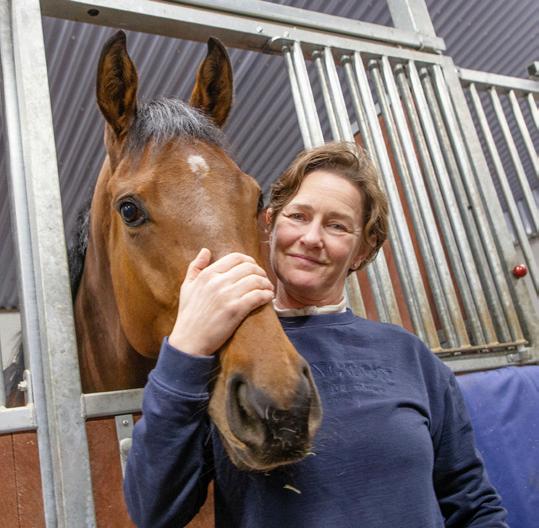
“William Buick is undoubtedly the best jockey in the world. I remember when he first arrived at Øvrevoll, so small and eager to ride; all the horses galloped away with him. His tremendous success, competence, and skill make me proud to be Norwegian. The day William won the race for me at Ascot still remains the most unforgettable moment of my career”.
BELOW: Erichsen’s yard is located at Øvrevoll, the only racecourse in Norway.
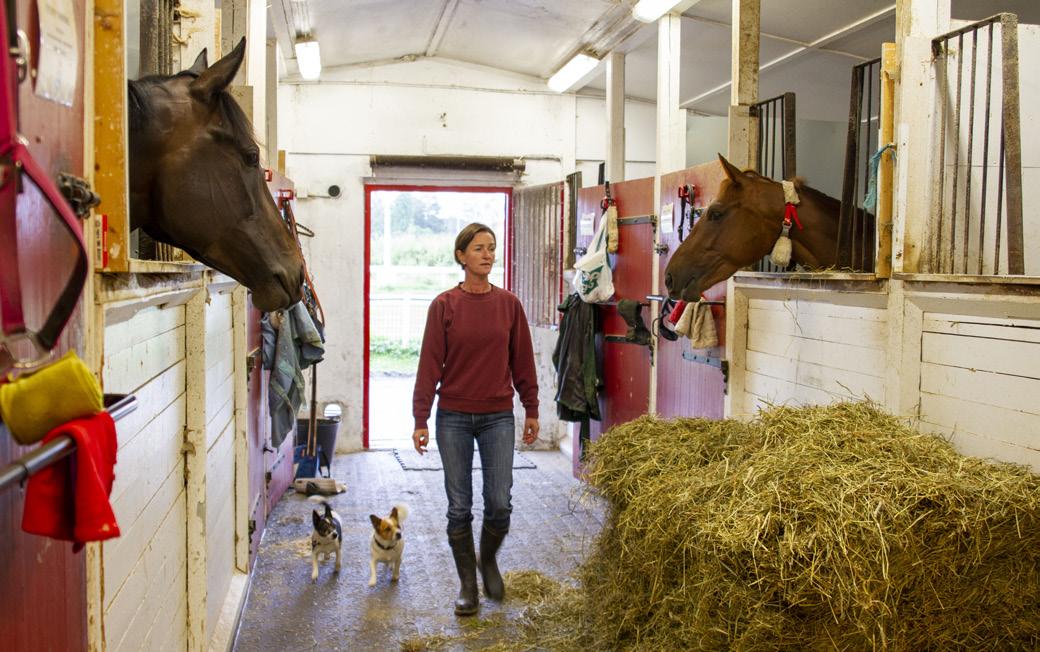
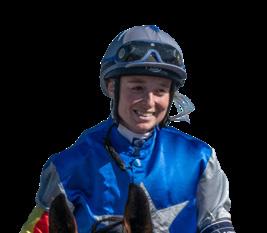


As with Erichsen, Nadine Verheyen’s maiden championship is the culmination of a decades-long training career. In 2005, she secured a licence as a private trainer for the Molenhof Stable, an extensive concern, situated 30kms south-east of Antwerp, whose main focus is on breeding and developing Belgian Warmbloods, primarily for show jumping. She did this with her partner, Wim Van de Poel, whom she had met in 1991, when Wim was an Amateur jockey – her first encounter with thoroughbreds. Later, they were to become owners and raced at the now closed Flat track at Sterrebeek.
Seeding her fledgling training operation with purchases of horses-in-training from both BBAG and Tattersalls, they also bred thoroughbreds for a period of time. “Some of the young horses were entrusted to trainer Andreas Löwe and his team in Cologne (Germany)”, she explains.” We had an excellent working relationship with him. There was always mutual respect and a strong focus on the wellbeing of the horses. We learned a great deal from him. And learning never stops, we firmly believe that”.
Verheyen is still based at Molenhof. “Today, we have ideal facilities: stables, meadows, paddocks, a covered horse walker, an indoor arena, and a 1600-meter training track”.
However, due to time constraints, journeys to compete at German and French tracks have diminished, as have their number of horses in training. Which makes last year’s success all the more remarkable. “We owe this above all to the horses, who have remained fit and injury-free, and to a fantastic team that is available day and night. A passionate team, united in pursuit of the same goal and deeply connected to the horses, is the key to success.
“Being 100% professional in the flat racing sport in Belgium is not financially viable today. It is, however, a real asset that Belgian racing still has international value and that we continue to have an all-weather track in Mons and beautiful turf racecourses in Ostend and Waregem”.
Verheyen retains a deep admiration for Lowe, although he is no longer active as a trainer. “He found the perfect balance
LEFT: Nadine Verheyen leading in Lady Magda with Karen Dieltjens up after her first Prix du Prince Rose victory at Ostend racecourse, 2022.
between caring for the horses, his staff and the owners. Andreas Löwe achieved impressive results, sometimes with rather modest horses, but he always acted with great passion and consistently maintained his belief and trust”.
As for jockeys, “Terence Hellier is definitely one of our favourites. He handles pressure well and has an excellent feel for his horses. It’s a pity he no longer holds a jockey license.
We also have tremendous admiration for our Belgian top jockey in France, Christophe Soumillon, not only as a rider but also as a passionate mentor for future jockeys. It’s truly impressive how dedicated he is” – a reference to Soumillon’s International Pony Academy.
“We are fortunate to have experienced many memorable race days, over the years. The German Baden-Baden (Iffezheim) meetings were our holiday destination for many years. We took as many horses as possible and spent ten days racing at a beautiful racecourse. It was both a vacation and hard work, but we enjoyed every moment of it. In 2009 we enjoyed 4 wins with 2 horses and, two years later, we topped this with 5 wins.
“We also enjoyed numerous victories with Lady Magda and our female amateur jockey Karen Dieltjens, who gave us incredible goosebumps moments both in Ostend and at Waregem Koerse. The highlight of this combination came in 2022, with 5 starts and 5 wins, including the Prix de Prince Rose in Ostend and the Prix Bingoal St Leger in Waregem, which we won for the second year in a row. In 2023 a long break was necessary for Lady Magda, but in 2024 she won the Prix de Prince Rose in Ostend again, which is a unique achievement. No horse has ever won the Prix de Prince Rose twice”.
A third victory might even be on the cards on August 4th for Verheyen’s stable star, who now races in the colours of her amateur rider, Karen Dieltjens. “We hope to participate again this year with Lady Magda and Karen Dieltjens in the Prix de Prince Rose in Ostend and the Prix Bingoal St Leger in Waregem.”
BELOW: Trainer Nadine Verheyen, Wim van de Poel and jockey Rebecca Danz with Sirius Slew after victory at Baden-Baden, 2021.

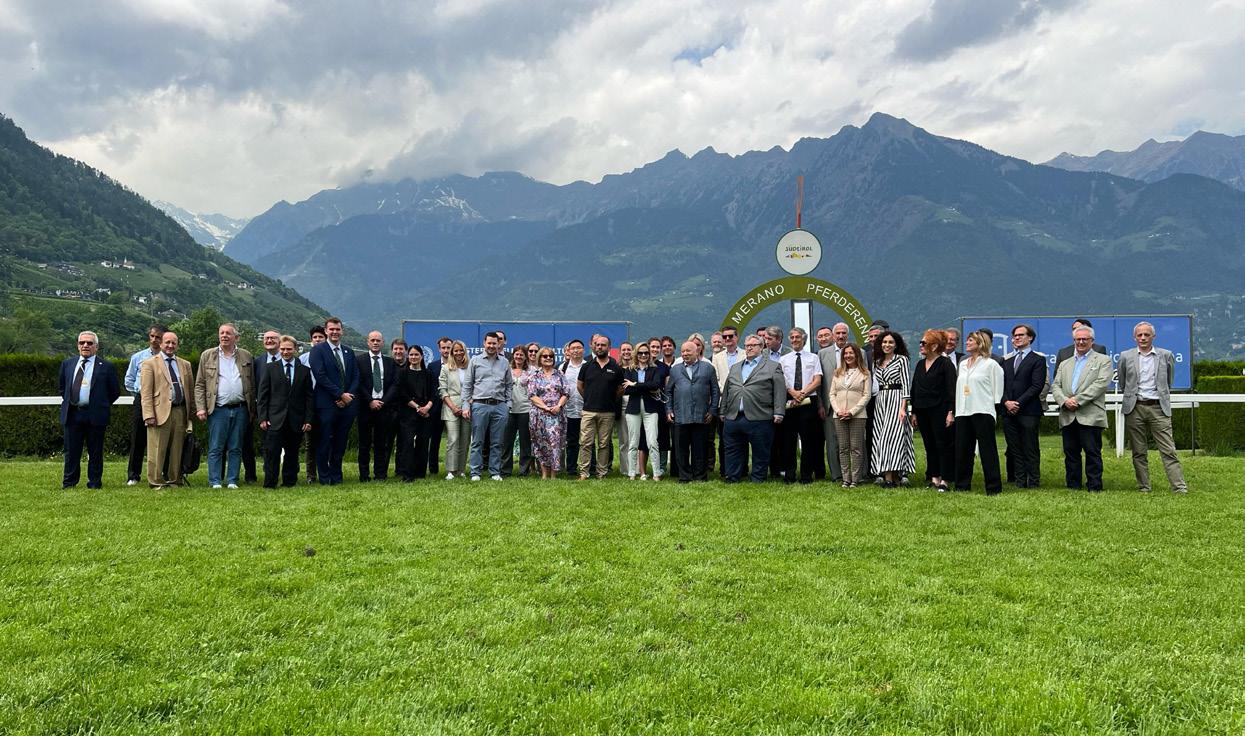
At 1.30pm on June 1st 2010 the founding meeting of the European and Mediterranean Horseracing Federation took place in Stockholm, Sweden.
The Chair that day, as for the next fifteen years, was Brian Kavanagh, then CEO of Horse Racing Ireland. At 5.00pm on Friday, May 3rd 2025, in Merano, Italy, Kavanagh – now CEO of The Curragh racecourse – drew to a close the first day of this year’s EMHF General Assembly, which was to be his final meeting in charge of the Federation.
Italy’s most northerly racecourse, Merano Maia, sits against a backdrop of towering, snow-capped Alpine mountains. Just south of the Austrian border, this area of South Tyrol has a vibe all its own, where German is at least as widely used as Italian.
Italy’s premier jumps track, home each September to the Gran Premio Merano, must rank among the world’s most beautifullysituated and several of the delegates revealed that it was on their ‘bucket-list’ of courses to visit.
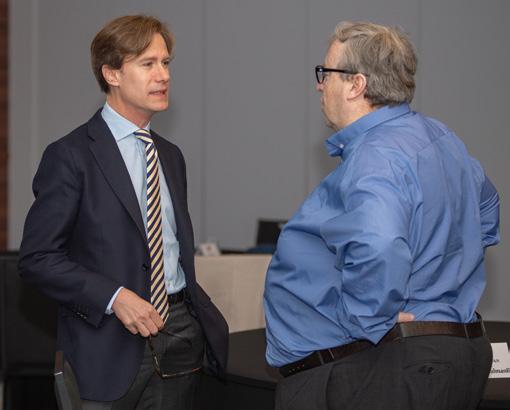
The meeting saw the re-election of Poland’s Jakub Kasprzak to its nine-strong Executive Council. Sadly, Lebanon’s Associate Membership was suspended, due to the absence of thoroughbred racing there in recent years. The group received a presentation from the EMHF’s Political Advisor, Cathy McGlynn, on the status of the EU review of its legislation relating to animal welfare in transport and on ongoing efforts to secure free movement for thoroughbreds being moved for breeding and sales purposes. Commitments were made to hold EMHF Seminars, later this year, on the subjects of Handicapping and Co-Ownership. The General Assembly had been immediately preceded by the second EuroMed Stewards’ Conference, again organised by the British Horseracing Authority.
There was a strong and varied contingent of representatives of relevant commercial organisations, many making return visits, and presentations were made by LockCon, manufacturers of doping control kits, MYLAPS (automated timing technology), Pegasus (horse nutrition and transport) and Equine MediRecord (anti-doping and horse welfare systems) as well as from the International Representative of the Organization of Racing Investigators.
For the first time, much of the second day of business was set aside for group strategic discussions, in which members discussed what they would like to see from the Federation over forthcoming years, as we enter a new era of our development under new Chair, France Galop’s Henri Pouret. These ideas will be considered further by our Executive Council at its next meeting, in Navan, Ireland, in November, before a plan for the future is presented to next year’s General Assembly.
Our Italian hosts, the Ministry of Agriculture and the executive of Maia Racecourse, then treated the group to a dinner in the Restaurant in the Kursaal, the grand hall within the Kurhaus, a famous architectural landmark in the city, at which a presentation was made to Kavanagh in reflection of his enormous contribution to the Federation.
We close this piece with some reflections from our recently departed Chair.
Q: How would you characterise the development of the EMHF, since its inception fifteen years ago?
BK: It has been very satisfying to see the development of the Federation over recent years into more than just a networking body between large and small racing jurisdictions in the region (although that is still a very important function). The participation at a senior level from all member countries is a big benefit and has encouraged a structured and consistent approach to areas such as horse welfare, doping control, race planning and grading through the region. The Federation plays an active role within the IFHA and through its contacts with other industry bodies is working to assist EU policy development in critical areas such as horse transport. The work of Paull Khan as Secretary General is critical in pulling all of this together.
Q: You also held high office – as Vice-Chair for many years – of the global body, the International Federation of Horseracing Authorities. What do you feel are the additional benefits that the regional federations, like the EMHF and Asian Racing Federation, bring to the sport?
BK: I think they are essential to filter IFHA policy decisions down to individual member countries and to ensure a consistent approach both regionally and globally. They are also very important channels to ensure that specific regional issues are properly articulated and addressed by the senior international racing body.
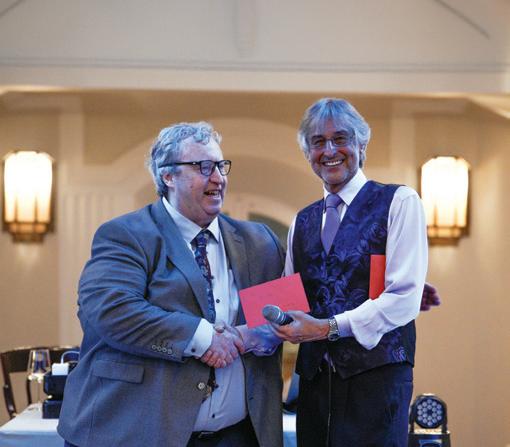
Q: You must hold many memories of visits to EMHF member countries for your annual General Assembly and Executive Council Meetings. Which are the most vivid?
BK: It has been a privilege to visit so many wonderful racing venues throughout the European and Mediterranean region and to see at first hand the high quality and wonderful variety of racecourses within the region. It would be wrong to single any one out, but my abiding memory will be of the wonderful people working to promote horse racing throughout the region and the firm and lasting friendships made.
Next year, the EMHF ‘roadshow’ rolls into Porto. Portugal has kindly offered to host what will be the first EMHF meeting in that country. It will take place on July 11th and 12th 2026.
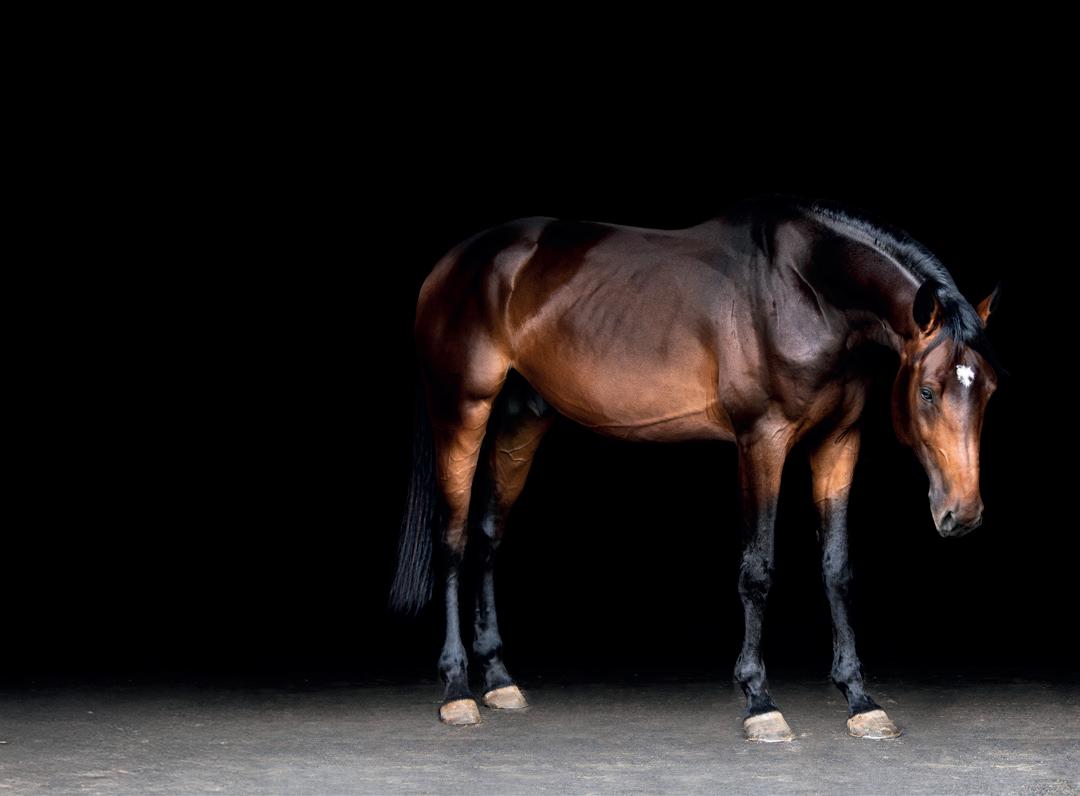
The essential guide to supplements and feeds for the thoroughbred


The debate surrounding the appropriate age to commence racehorse training remains a contentious topic. Advocates of traditional biomechanical models argue that training at 18 months is premature, as a horse’s skeletal system does not reach full maturity for several more years. However, skeletal development alone presents a limited perspective. I would like to introduce another perspective from a rising research field. Through the lens of biotensegrity and fascia science, a more comprehensive approach emerges—one that considers the interconnectedness of a horse’s entire physiological system. Well-structured training at a relatively young age can support the holistic development of the racehorse, fostering both physical and psychological adaptability.
From the moment a foal is born, it must quickly adapt to the force of gravity. Passage through the birth canal initiates its structural alignment, and within hours, the foal is standing and moving independently. Foals are born with predominantly fast muscle fibres (2X). The ability to travel up to seven kilometers daily alongside its dam is a testament to the foal’s inherent adaptability. This early exposure to movement and environmental stimuli plays a crucial role in its physiological and neurological development.
This article seeks to introduce an alternative perspective on how the horse interacts with gravity, incorporating the principles of biotensegrity and fascia. It is important to note that most research is done on corpses and the fascia dries out almost directly after the circulation stops. Traditionally, equine skeletal maturation has been the primary concern regarding the timing of racehorse training. However, a singular focus on bone development overlooks the adaptability of connective tissues and the overall structural integrity of the horse. All young horses as an adaptation to their environment are in a critical phase of learning and adaptation—both physically and mentally—which must be accounted for in any training approach.
Veterinary discourse on skeletal maturity presents conflicting perspectives. Veterinarian Chris Rogers asserts that the skeleton of a two-year-old thoroughbred is sufficiently developed for training, drawing parallels to human child development. Conversely, Dr Deb Bennett posits that full skeletal maturity does not occur until six to eight years of age regardless of breed. All horses go through almost the same skeletal development phases, although thoroughbreds are extremely adapted through breeding to grow much quicker. While Bennett’s perspective has been widely accepted, Rogers’ viewpoint aligns with the practical realities of racehorse development, supporting the industry’s traditional training timelines.
Flat racehorses typically begin training at around 18 months of age. At this stage, their skeletal and connective tissues are still developing, as research consistently shows. Cartilage, bones, muscles, and ligaments undergo intensive growth and adaptation. Every experience the young horse encounters contributes to its physiological and neurological development, shaping its ability to perform the tasks expected of a racehorse. Training at a young age offers several advantages, as young horses are highly receptive and adaptable. As explored later in this article, their connective tissues develop in response to the challenges they are exposed to, reinforcing their structural integrity over time.
Racehorse training inherently involves a selection process. Horses that do not meet performance expectations within the first few seasons are often retired from racing by the age of three or four, making way for new yearlings. Those that demonstrate both speed and durability may continue competing well into their later years. Those are often geldings. Mares and stallions that show promise may transition into breeding programs. The rest, if their foundational training has been well-structured, can adapt successfully to second careers as riding horses, often becoming ideal partners for young equestrians at the start of their horsemanship journey.
Tensegrity (tensional integrity) is a structural principle that explains how forces of tension and compression interact to create stability in a system. Originally coined by architect and engineer Buckminster Fuller, tensegrity has been widely applied in biological systems, including human and equine anatomy.
A traditional biomechanical view perceives the horse’s skeleton like a rigid brick wall—if one part weakens, the entire structure becomes vulnerable to collapse. In contrast, a tensegrity-based perspective views the horse as a dynamic suspension bridge, where forces are distributed across an interconnected network of fascia, tendons, and ligaments. In this model, the skeleton is not a rigid load-bearing framework but rather ‘floats’ within the fascial system, allowing for adaptability, resilience, and efficient force distribution.

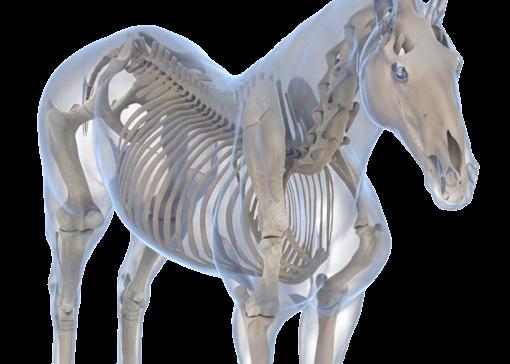
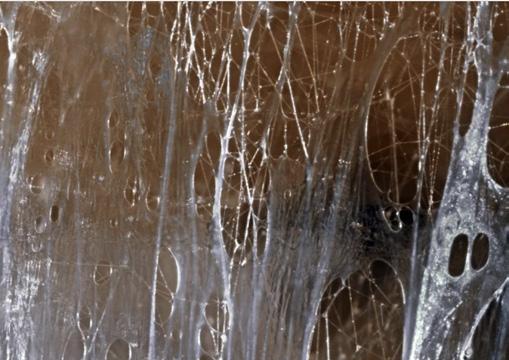
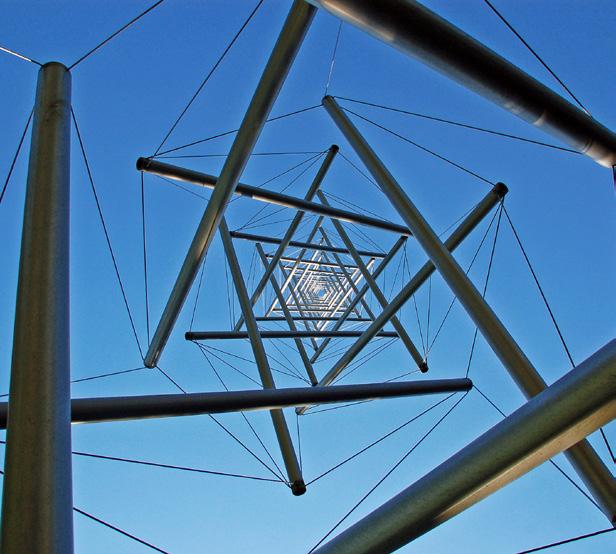
ABOVE: Kenneth Snelson’s
Tower II, completed in 1968 is composed of flexible and rigid components arranged according to the idea of ‘tensegrity’.
Biotensegrity highlights the balance between tension and compression within the body. In equine anatomy, the skeleton functions as a stabilising framework, while fascia, tendons, and ligaments manage dynamic forces. Fascia, composed predominantly of collagen, exists in various densities, from loose connective tissue that facilitates muscle glide to the more rigid structures forming tendons and bones. This complex, fluid-filled network plays a crucial role in maintaining stability, distributing forces, and mitigating the impact of training. Training influences the structural adaptation of connective tissues. Properly executed, it can enhance durability and resilience, reinforcing ligaments and tendons much like steel cables under controlled tension. Understanding the dynamic interplay between muscle, fascia, and skeletal development allows for training methods that optimise long-term soundness and performance.
One of the most abundant proteins in the body is collagen, which forms connective tissue in all its various forms—from loose fascia, which separates muscles, to denser collagen structures that align with the direction of force and develop into tendons, ligaments, or bone. One of the key functions of loose fascia is to allow muscles to glide smoothly against one another without friction when one muscle contracts and another stretches.
Loose fascia consists of a collagen network, with its spaces primarily filled with water and hyaluronic acid. It is a highly hydrated structure—young horses are composed of approximately 70% water. Imagine a water-filled balloon, where the skin acts as the boundary between the internal and external environments. During fetal development, collagen structures form first, providing the framework within which the organs develop. Collagen, a semiconductive protein, relies on water to function optimally.
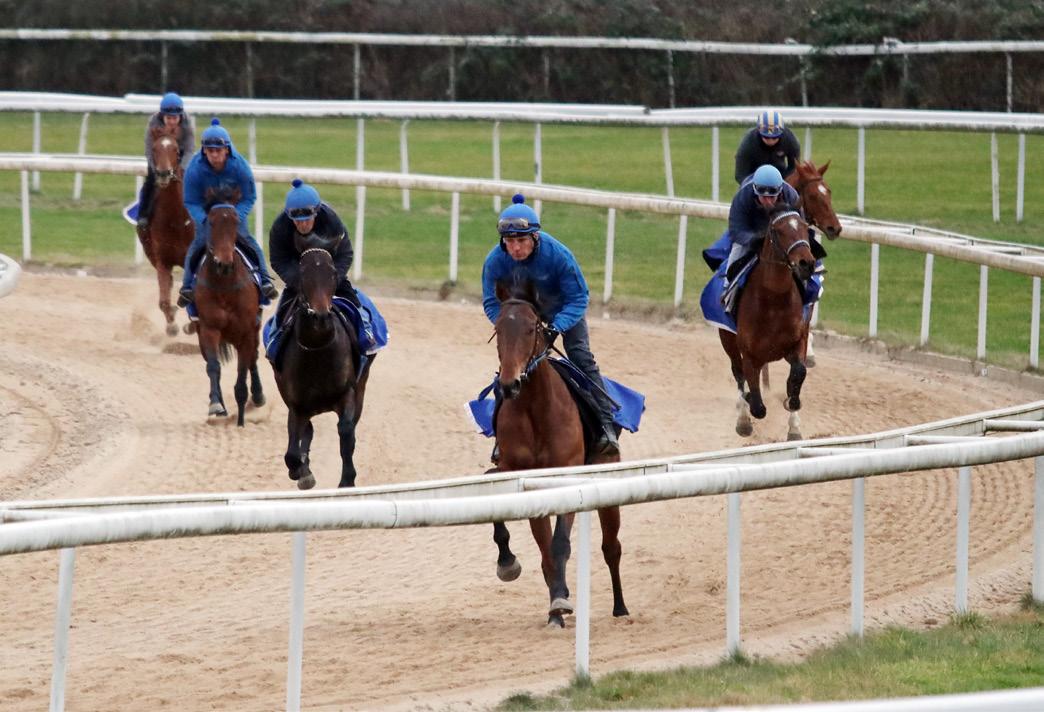
The water-rich environment surrounding fascia transforms it into an extraordinarily intelligent communication network. Its function is highly responsive to the body’s pH levels, adapting moment by moment to internal conditions. As the central hub for force transfer and energy recycling, fascia provides immediate balance and support—often operating beyond the constraints of the nervous system.
Fascia’s remarkable adaptability is rooted in its multifaceted properties. It is nociceptive, meaning it is capable of detecting pain and harmful stimuli, alerting the body to potential injury or strain. It is also proprioceptive, enabling the body to sense its position and movement in space, which aids in maintaining coordination and balance. Additionally, fascia exhibits thixotropic properties—allowing it to shift between a gel-like state and a fluid-like state depending on movement, which enhances flexibility and responsiveness.
BELOW: Horses possess a remarkable evolutionary adaptation that allows them to rest while standing, this structural efficiency is achieved through an intricate network of tendinous and ligamentous locking mechanisms working in harmony with the skeleton.

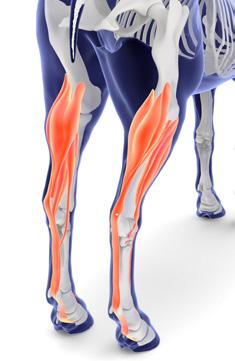
Finally, fascia demonstrates piezoelectric properties, generating electrical charges in response to mechanical stress, playing a crucial role in cellular signaling and tissue remodeling. These combined characteristics enable fascia to dynamically adjust to both mechanical and biochemical stimuli, ensuring optimal function in response to ever-changing internal and external conditions.”
Fascia has no clear beginning or end; it distributes pressure and counteracts the force of gravity.
Horses possess a remarkable evolutionary adaptation that allows them to rest while standing, a capability underpinned by the principles of biotensegrity. This structural efficiency is achieved through an intricate network of tendinous and ligamentous locking mechanisms working in harmony with the skeleton.
In the forelimbs, the extensor and flexor tendons engage to stabilise the skeletal structure, minimising muscular effort. Meanwhile, in the hind limbs, a specialised locking mechanism is activated when the patella (kneecap) is positioned against a flat section on the femur just above the stifle, further contributing to this passive support system.
This adaptation allows horses to conserve energy while remaining poised for rapid movement. In the event of sudden danger, they can instantly transition from rest to flight, ensuring their survival—an essential trait for both wild and athletic performance. The efficiency of this natural support system exemplifies the principles of biotensegrity, where tension and compression forces work in balance to maintain structural integrity with minimal effort.
The head and neck function as critical balancing structures, comprising approximately 10% of the horse’s total body weight. The forelimbs bear roughly 60% of the body’s weight, but true structural support originates from above the elbow joint. The spine, a central element of equine biomechanics, acts as a suspension system. The primary function of the equine spine is to support the internal organs, a role that also enables the horse to carry a rider.
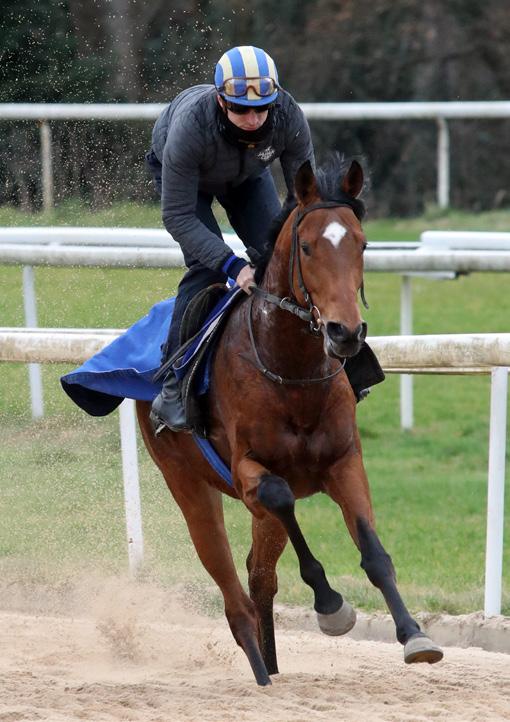
ABOVE: A comprehensive training program should not only focus on the maturation of the horse’s bones but also prioritise the adaptive growth of fascia, ligaments, and muscles.
This structural foundation ensures both stability and balance, allowing for efficient movement and performance under saddle. The propulsion generated by the hind legs is efficiently transferred to the forehand through the back muscles, which are reinforced with robust connective fascia plates, ensuring optimal movement and stability. This structural complexity underscores the need for a training regimen that respects the developmental timing of multiple interrelated systems beyond just the skeletal framework.
While early training offers advantages in developing resilience in young racehorses (they have a high percentage muscle fiber 2X), it also presents risks. The spinal column, particularly the lumbar-sacral junction, endures significant forces during high-speed galloping. Without appropriate conditioning, the vulnerability of these structures can lead to pathologies such as kissing spines or pelvic instability. Their growth plates remain open, making them more susceptible to the impact of high-speed forces, compensatory adaptations to early training stress may manifest as different maladaptive adaptations in connective and skeletal tissues, potentially diminishing longterm performance capabilities.
However, when managed correctly, the high adaptability of collagen structures in young horses allows for positive adaptation. Training introduces controlled tensile and
compressive forces, fostering the development of strong, functional connective tissues. The challenge lies in striking the right balance between stimulus and recovery to optimise longterm soundness and athletic potential.
Experienced trainers have an intuitive understanding of the complex relationships between tissues and biomechanics, a knowledge that is often honed through years of careful observation and practical experience. This tacit expertise is fundamental in shaping training strategies that take into account the horse’s overall development. A comprehensive training program should not only focus on the maturation of the horse’s bones but also prioritise the adaptive growth of fascia, ligaments, and muscles. By doing so, trainers ensure that young racehorses develop in a way that is aligned with their evolving physiological capabilities, promoting balanced growth and minimising the risk of injury. This holistic approach allows for the optimal performance and longevity of the racehorse, fostering a more sustainable path toward peak athleticism.
The evolution of equine training methodologies has greatly benefited from recent advancements in scientific understanding, offering a more refined approach to racehorse development. By incorporating biotensegrity principles into training programs, a more comprehensive view of the horse’s physical structure and function emerges, shifting the focus from skeletal maturity alone to a broader understanding of the interconnected roles of fascia, connective tissues, and adaptive biomechanics. This shift in perspective allows for the cultivation of healthier, more resilient athletes who can perform at their peak while minimising the risk of injury.
With equine welfare at the forefront, adopting a holistic approach to racehorse development—one that blends cuttingedge biomechanics, physiological insights, and traditional training wisdom—will pave the way for more sustainable, ethical practices within the industry. Such an approach not only enhances performance in the short term but also ensures the longevity and well-being of racehorses throughout their careers. Ultimately, by embracing this integrated perspective, the racing industry can promote a future where both the performance and welfare of horses are prioritised, leading to a more ethical and effective standard of training.
References:
• Levin, S. (Biotensegrity: www.biotensegrity.com)
• Clayton, H. M. (1991). Conditioning Sport Horses. Sport Horses Publications.
• Adstrup, S. (2021). The Living Wetsuit. Indie Experts, P/L Austrasia.
• Schultz, R. M., Due, T., & Elbrond, V. S. (2021). Equine Myofascial Kinetic Lines
• Bennett, D. (2008). Timing and Rate of Skeletal Maturation in Horses
• Rogers, C. W., Gee, E. K., & Dittmer, K. E. (2021). Growth and Bone Development in Horses
• Ruddock, I. (2023). Equine Anatomy in Layers
• Myers, T. W. (2009). Anatomy Trains (2nd Edition). Churchill Livingstone.
• Diehl, M. (2018). Biotensegrity
• Kuhn, T. S. (1962). The Structure of Scientific Revolutions. University of Chicago Press.
• Tami Elkayam Equine Bodywork – www.equinetensegrity.com.




